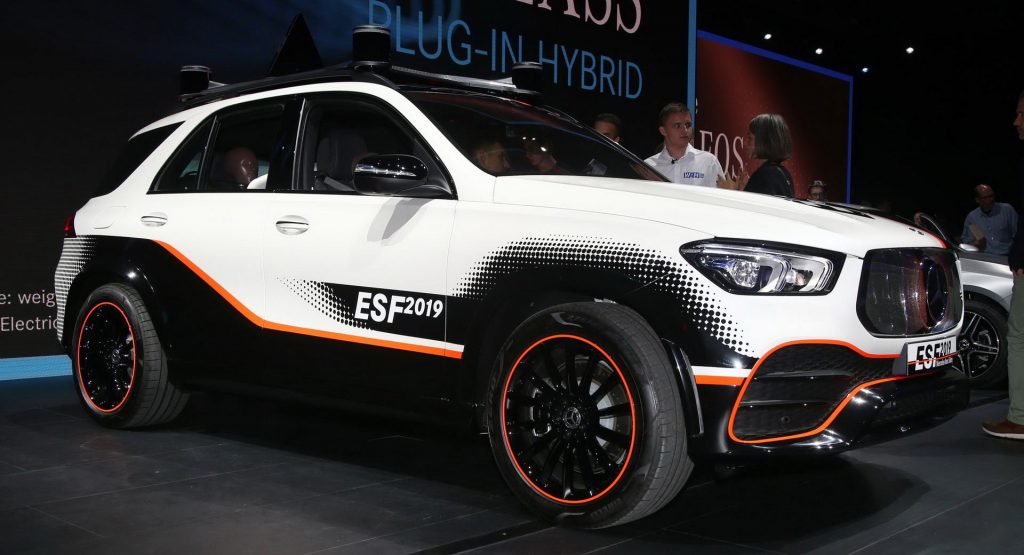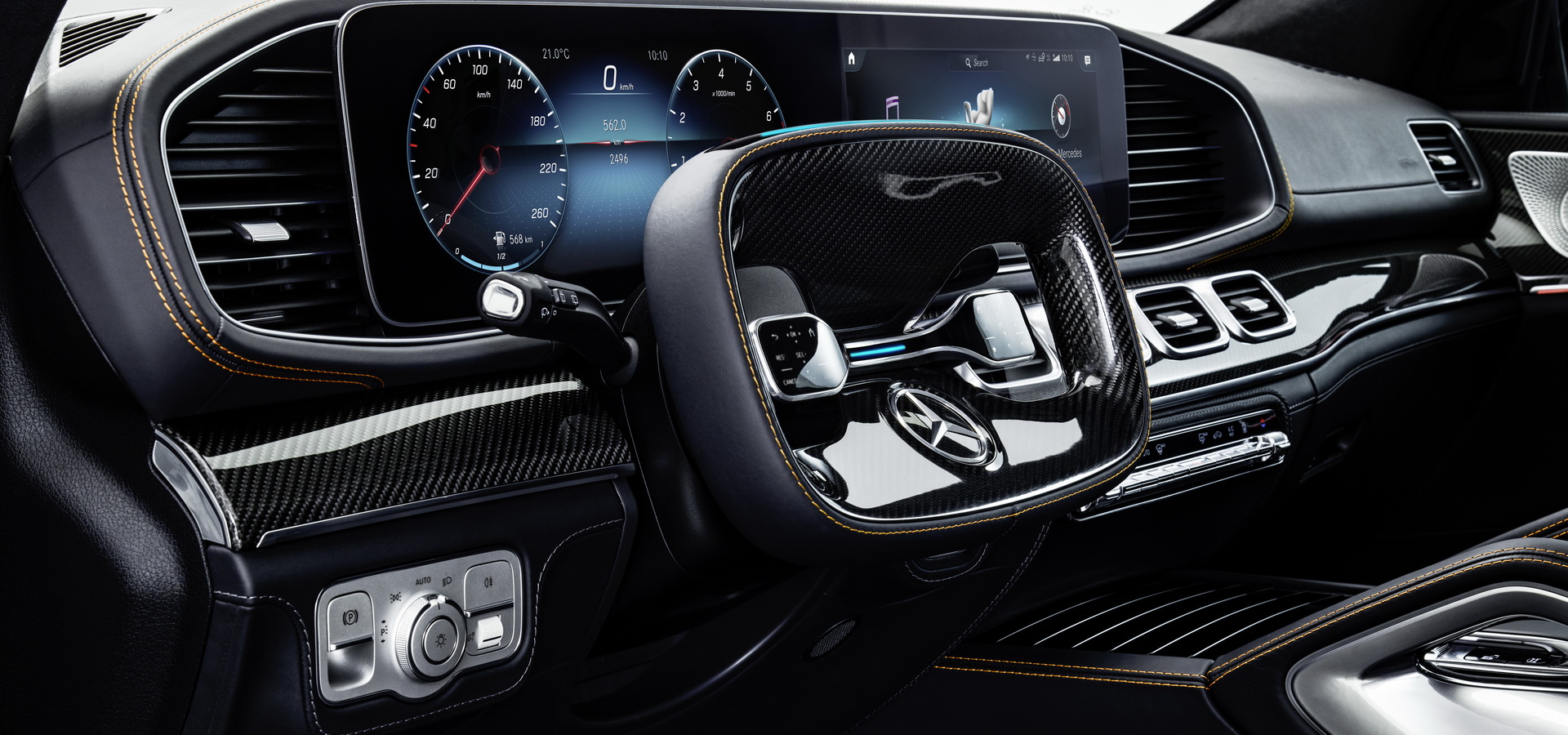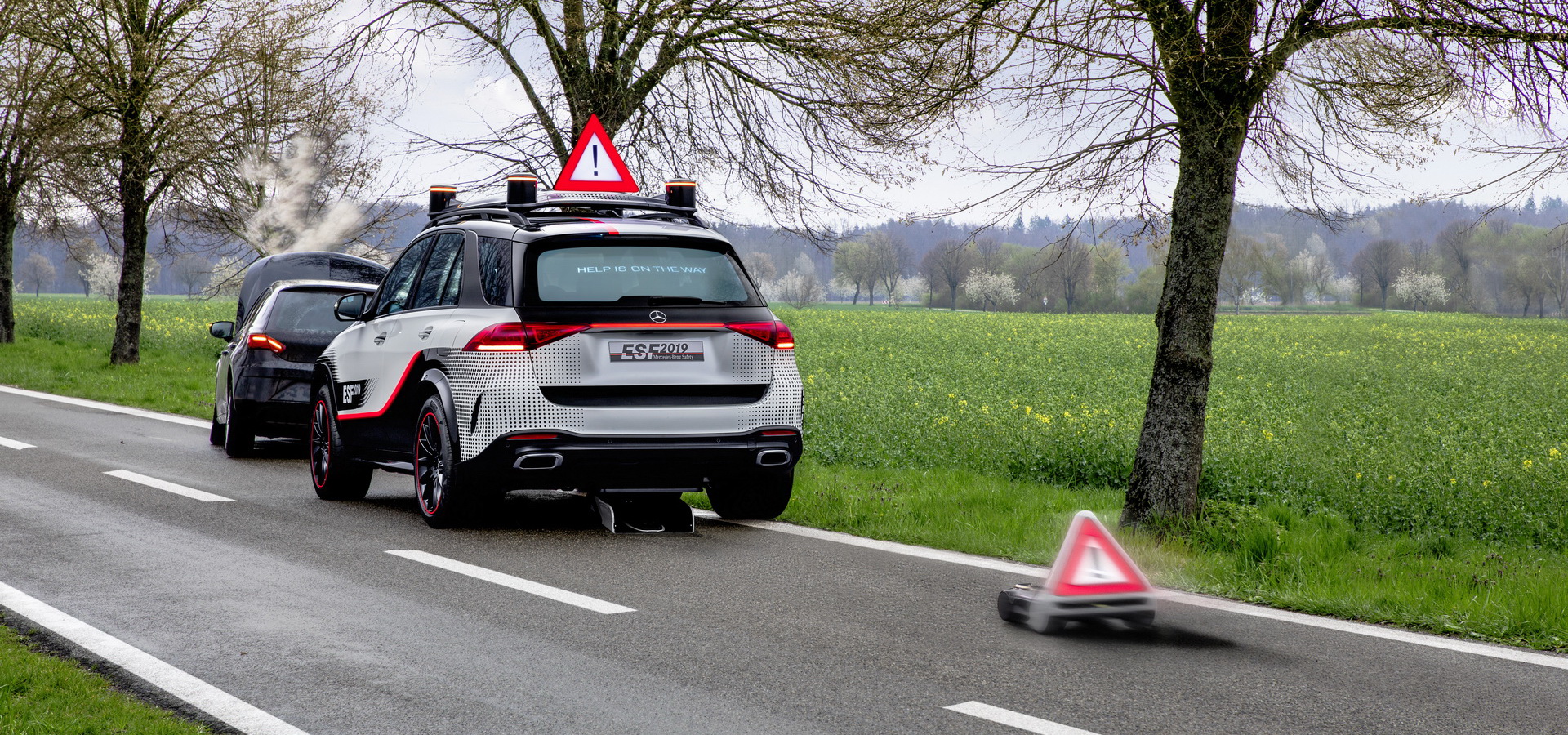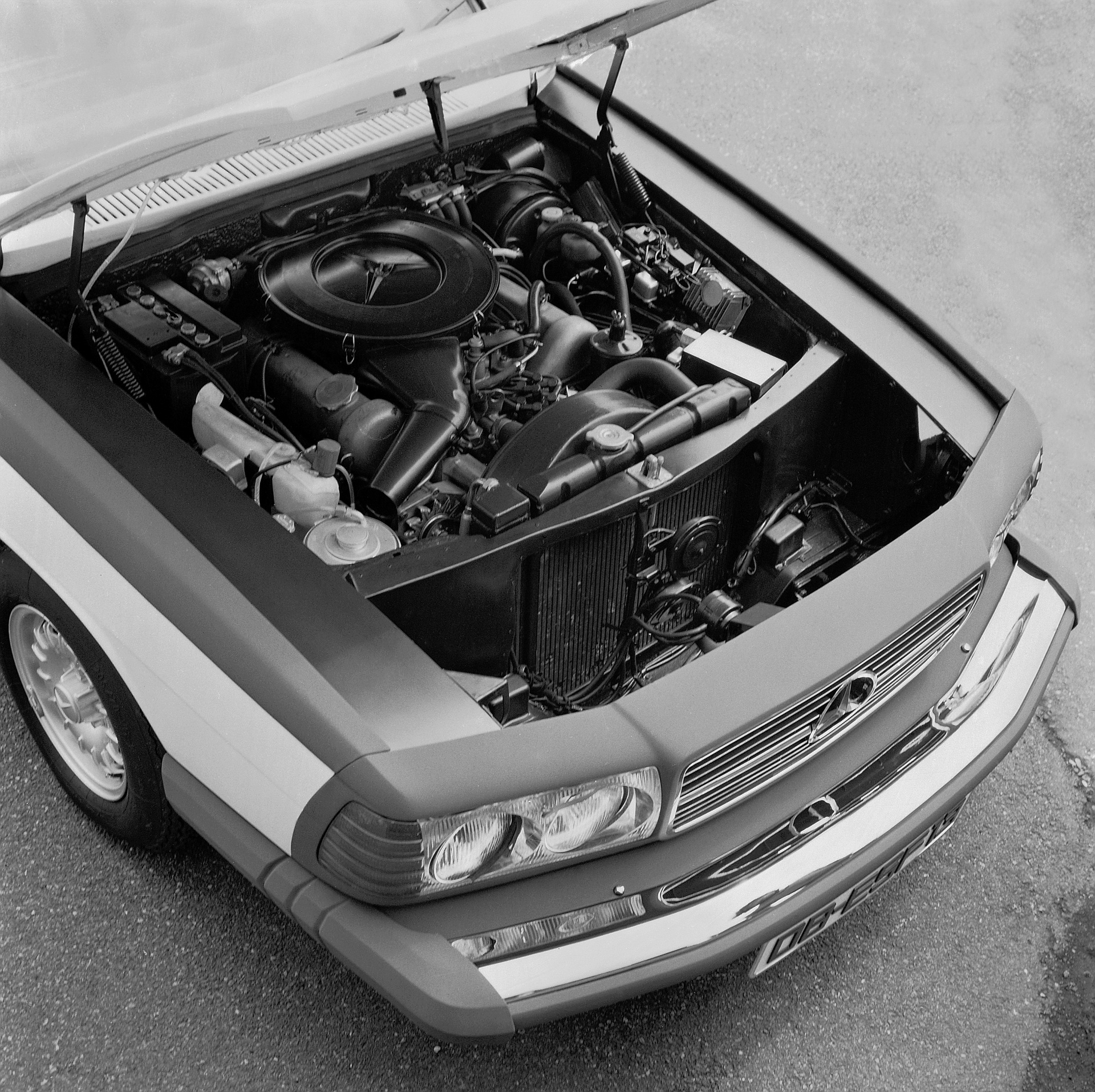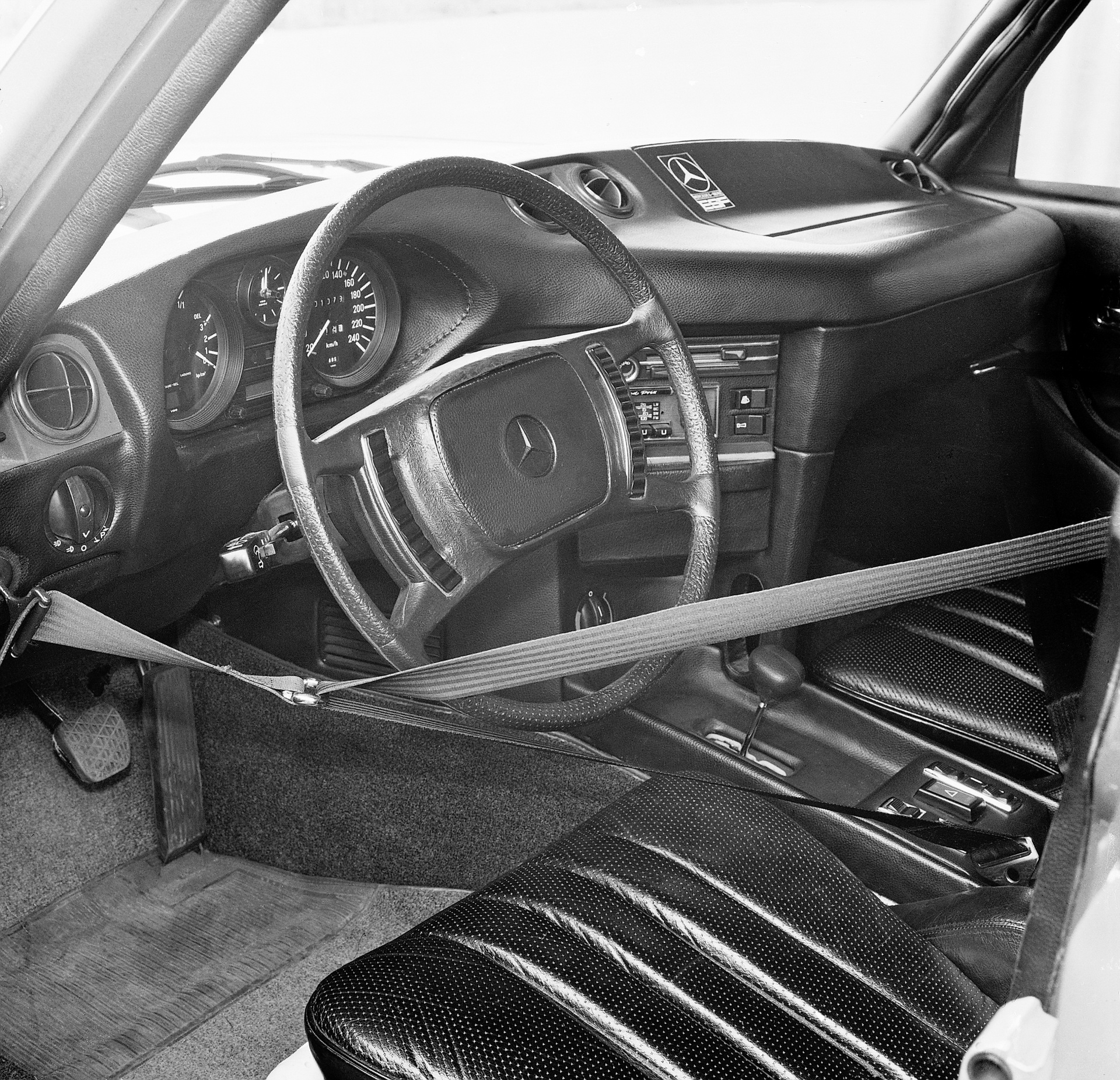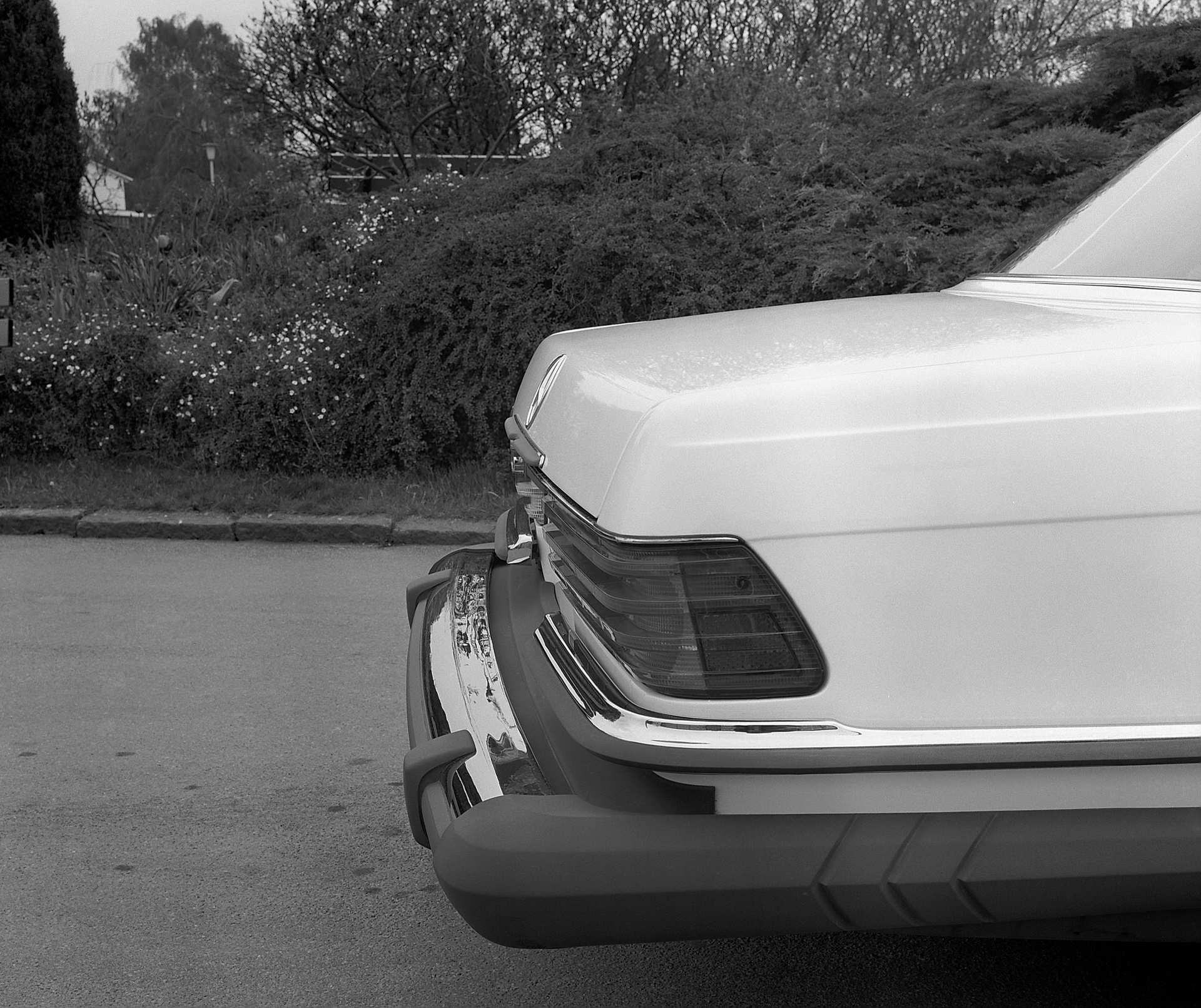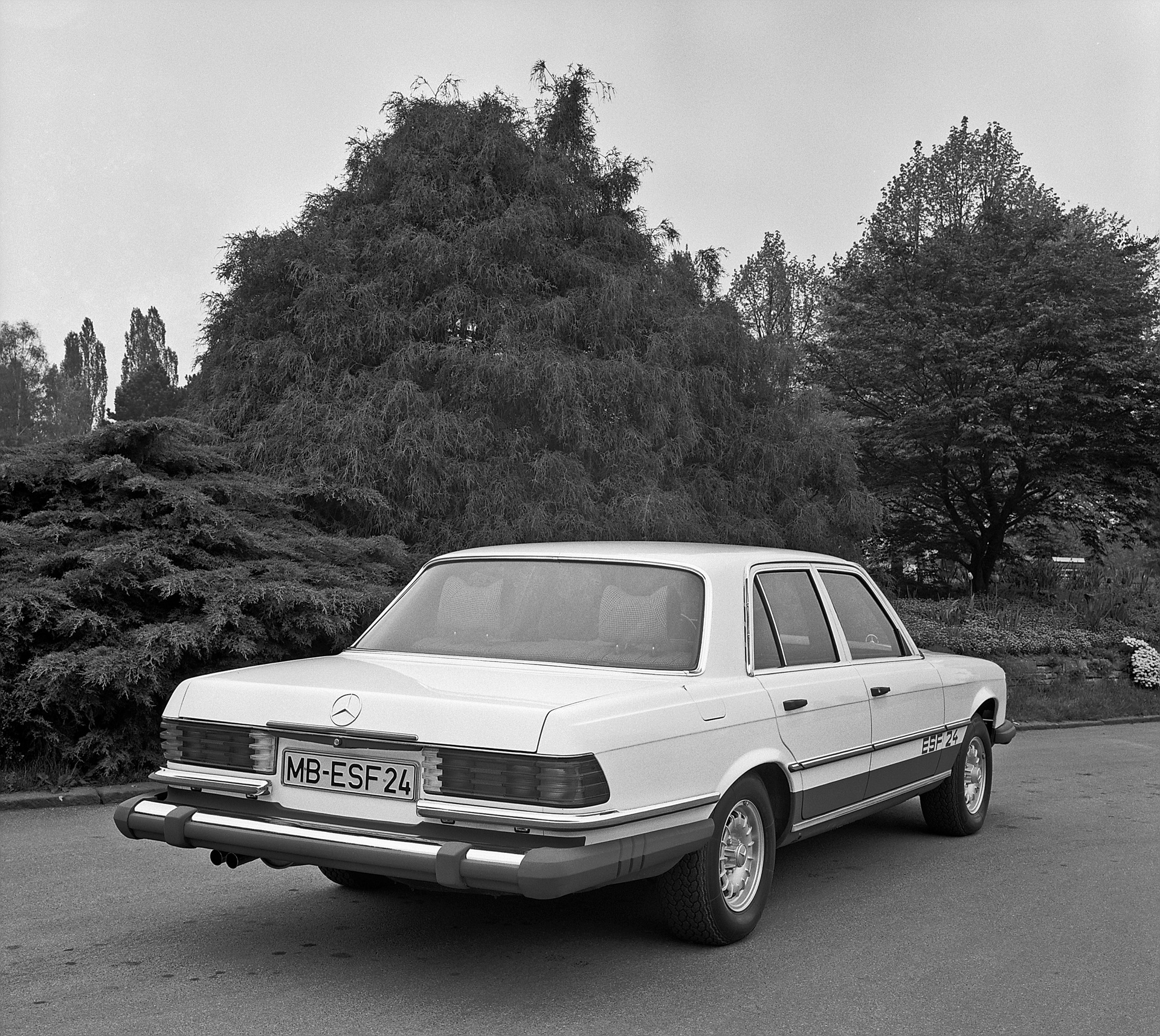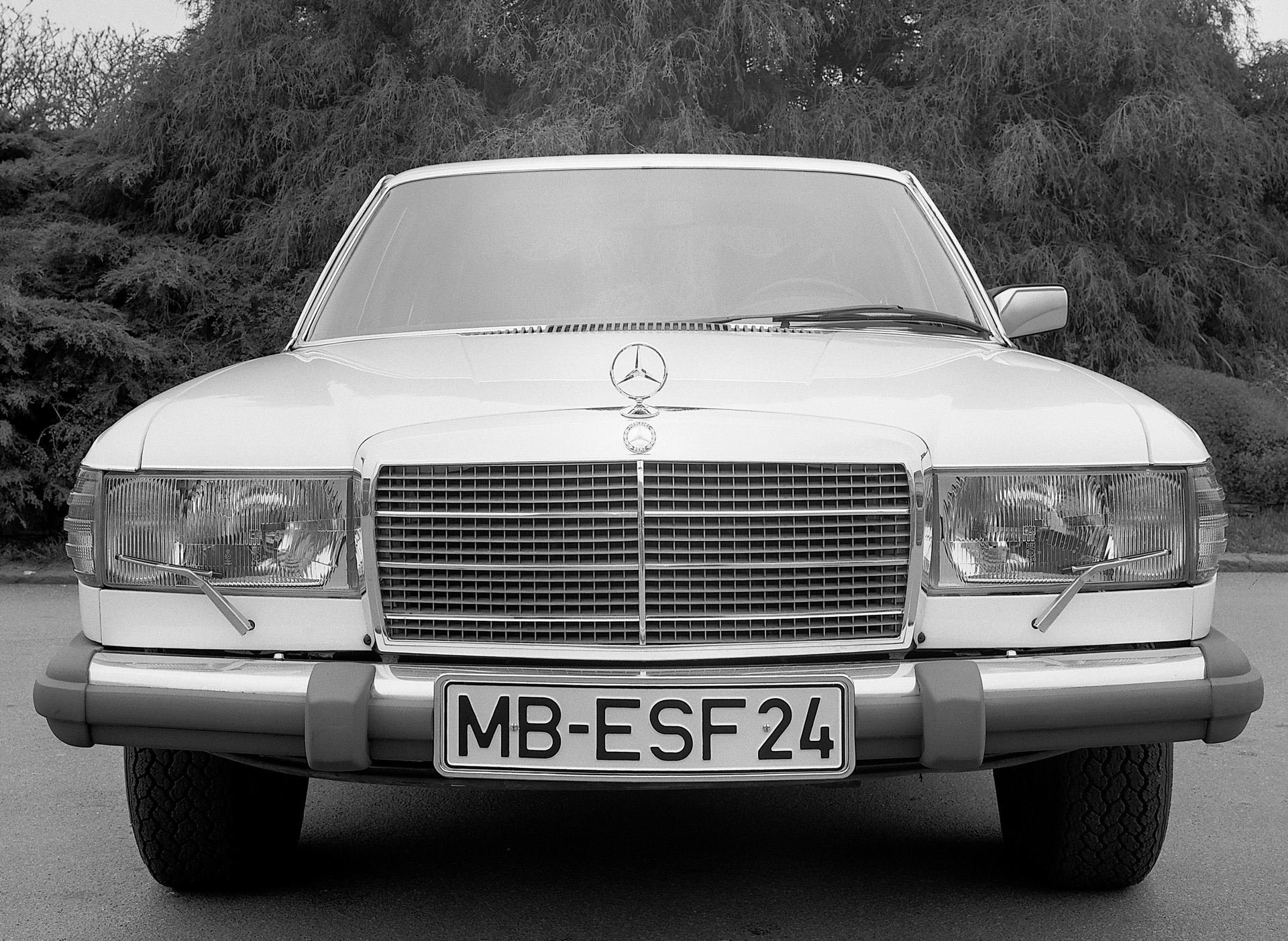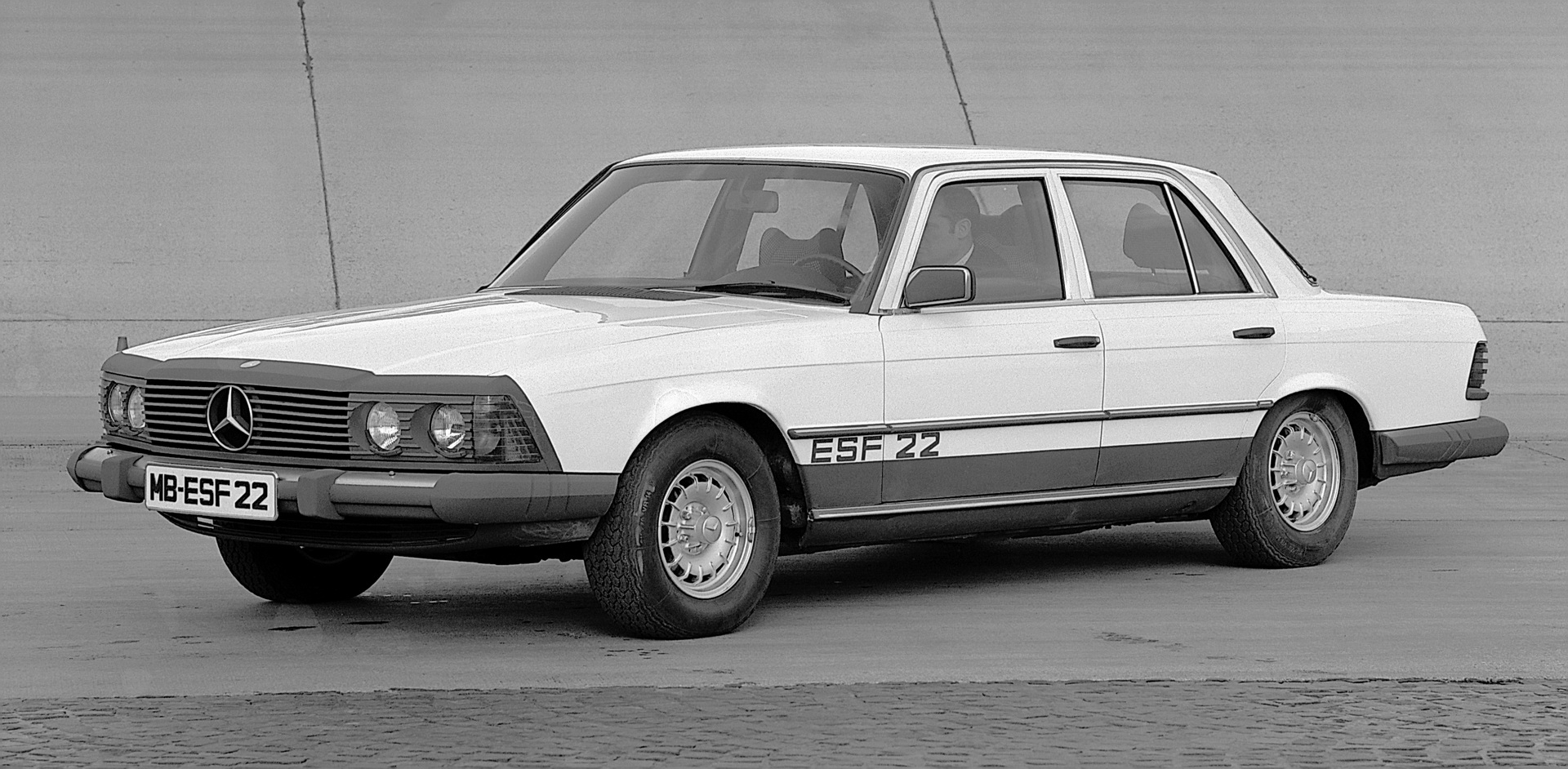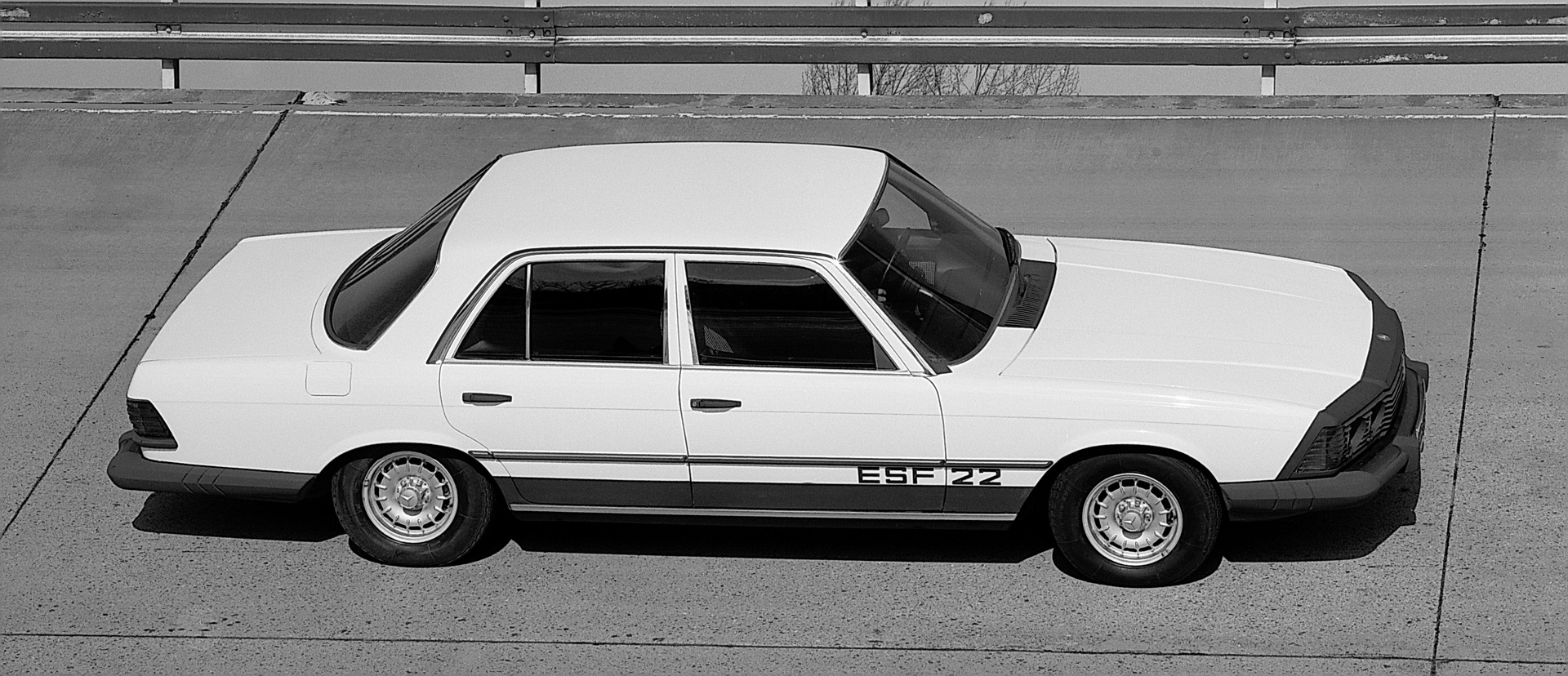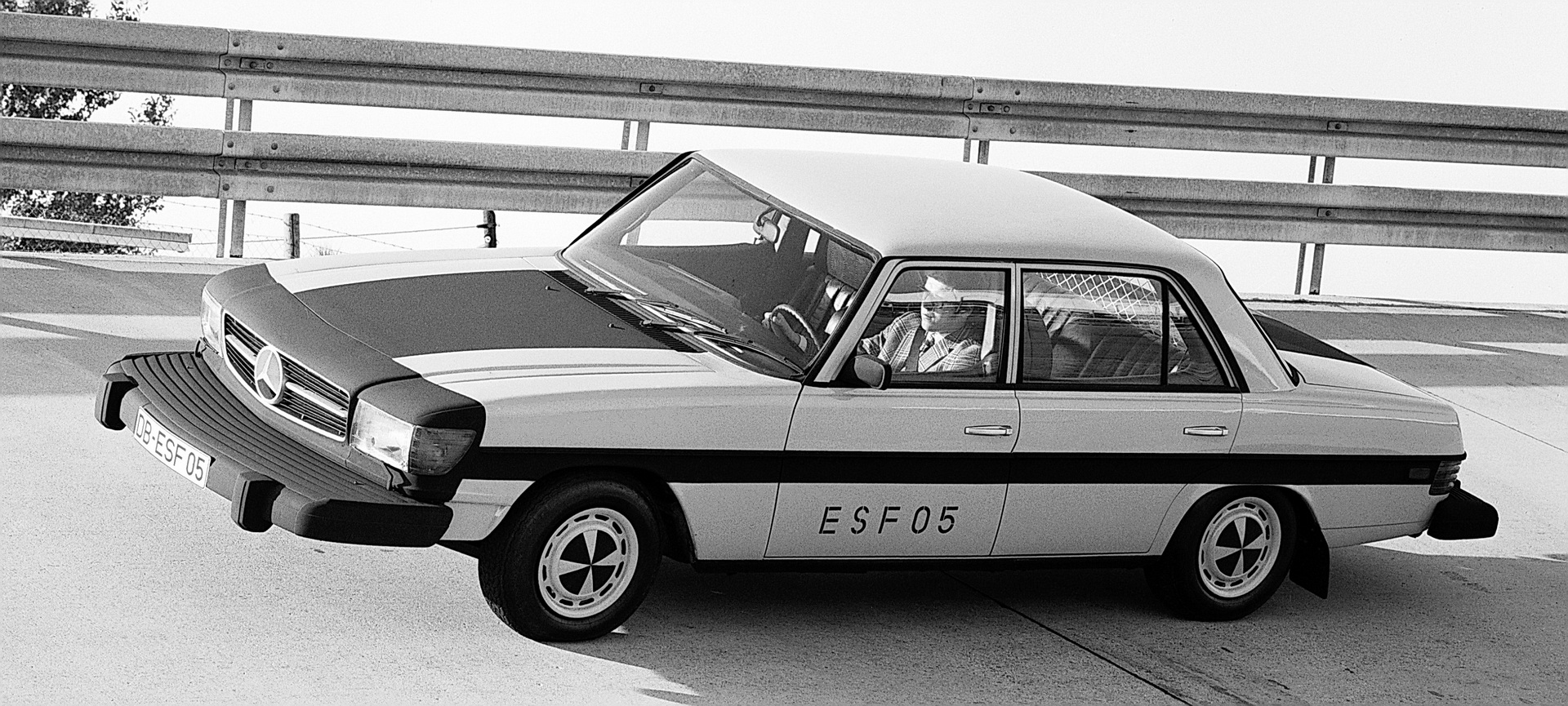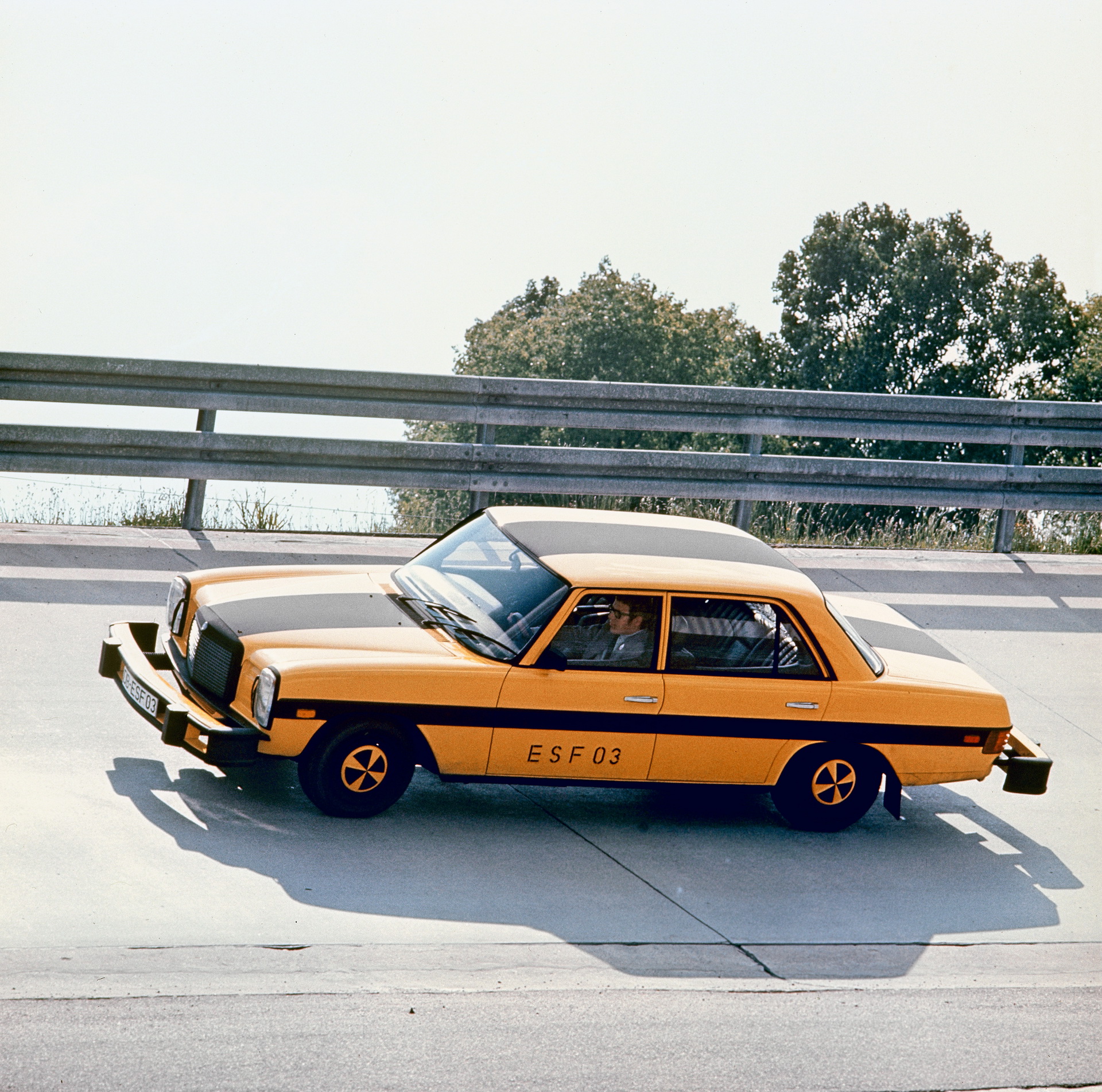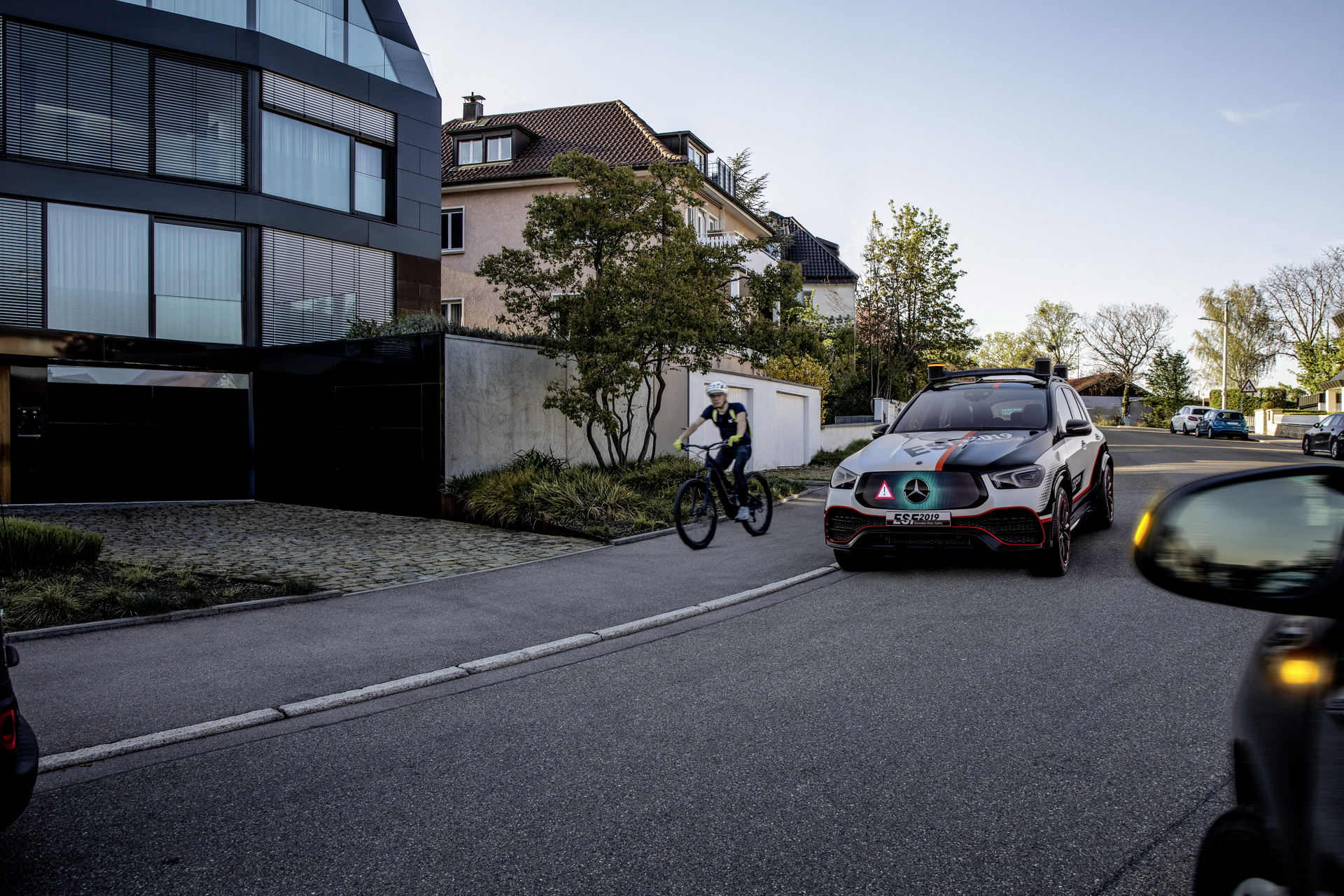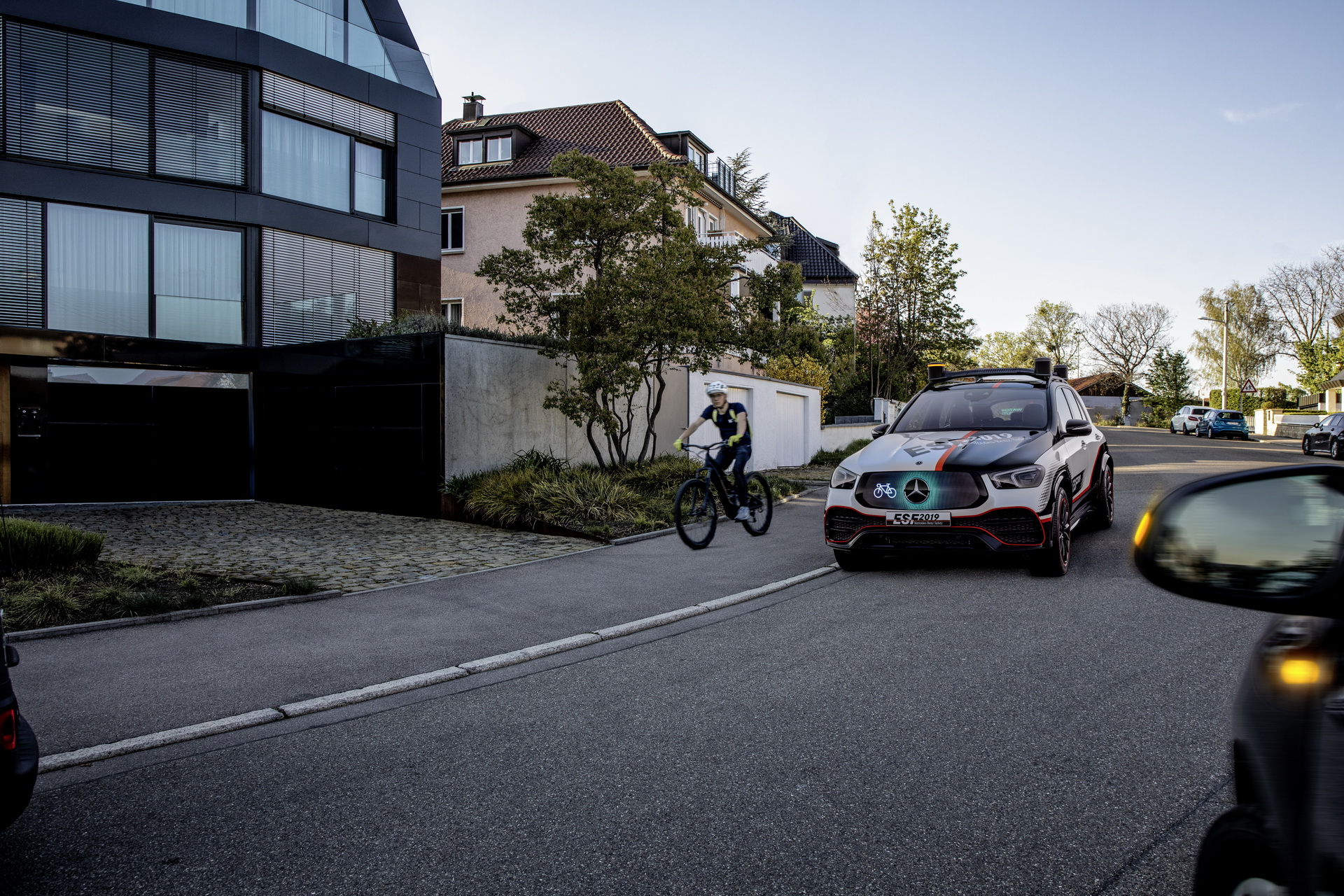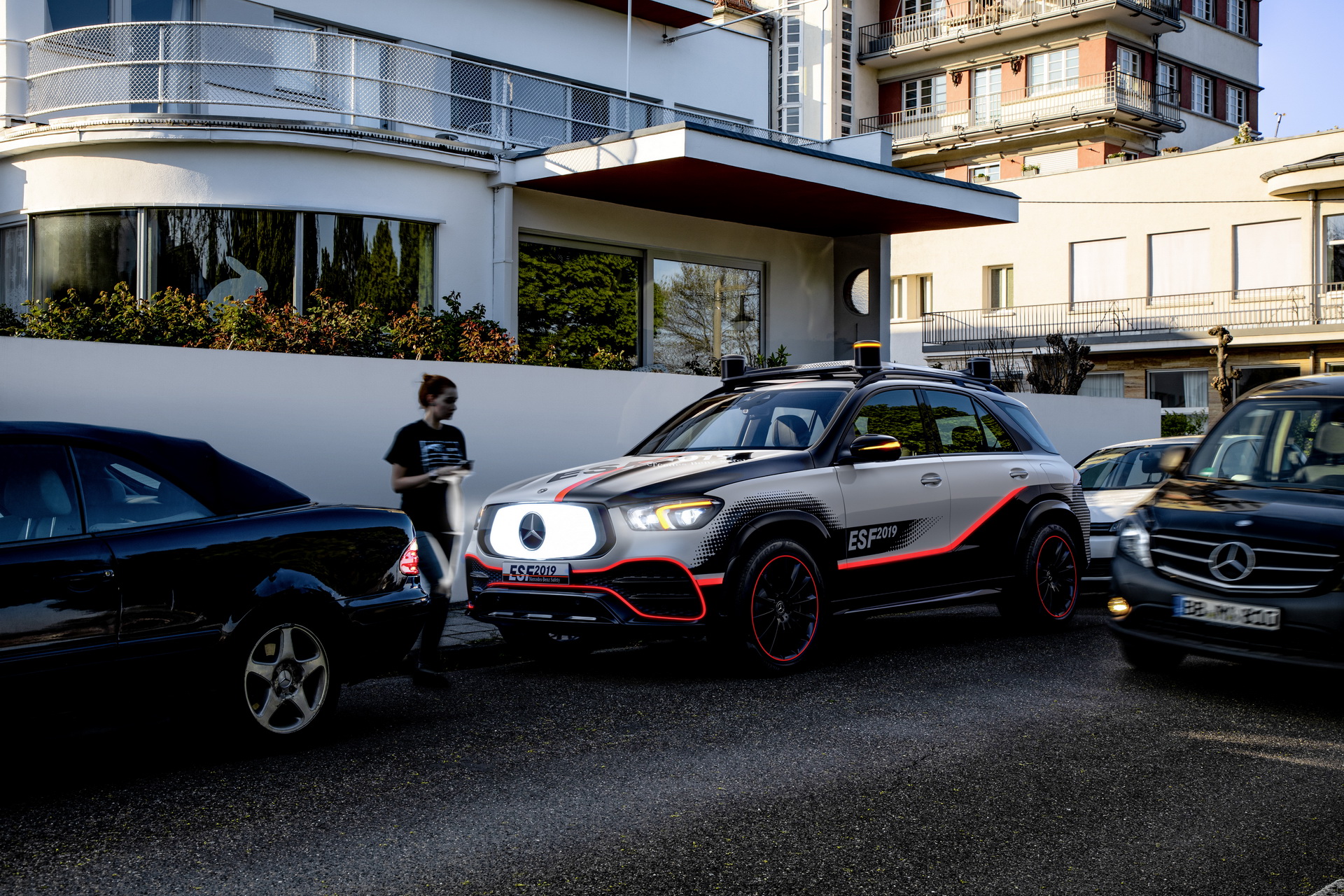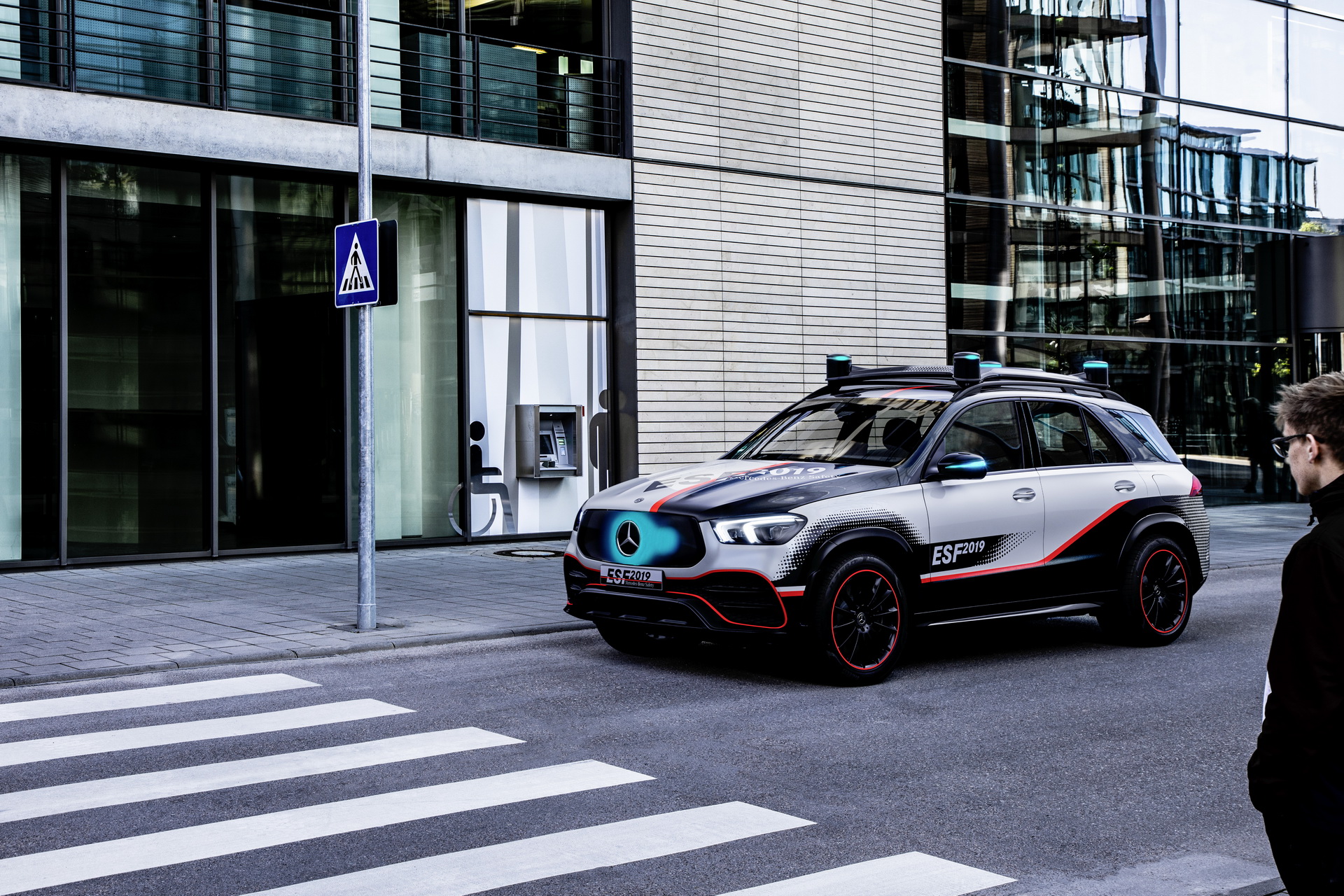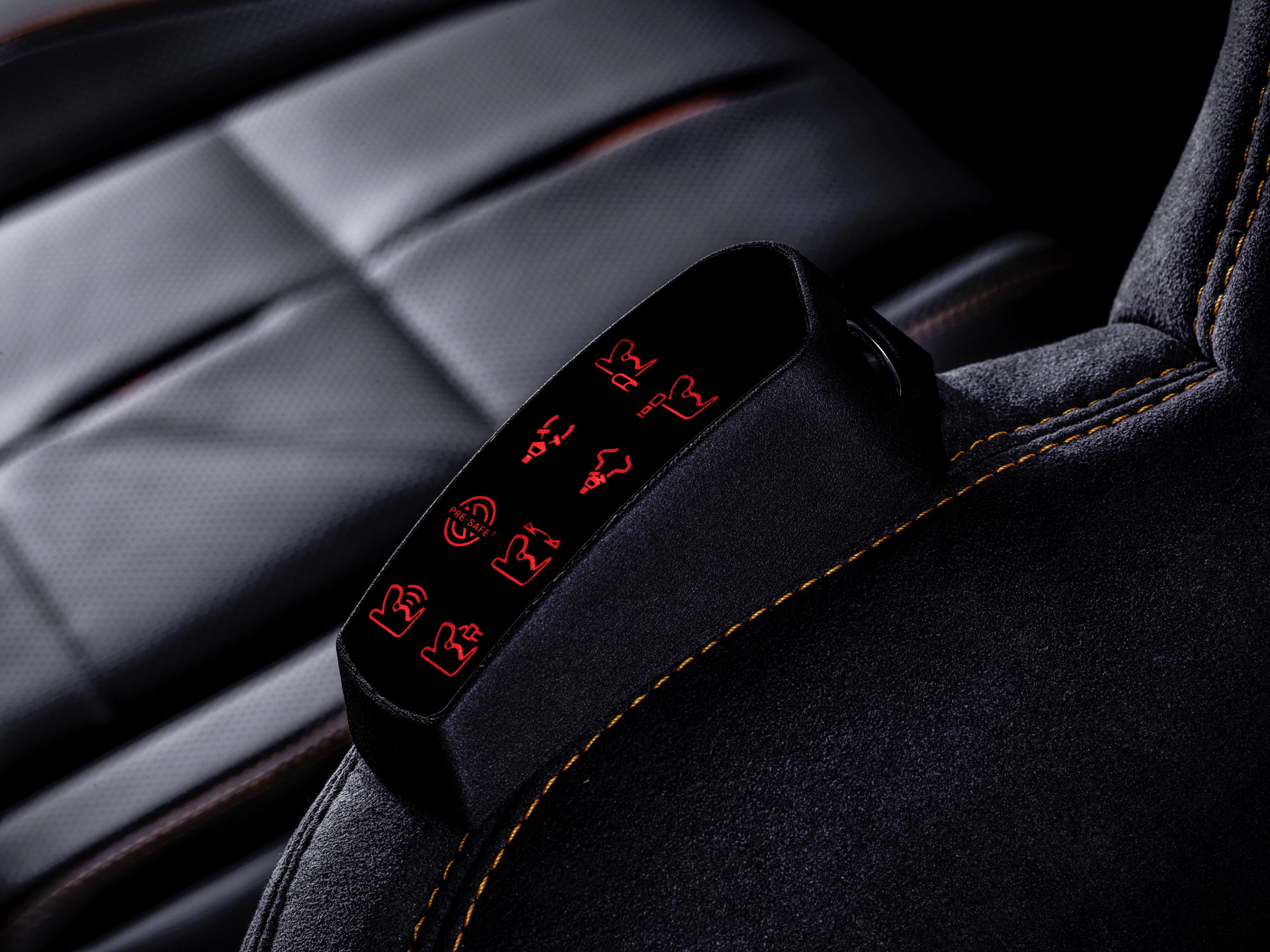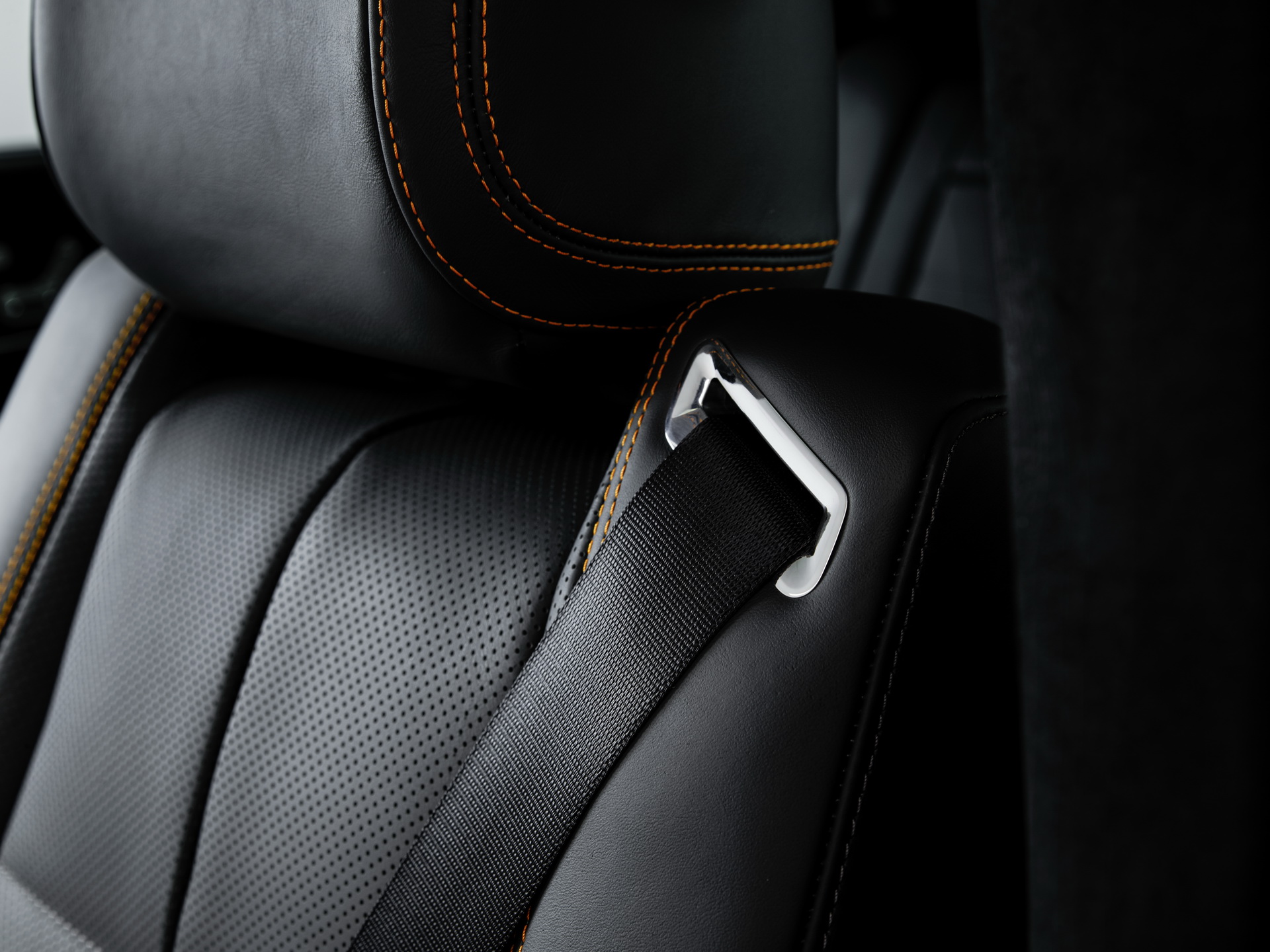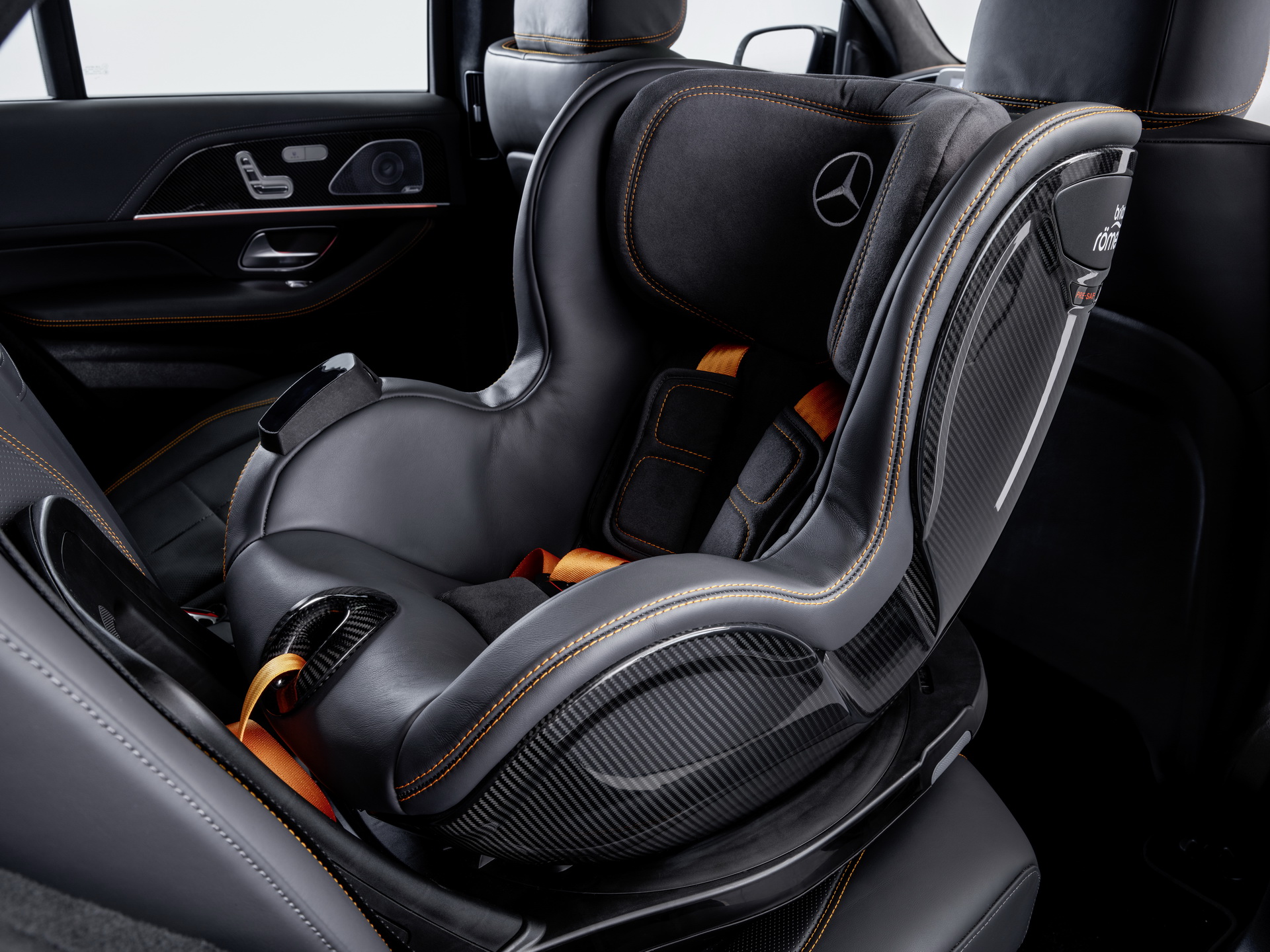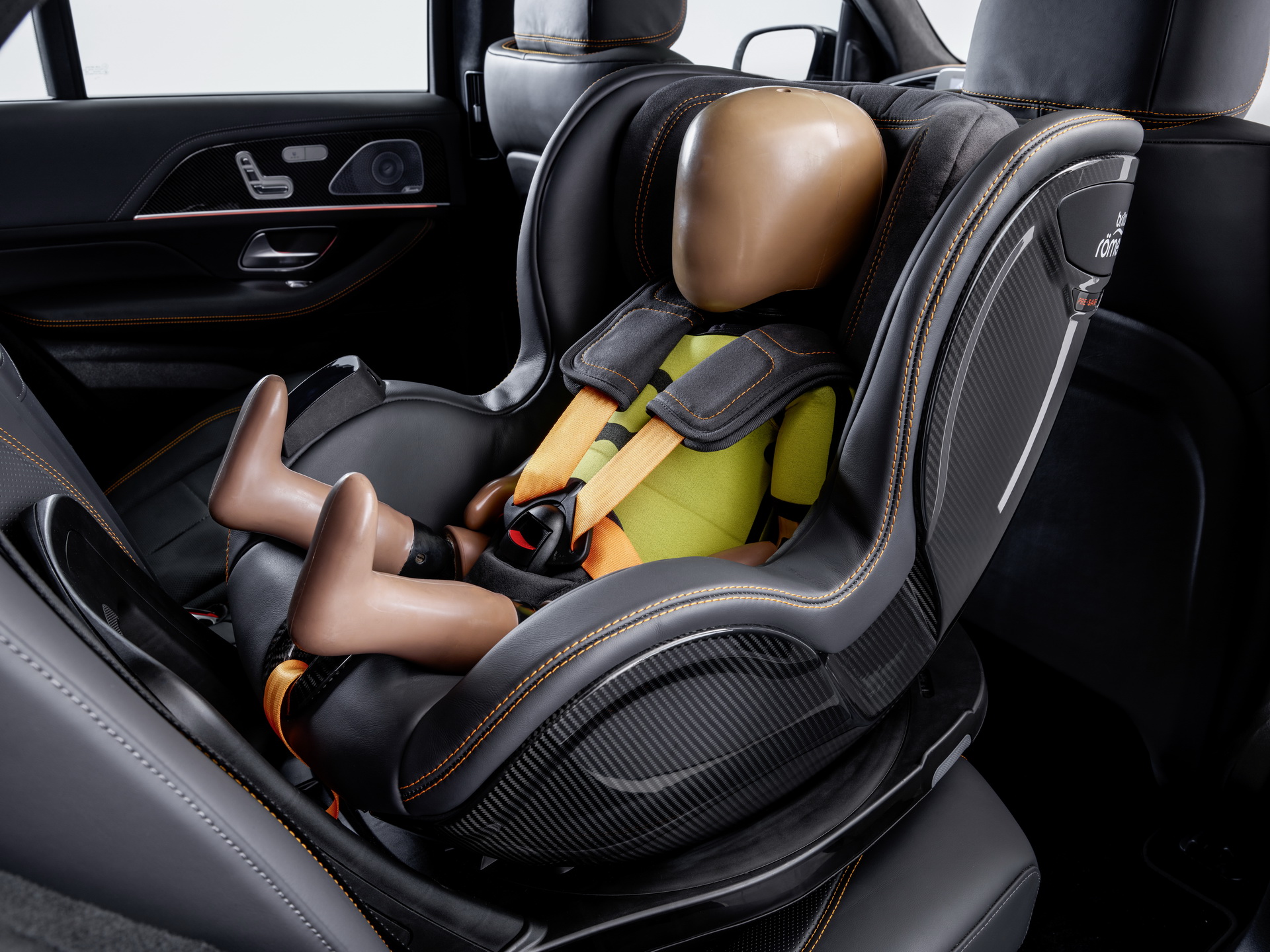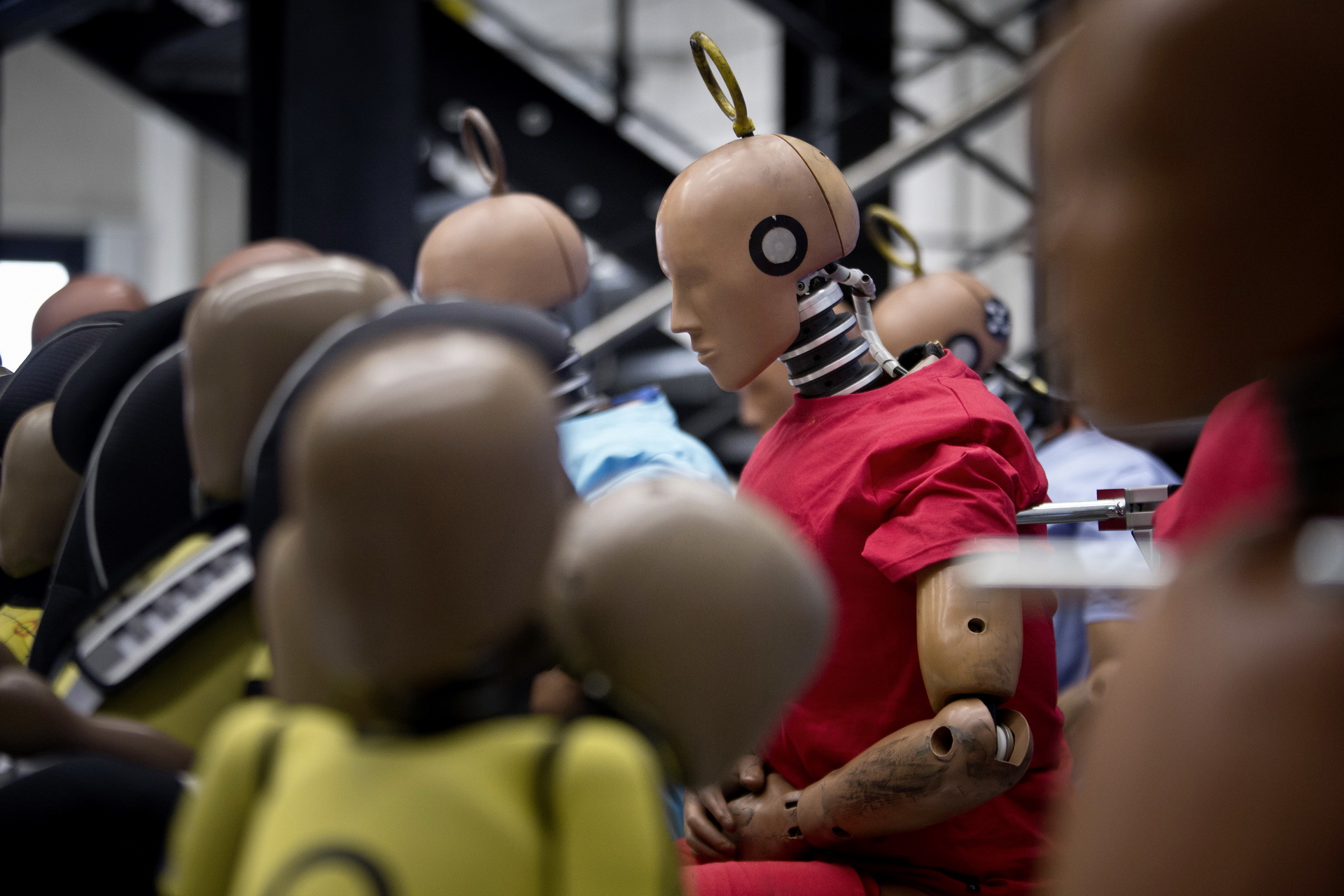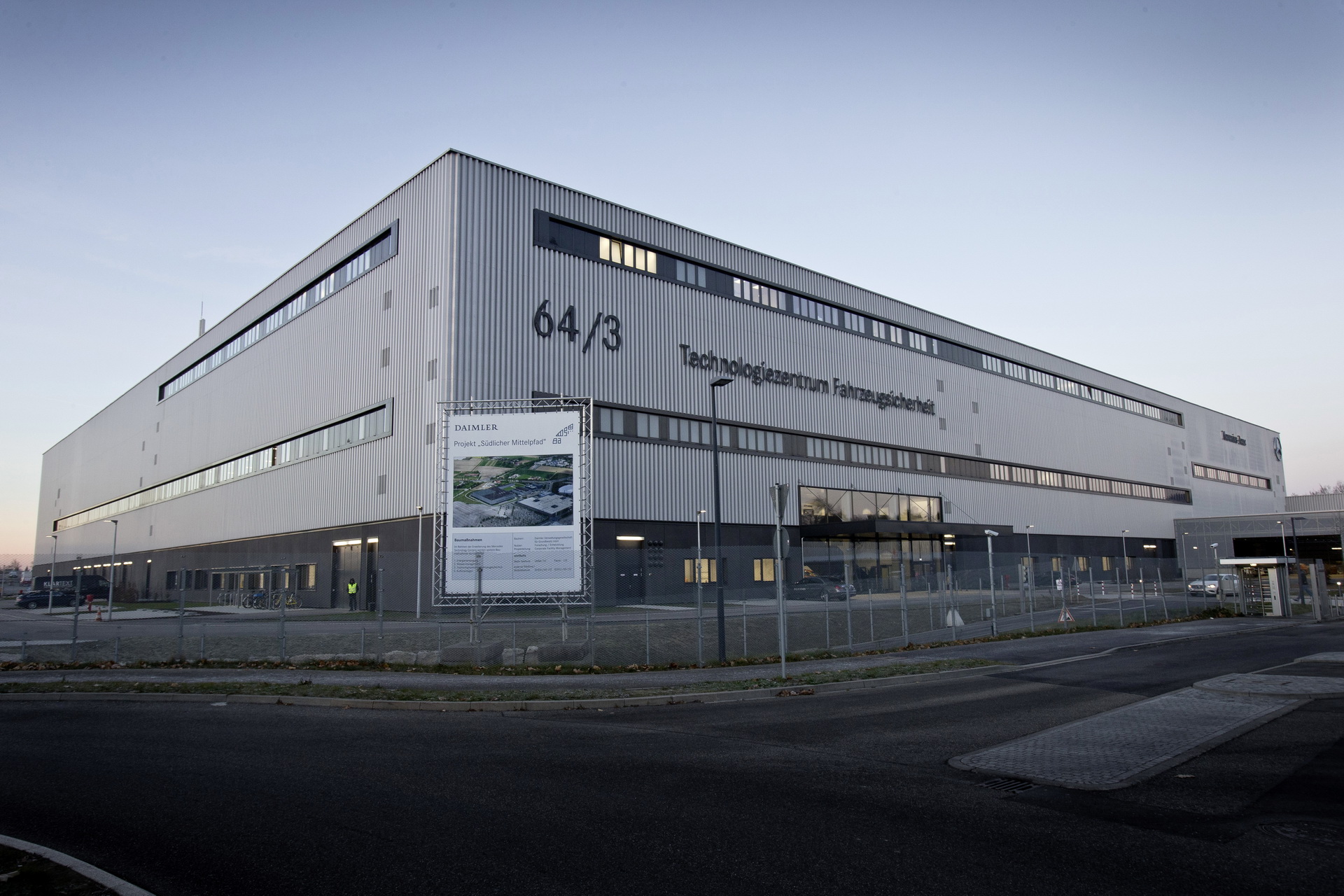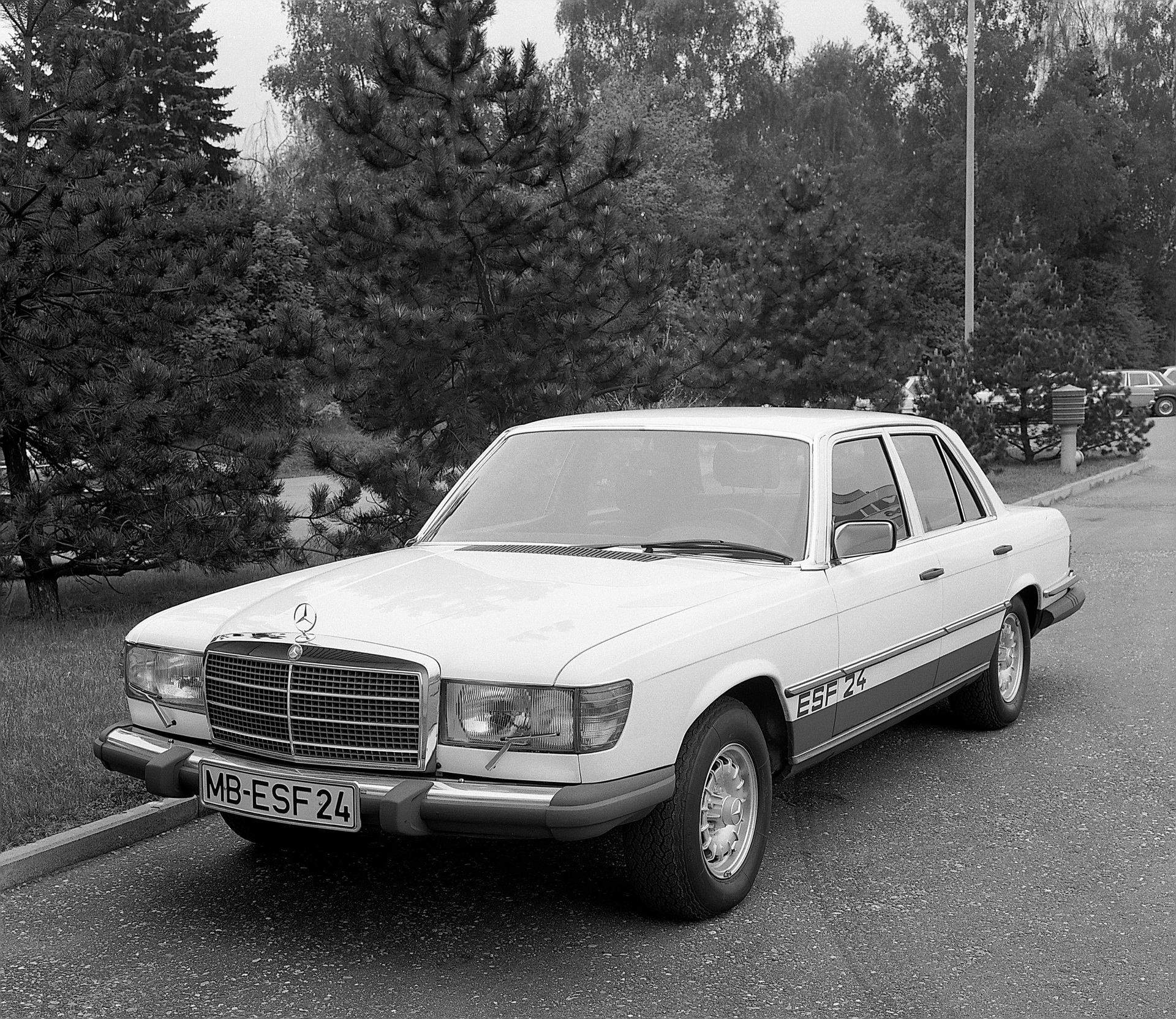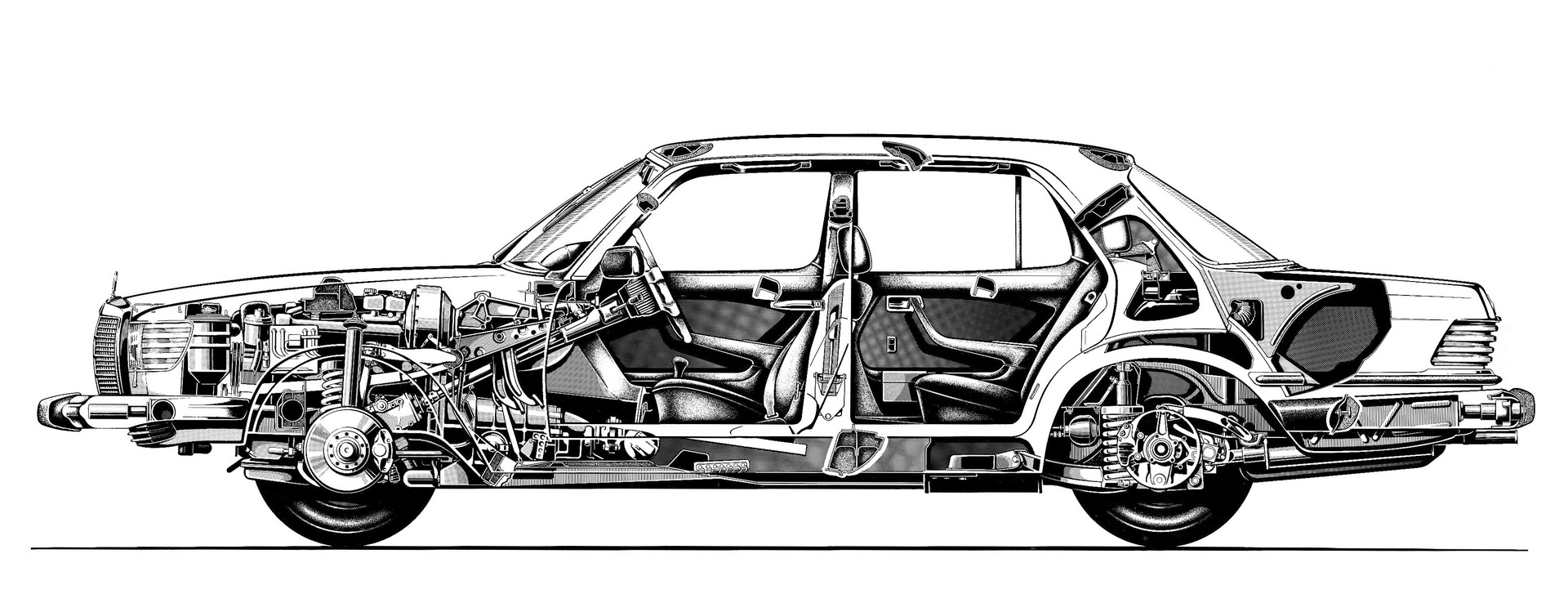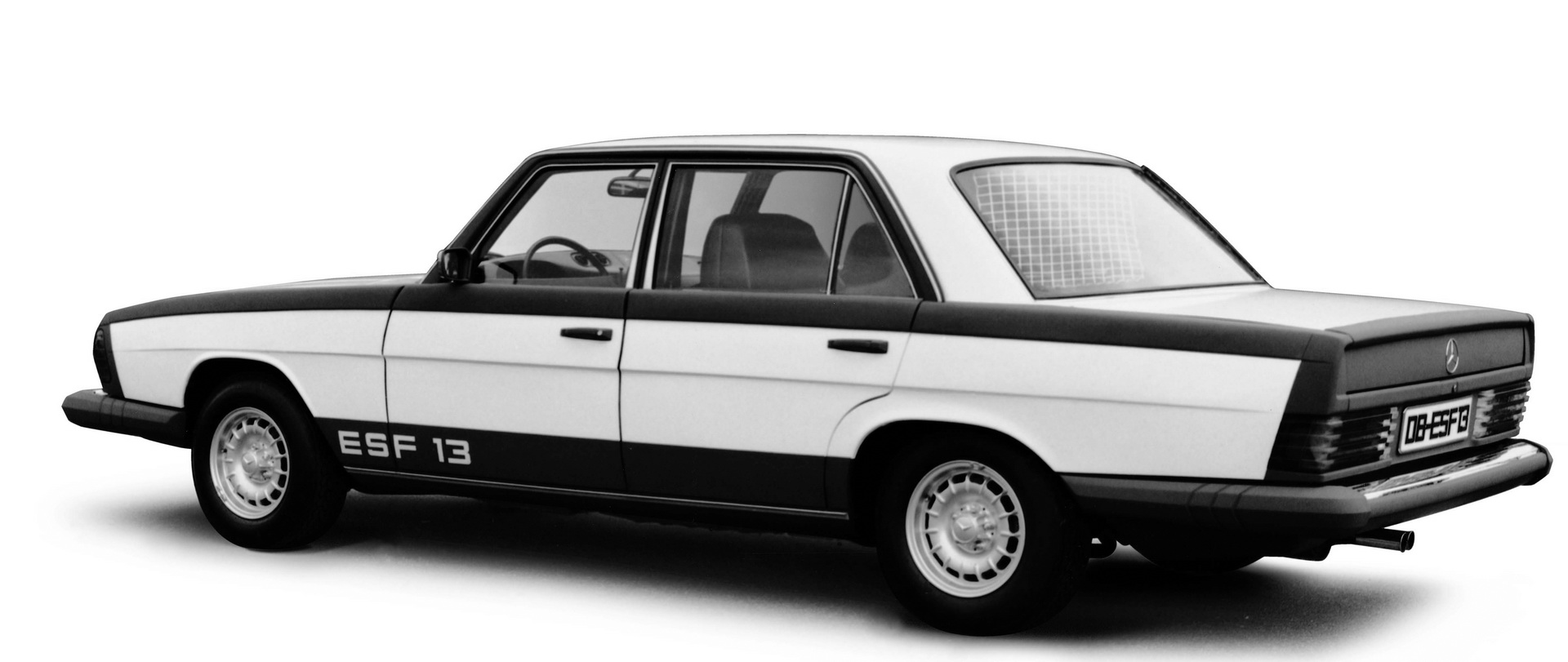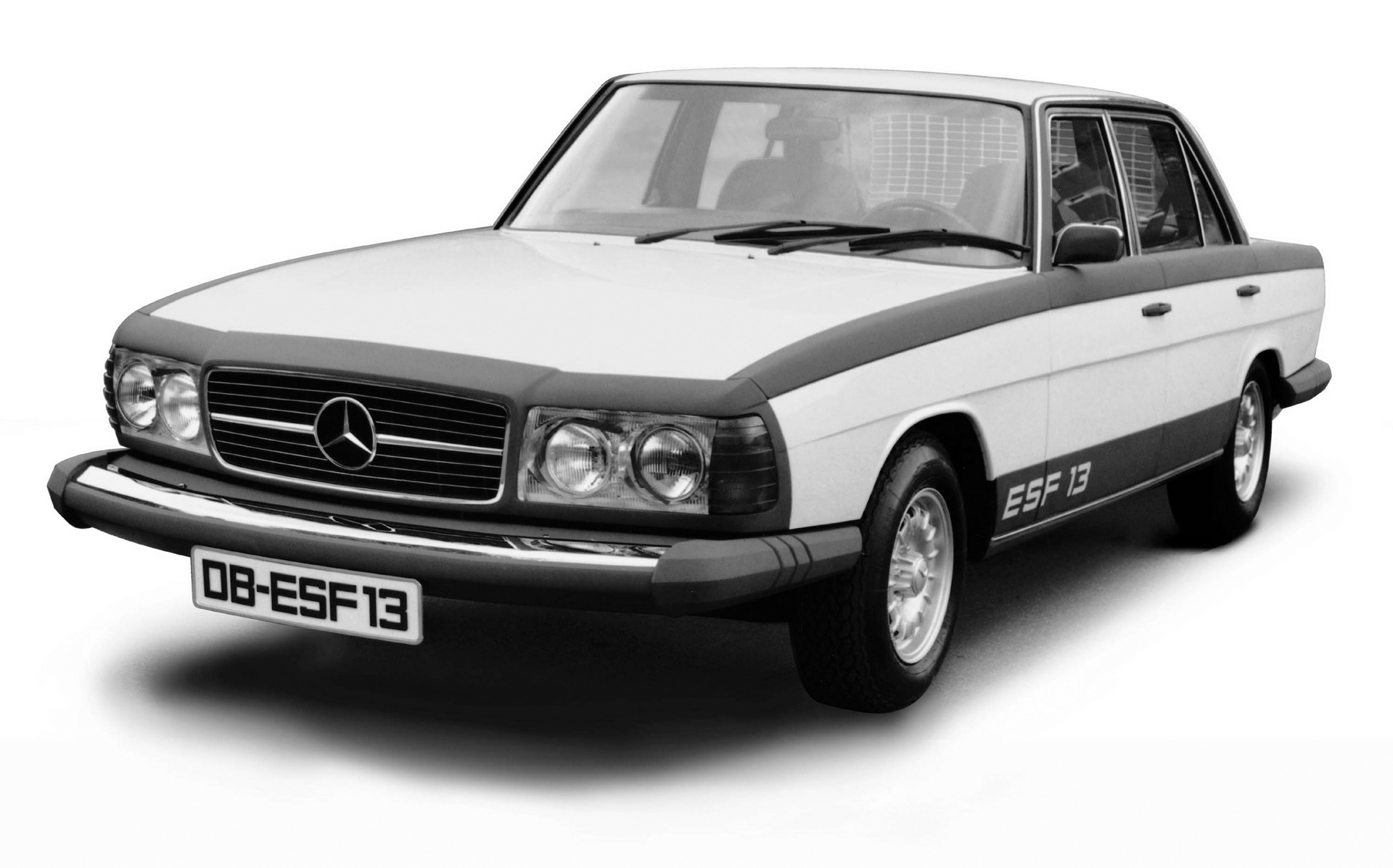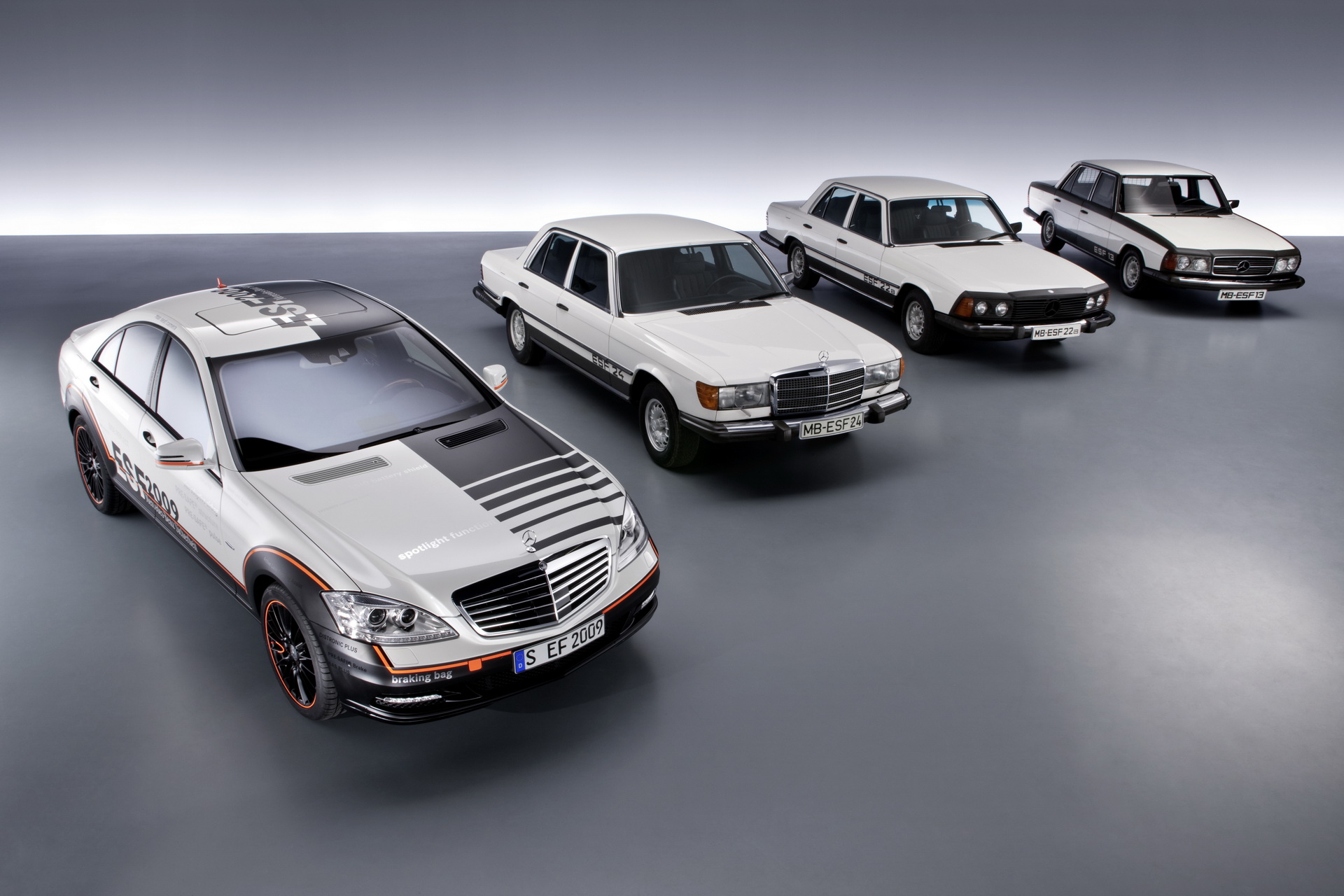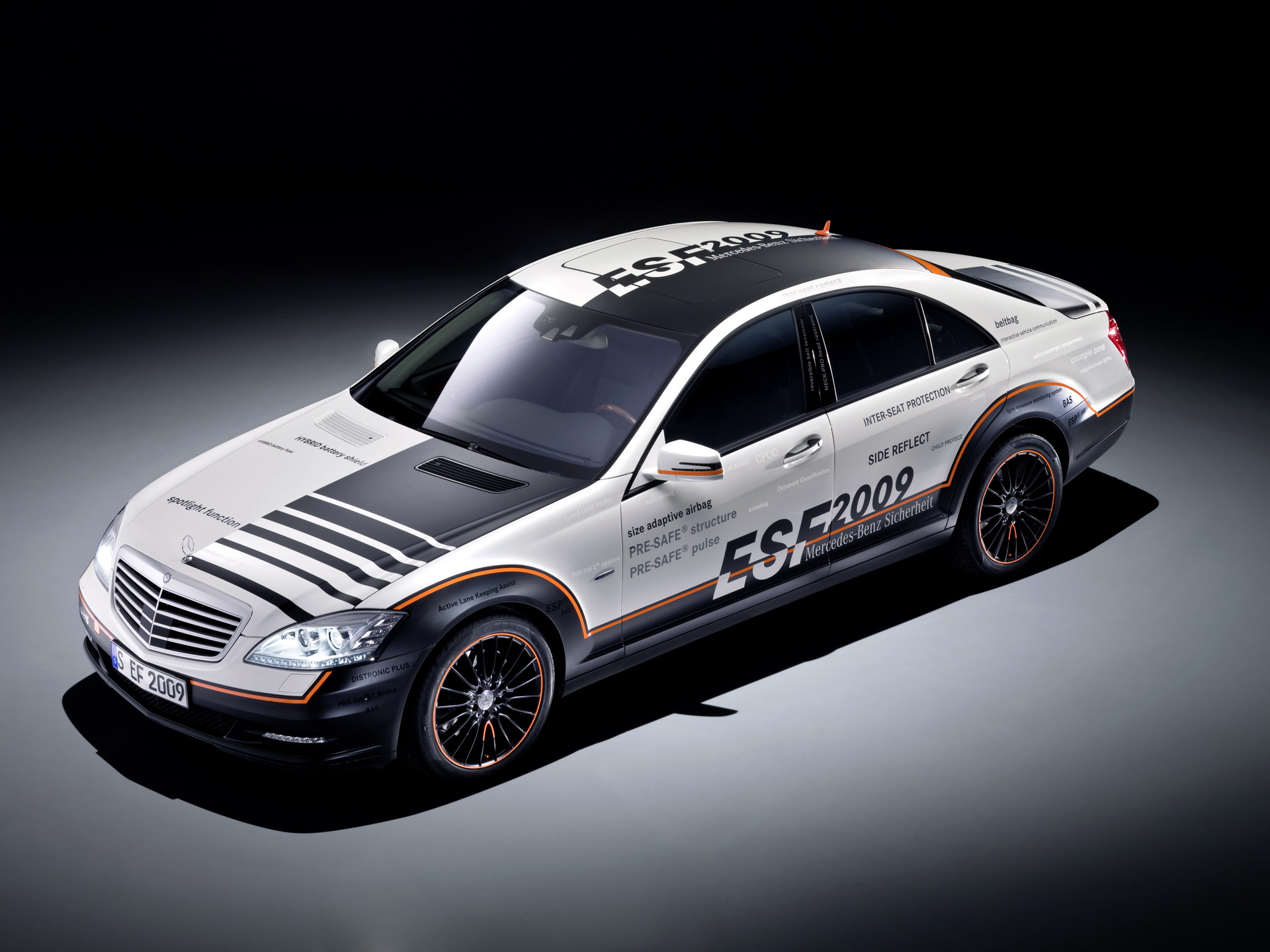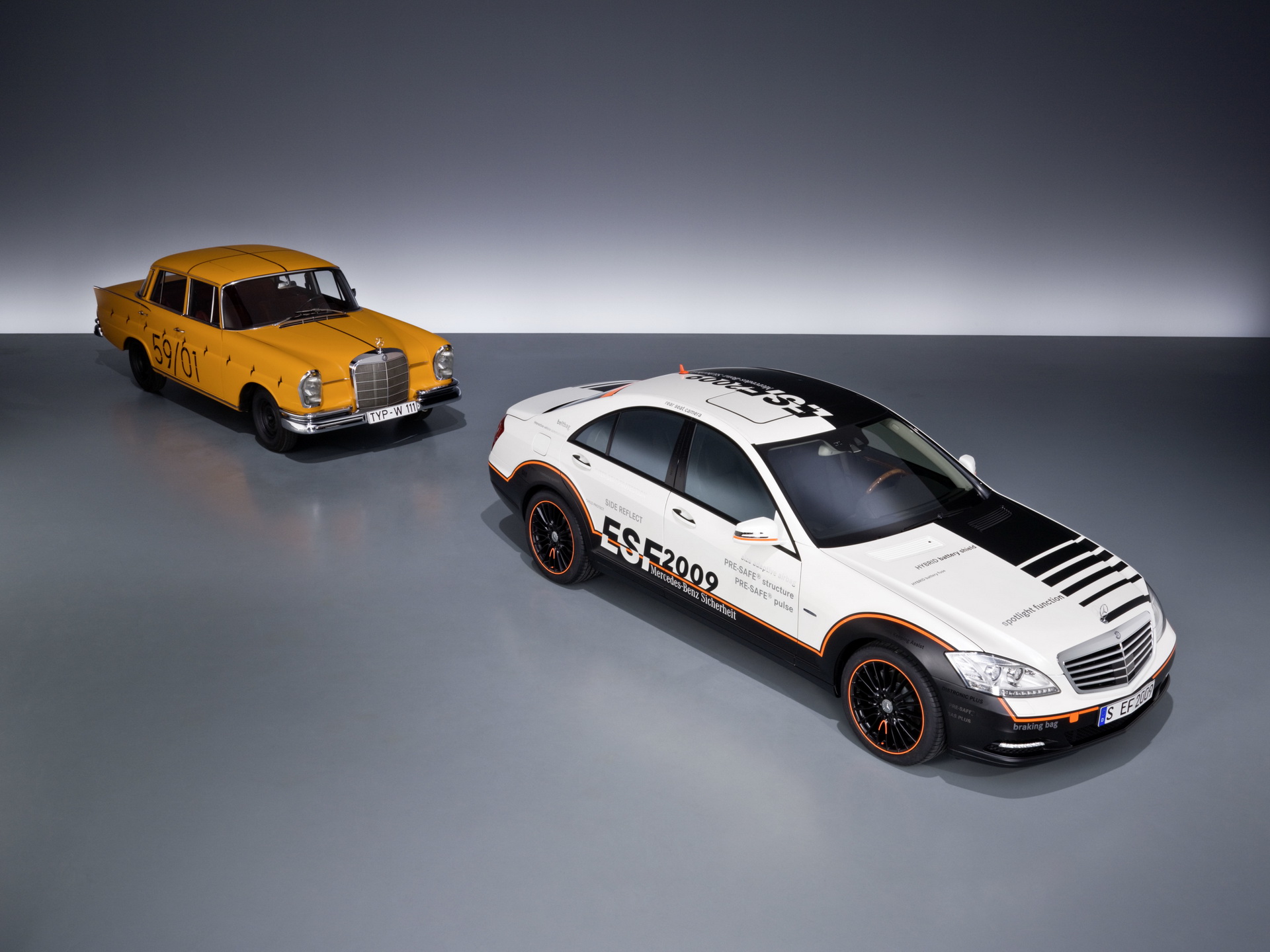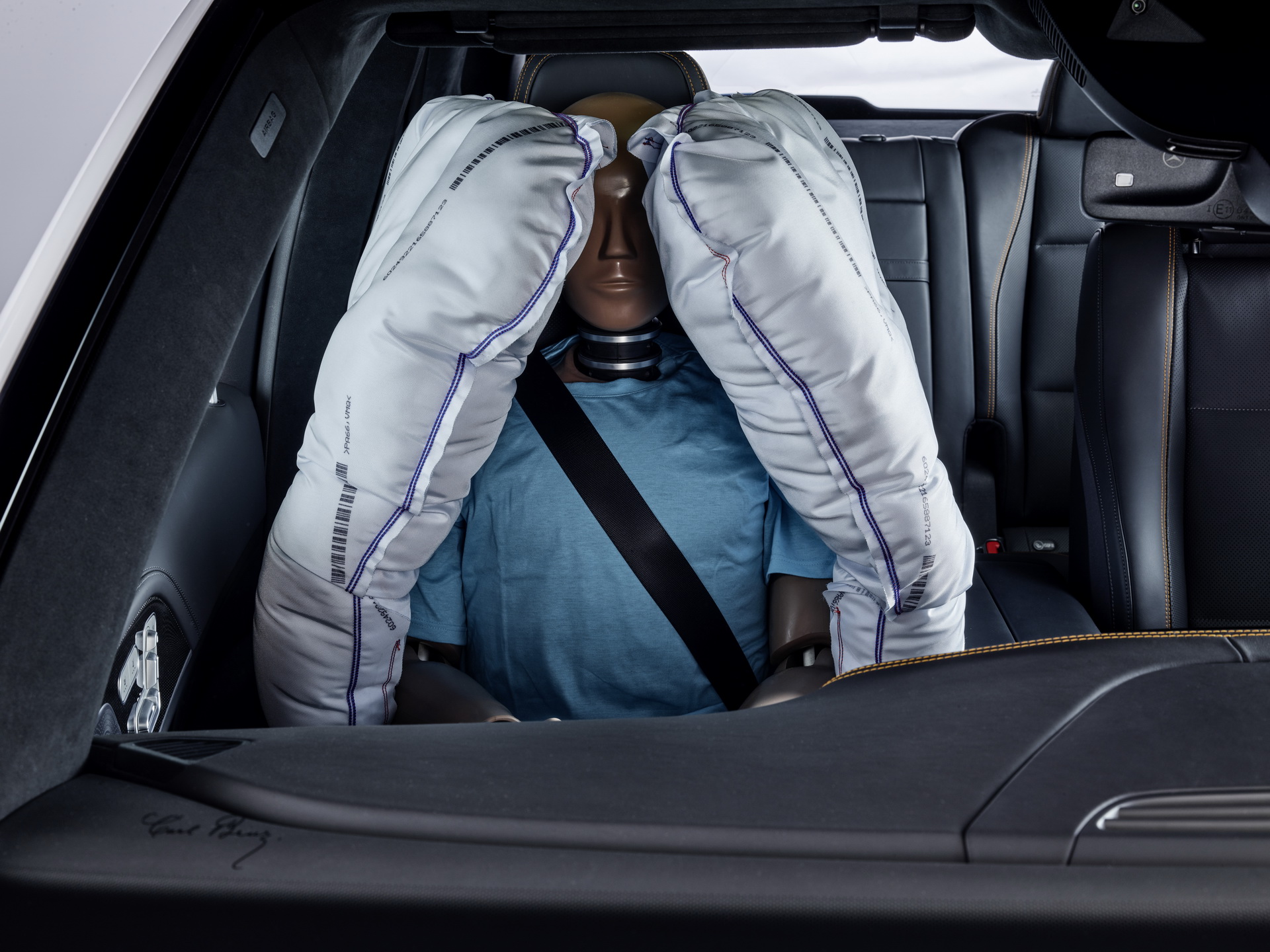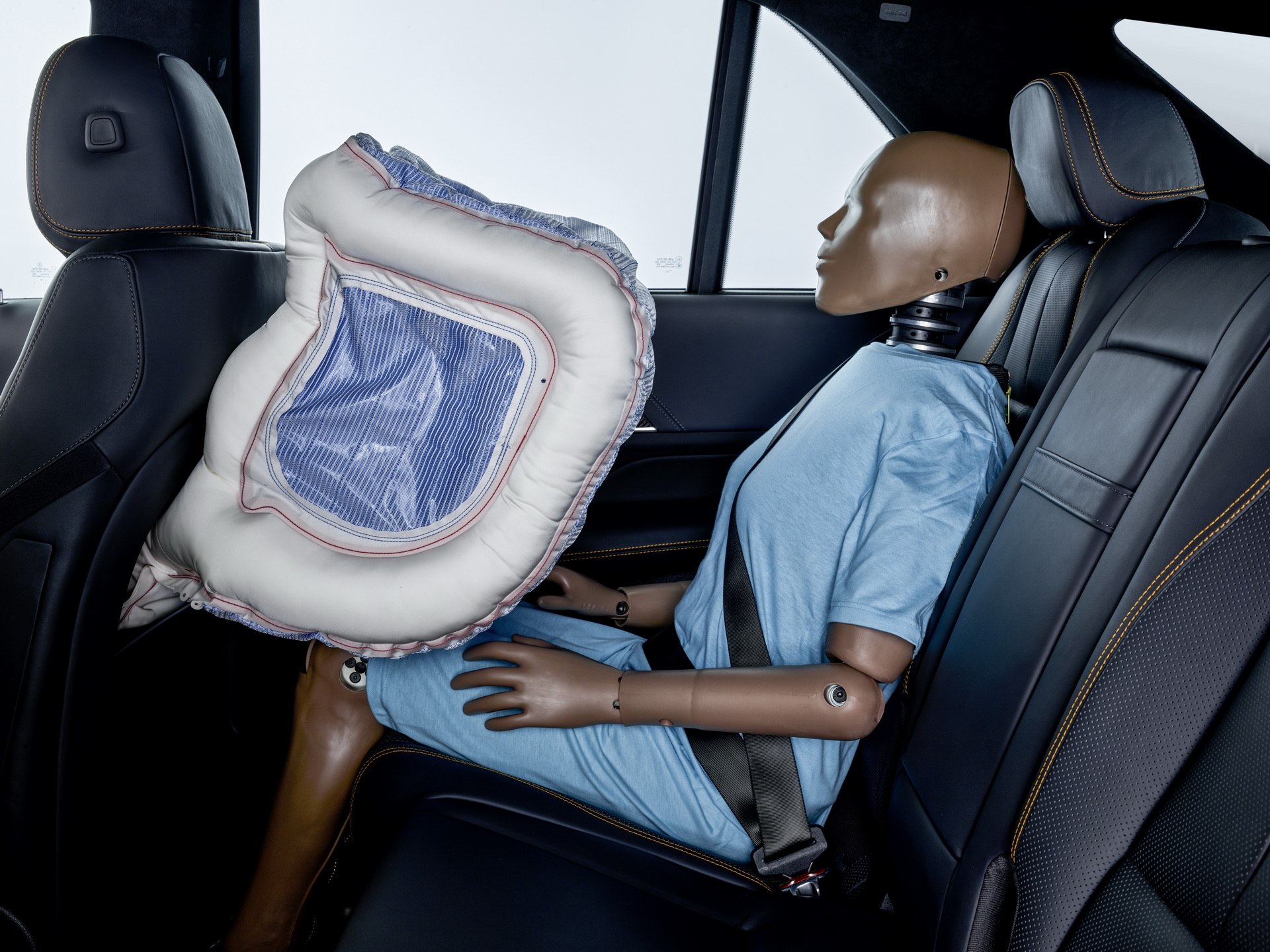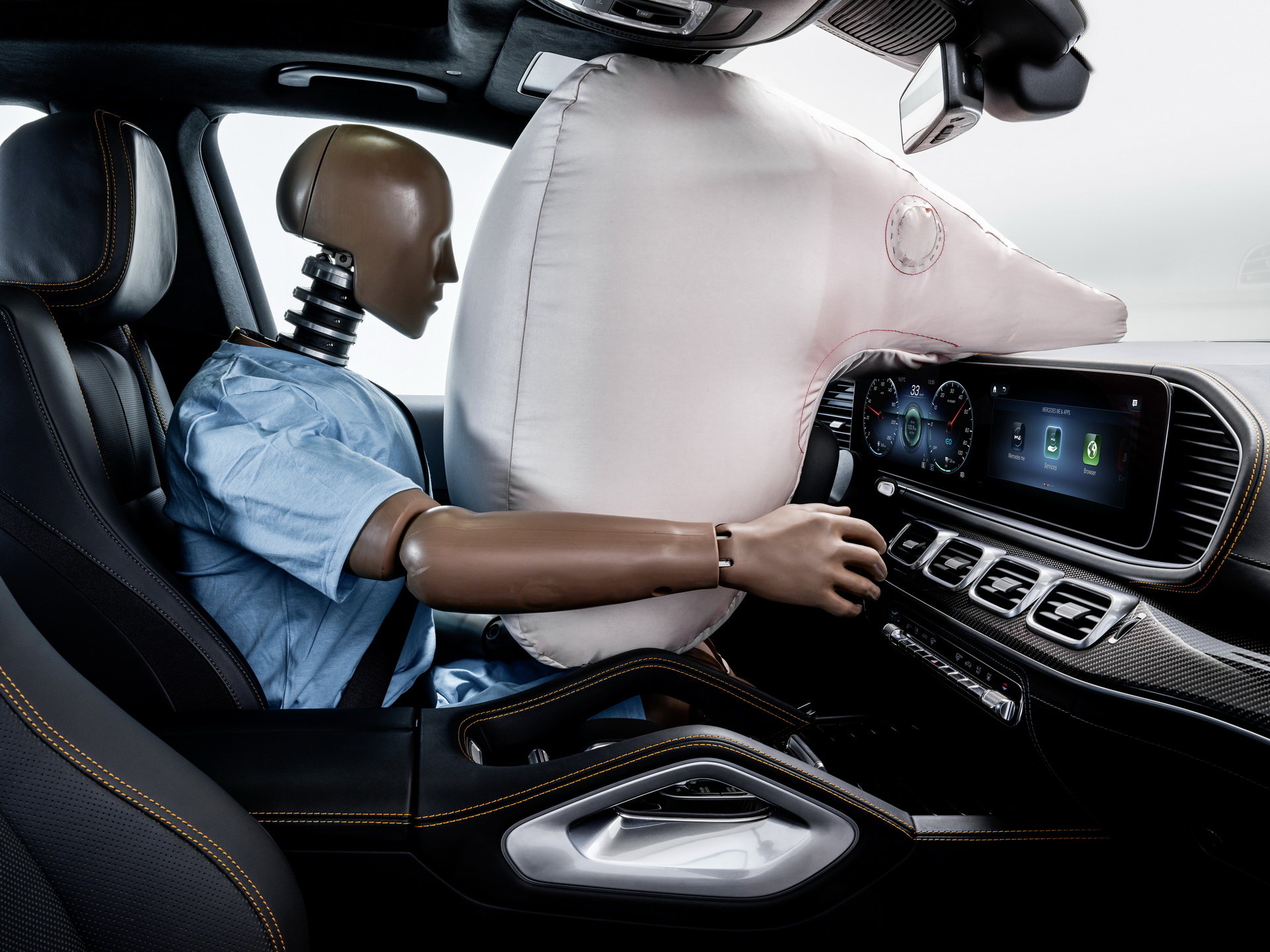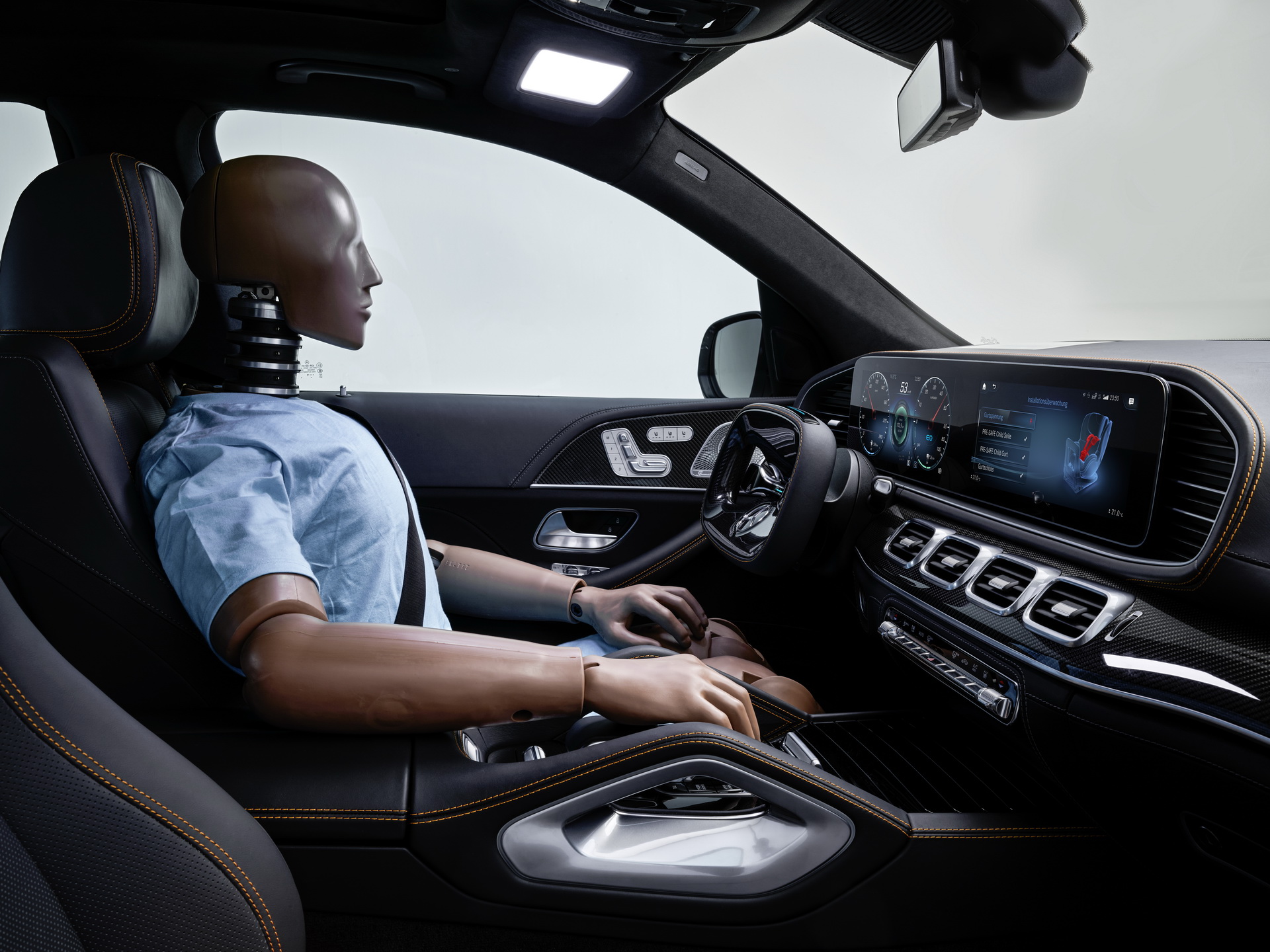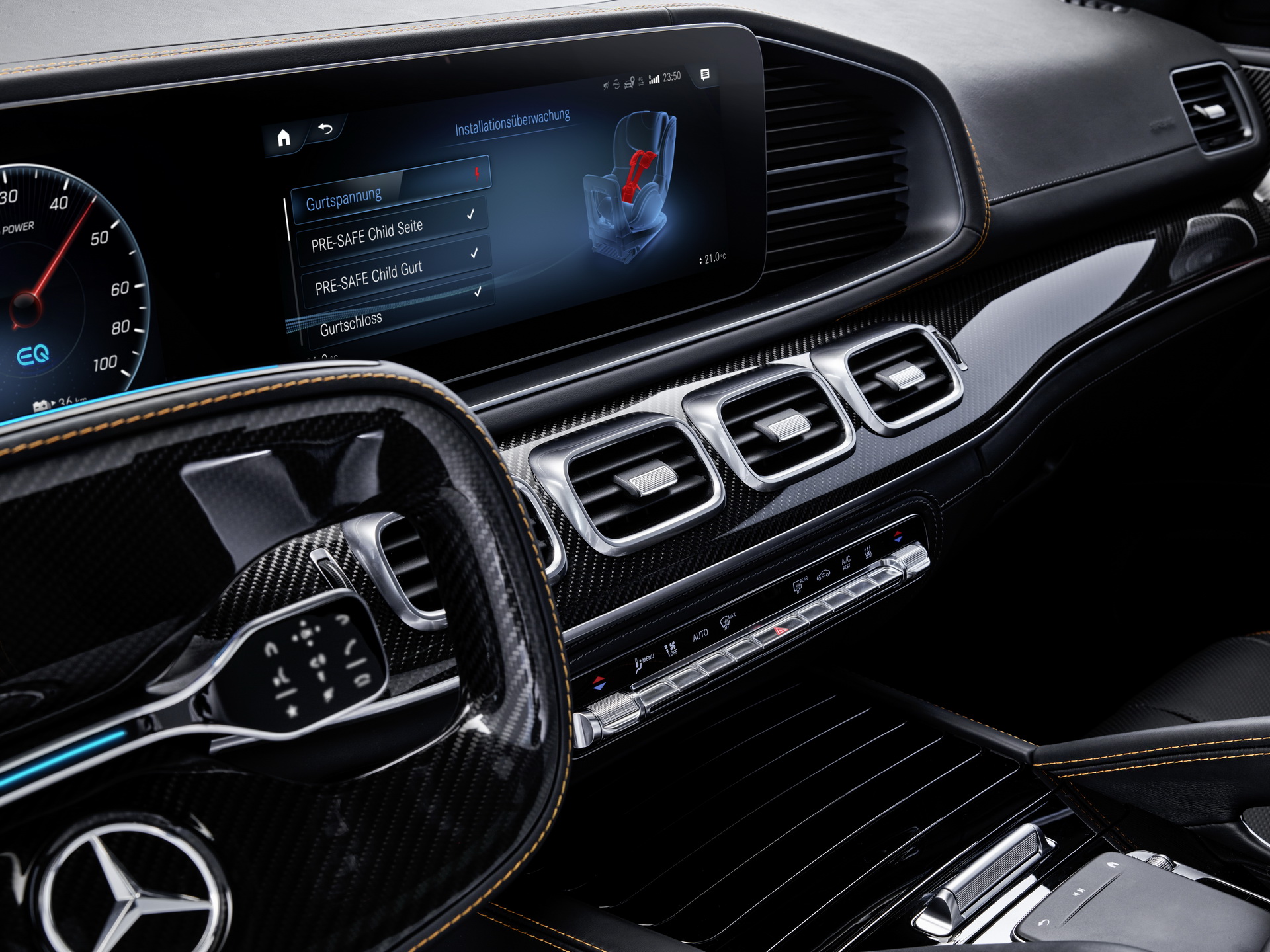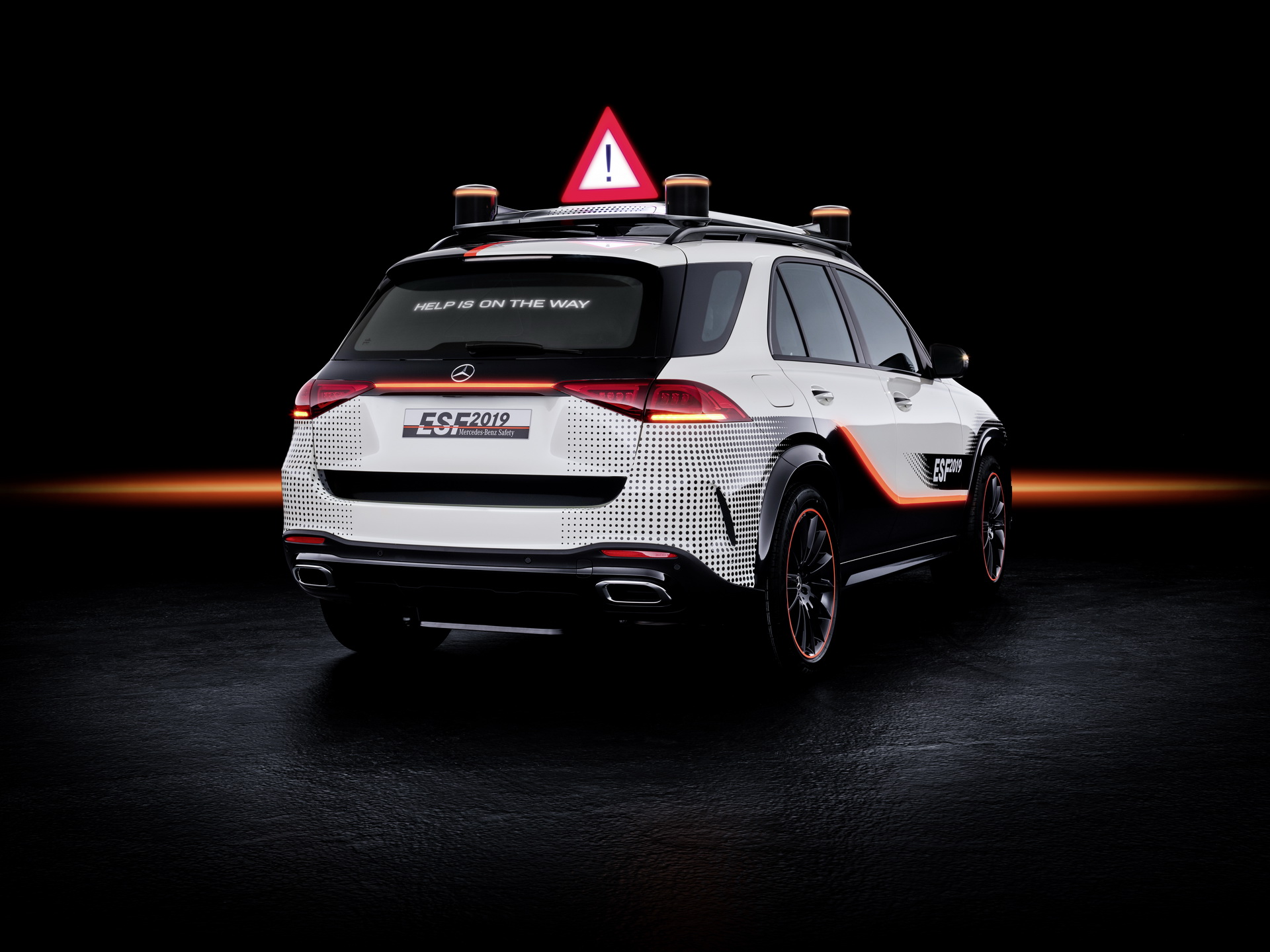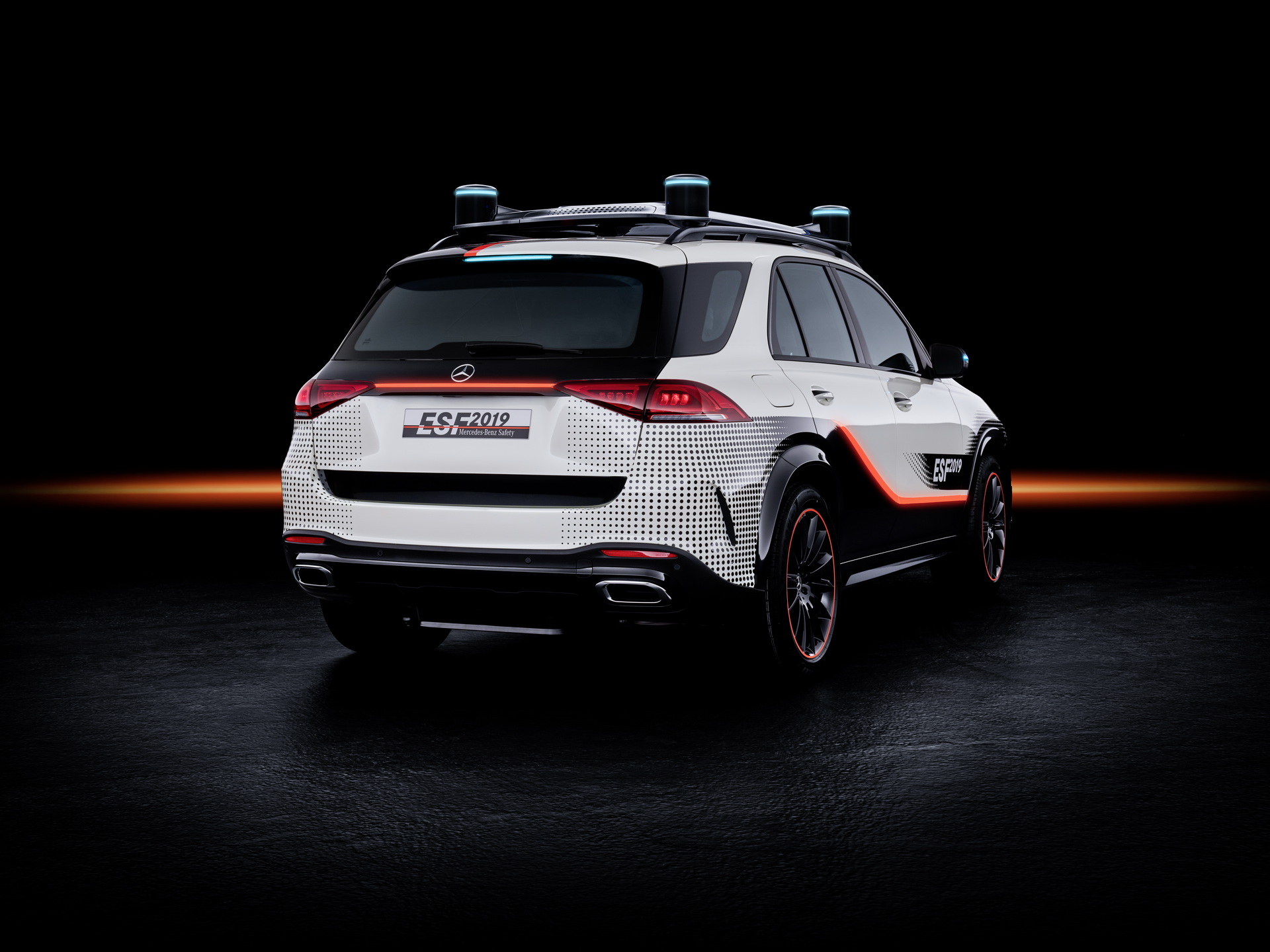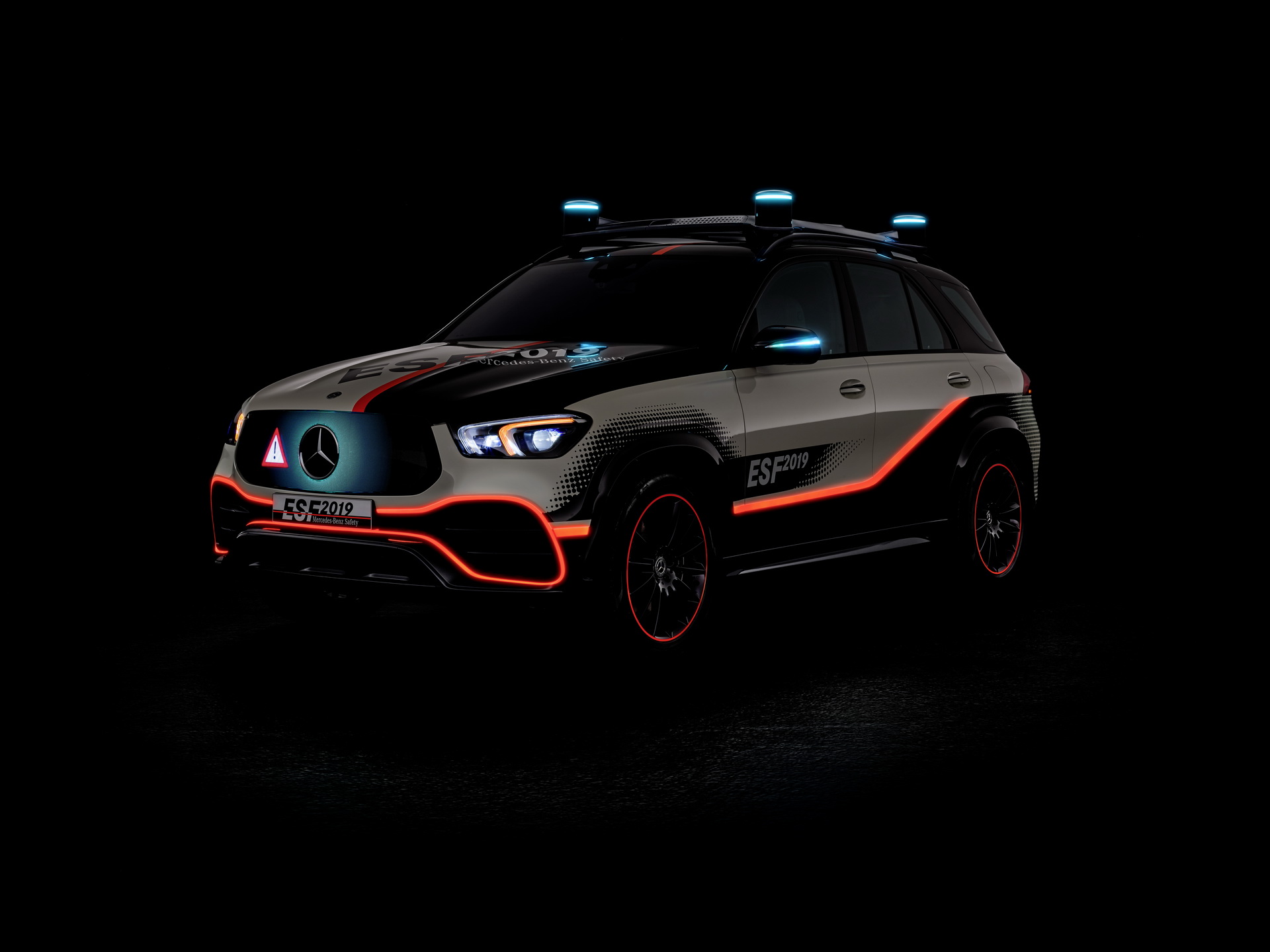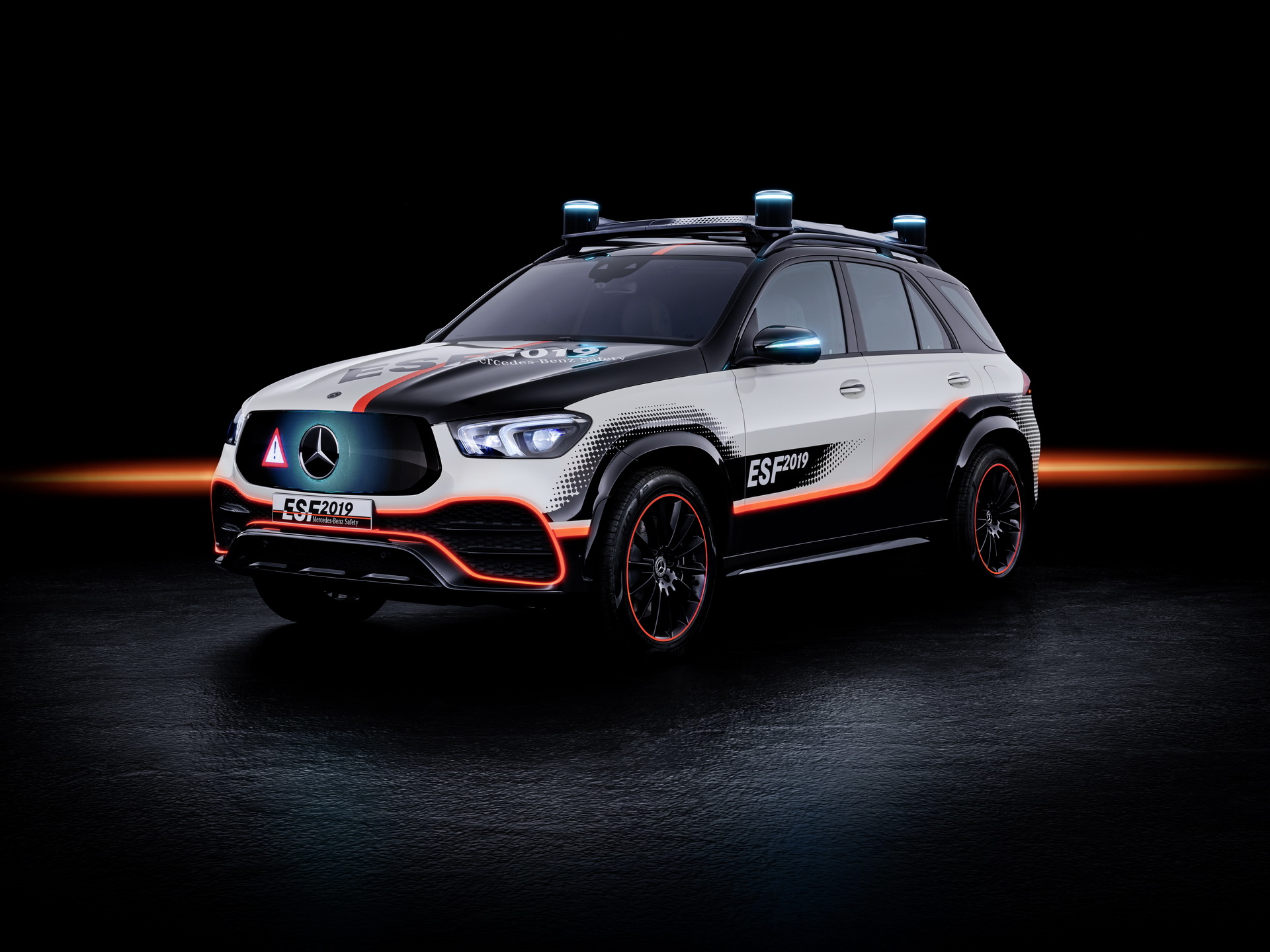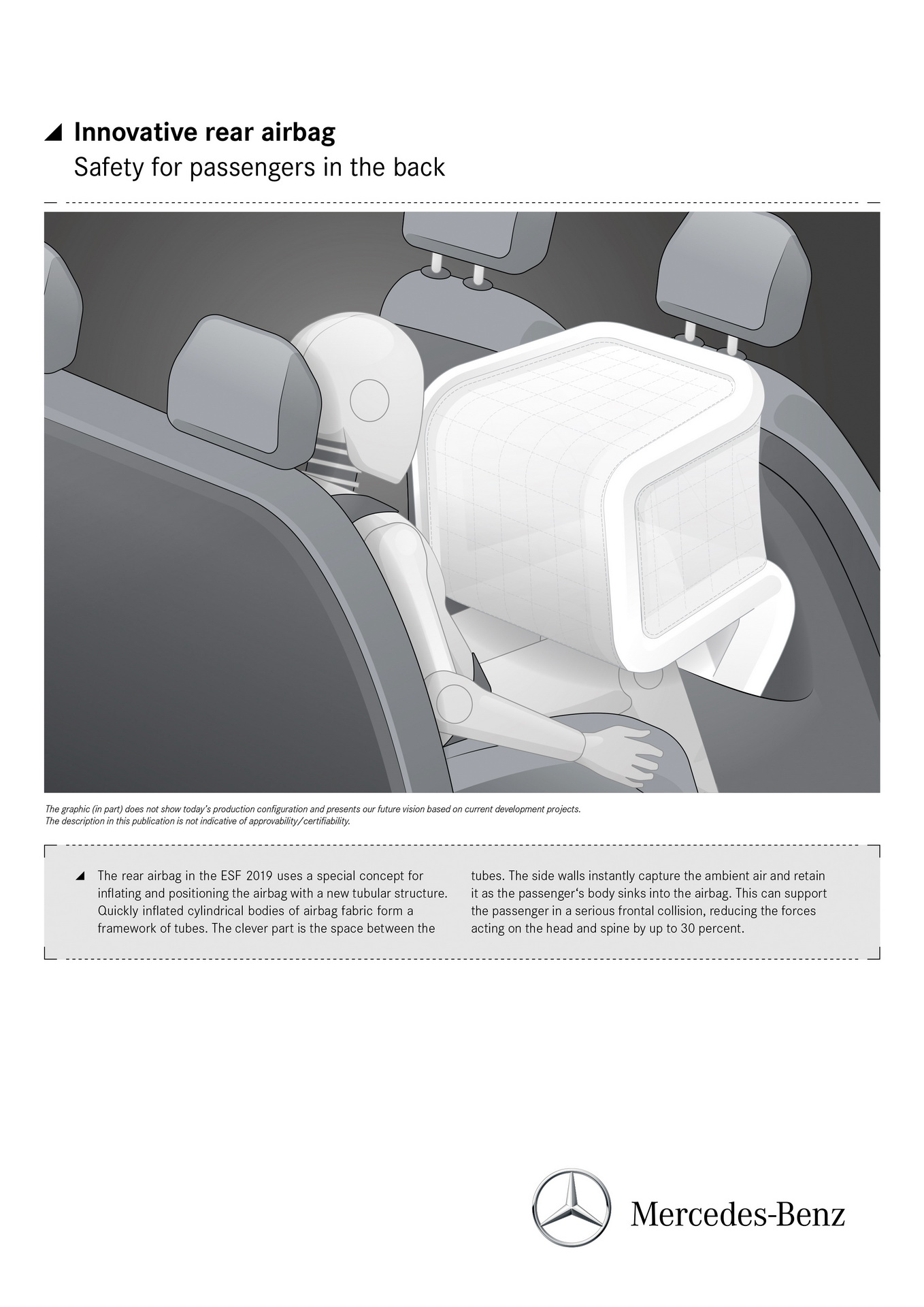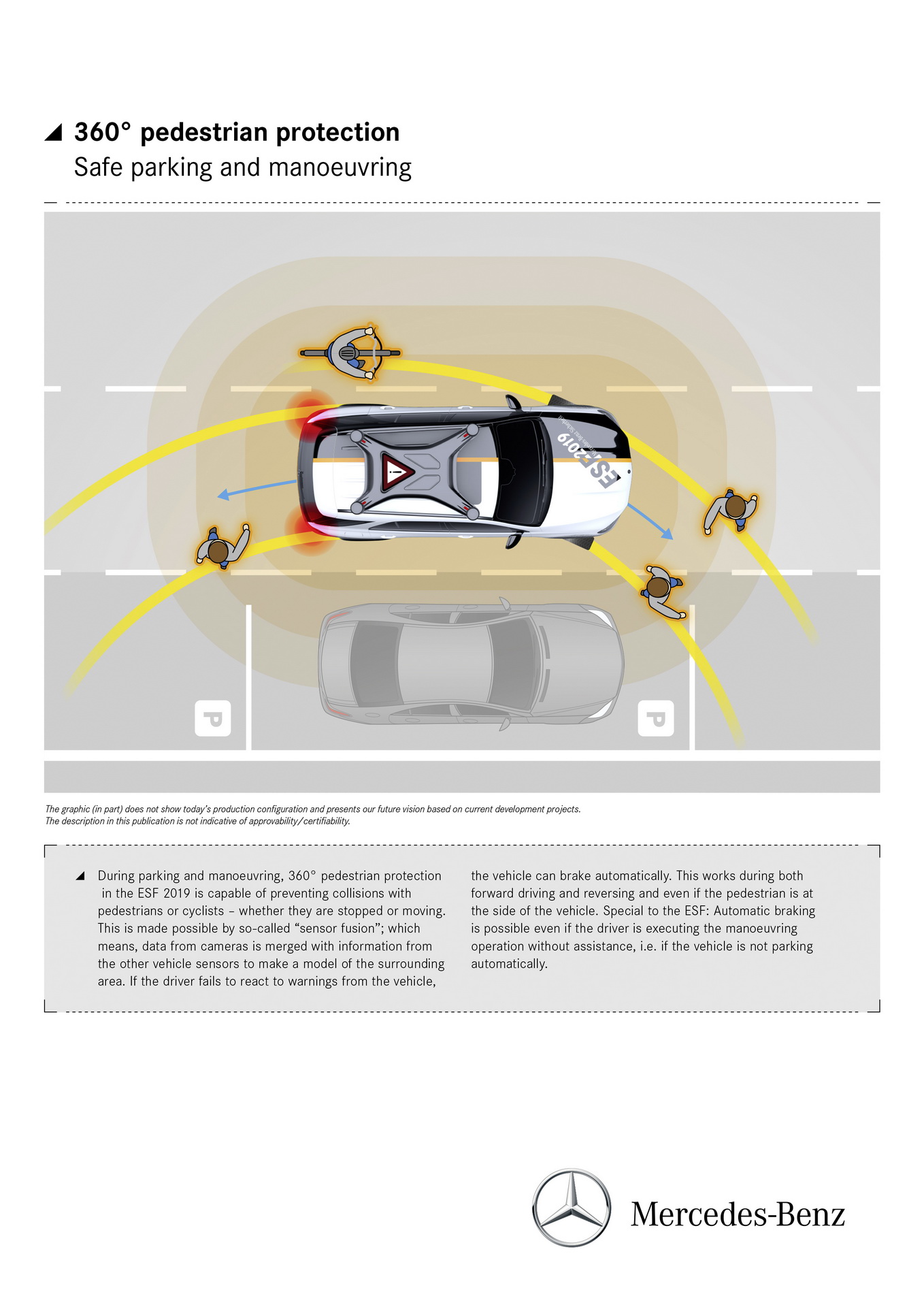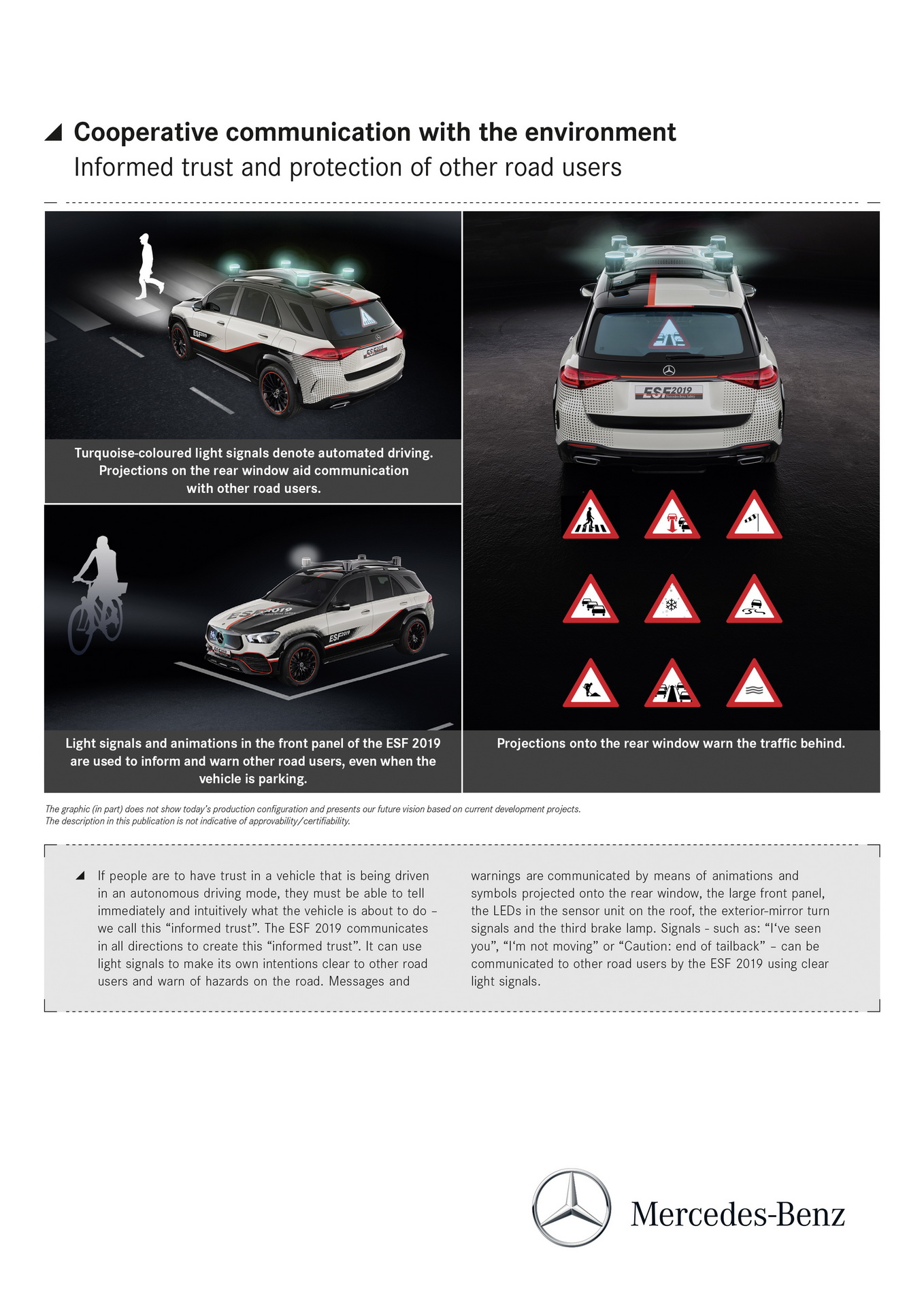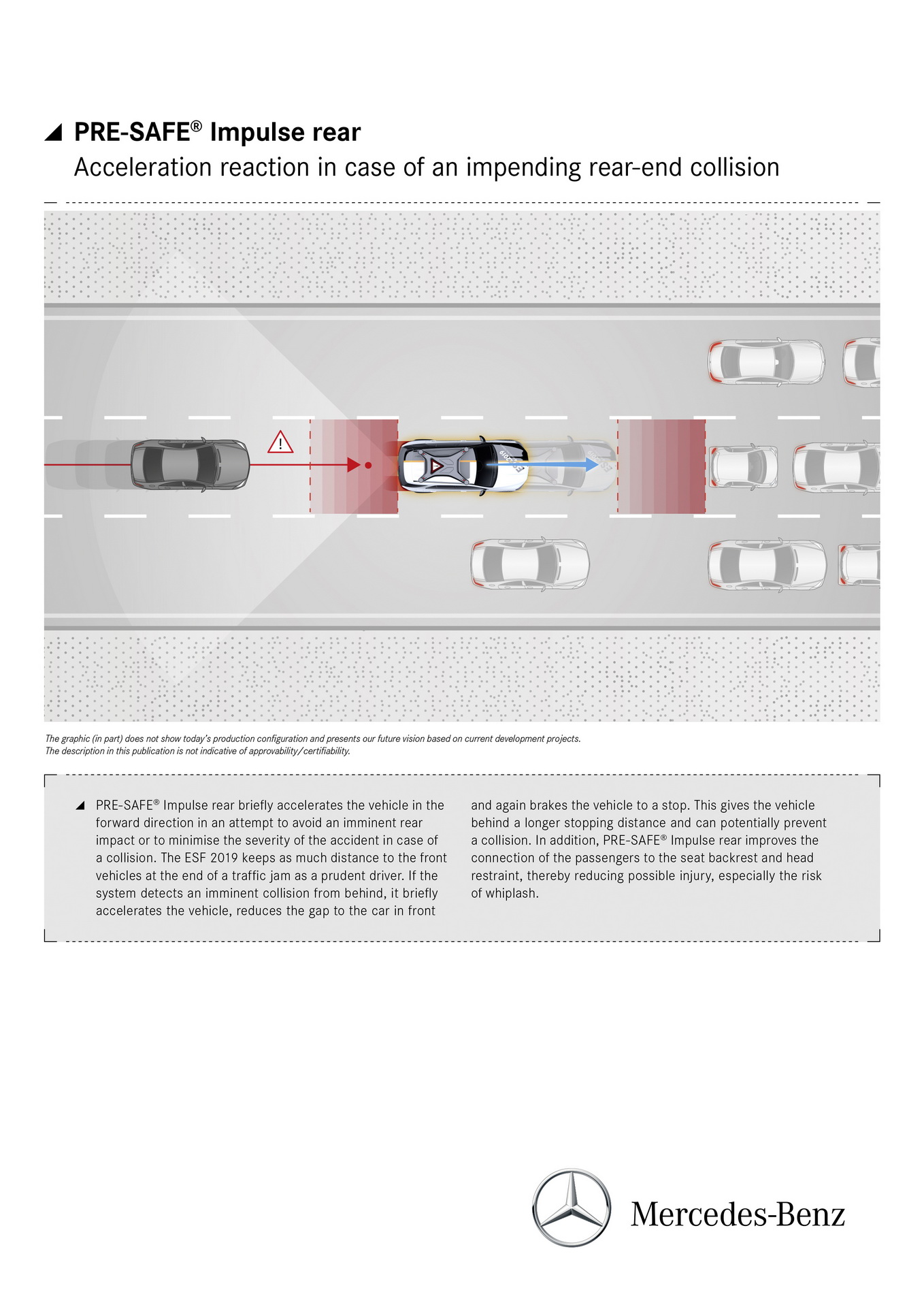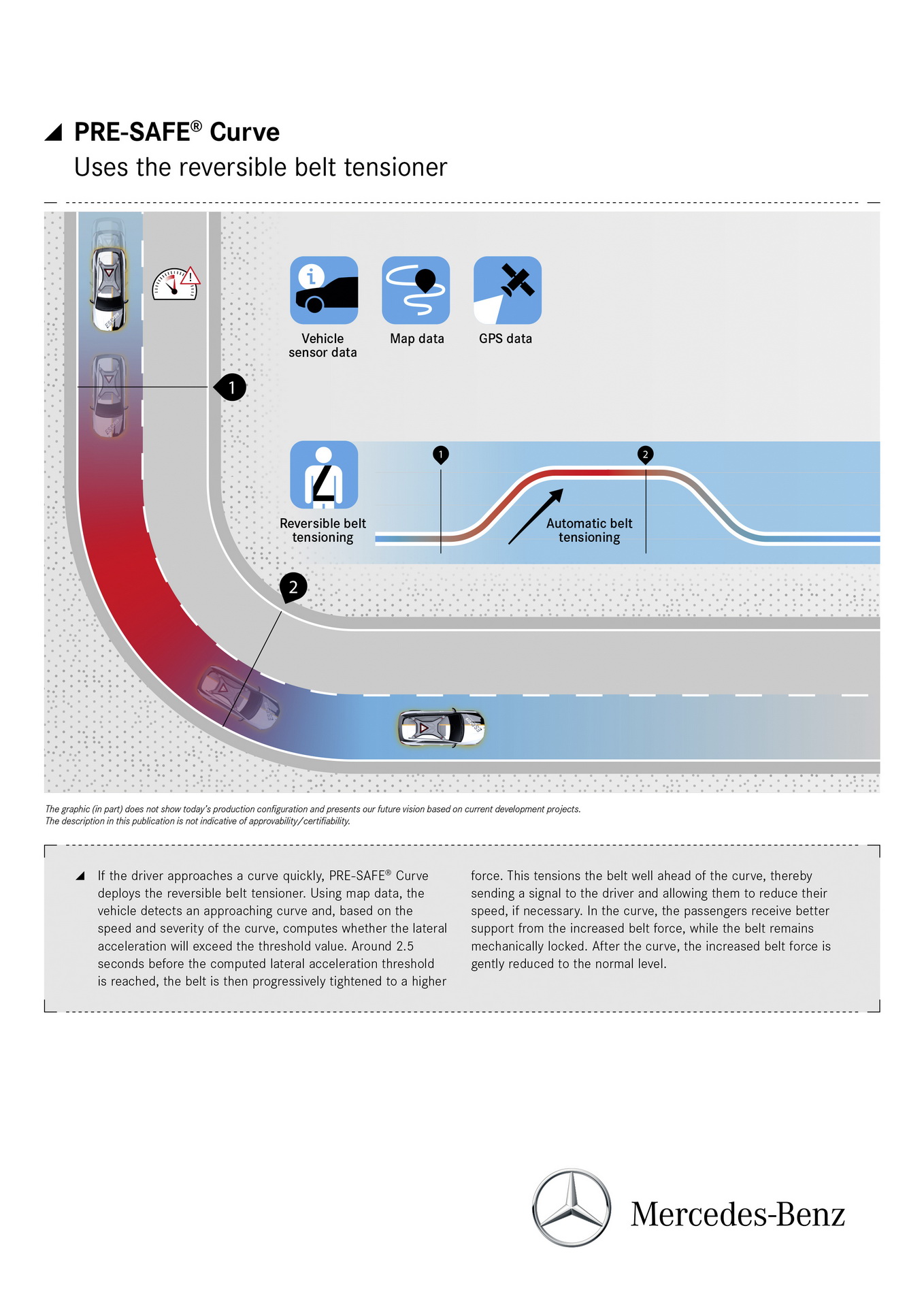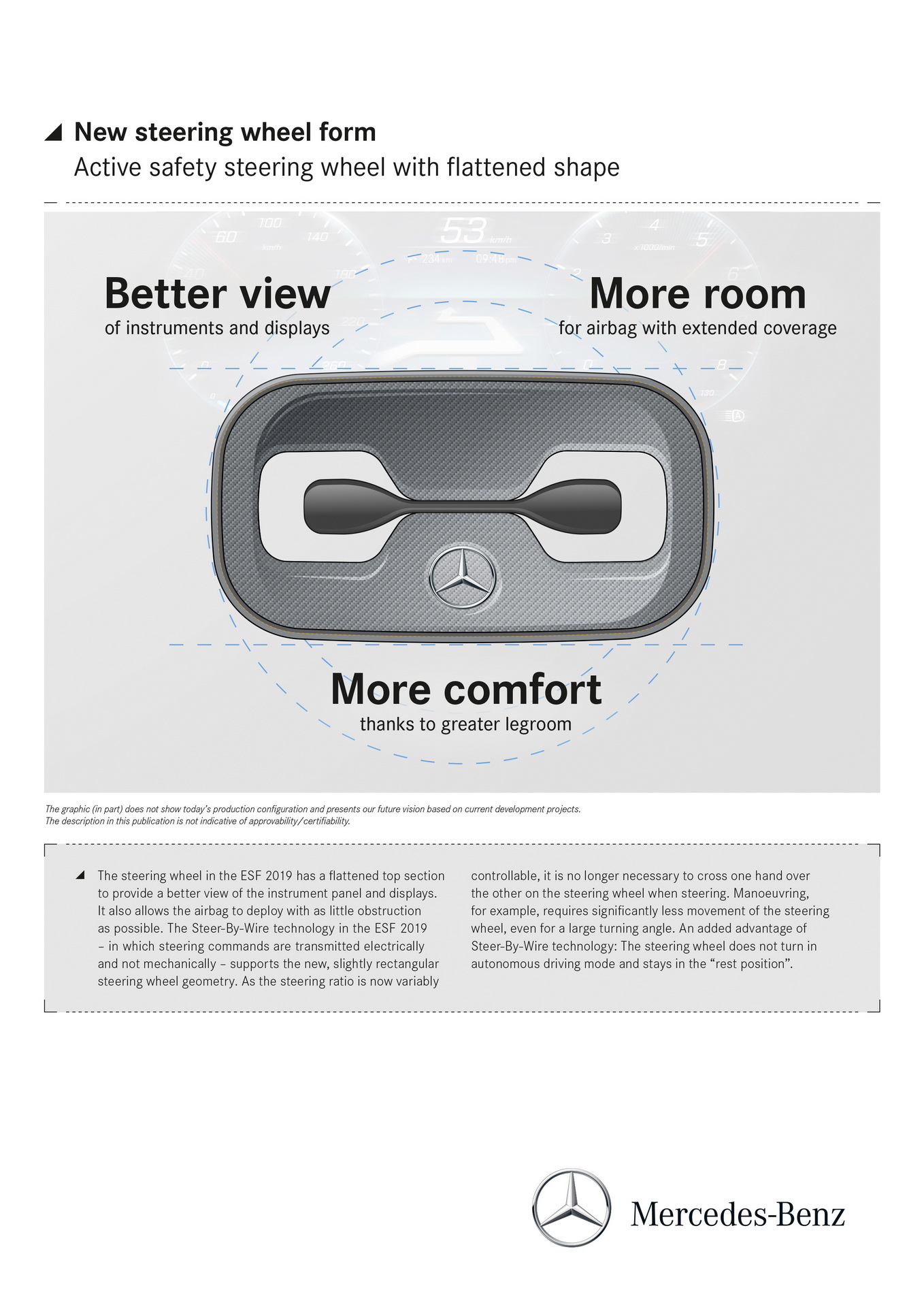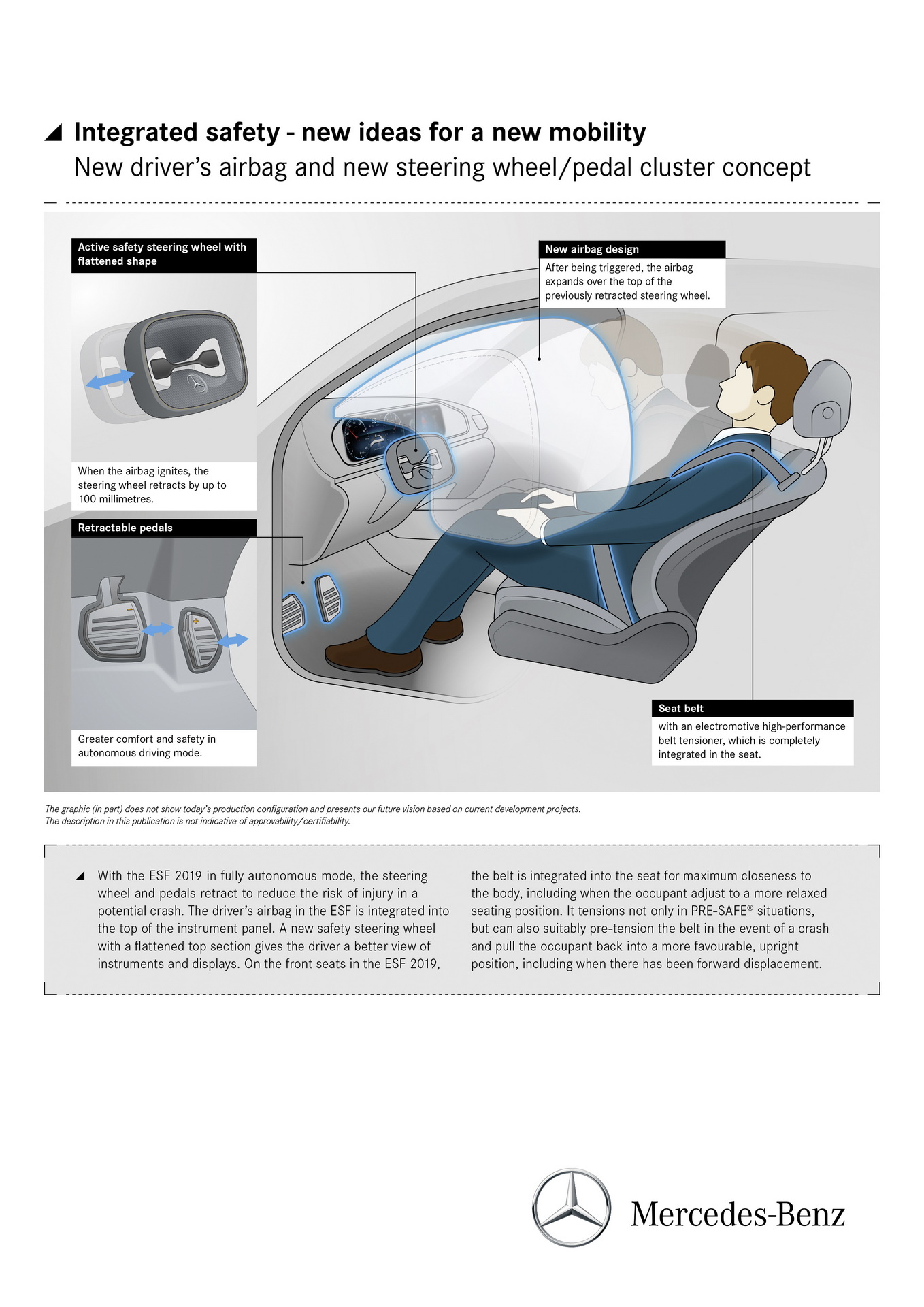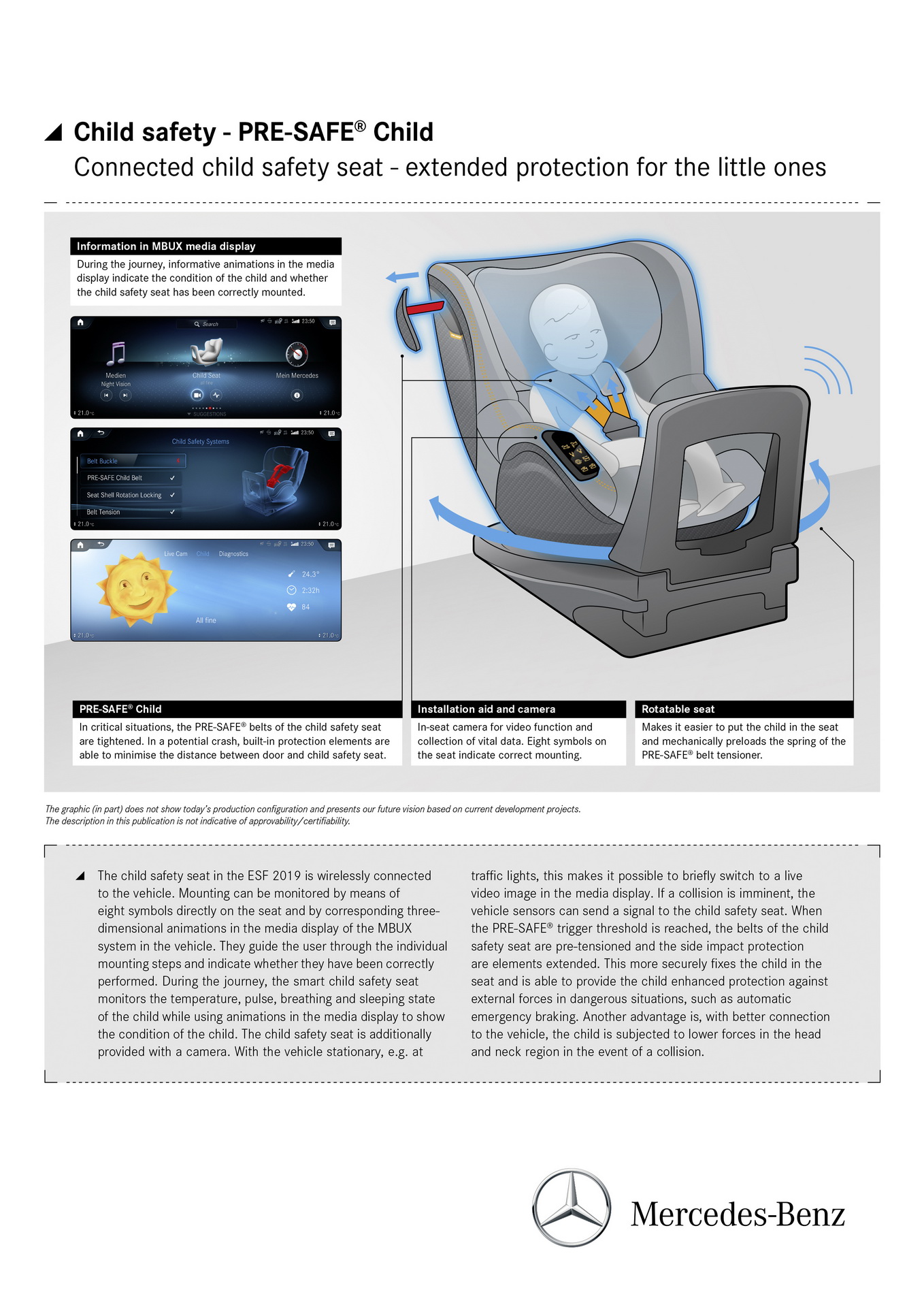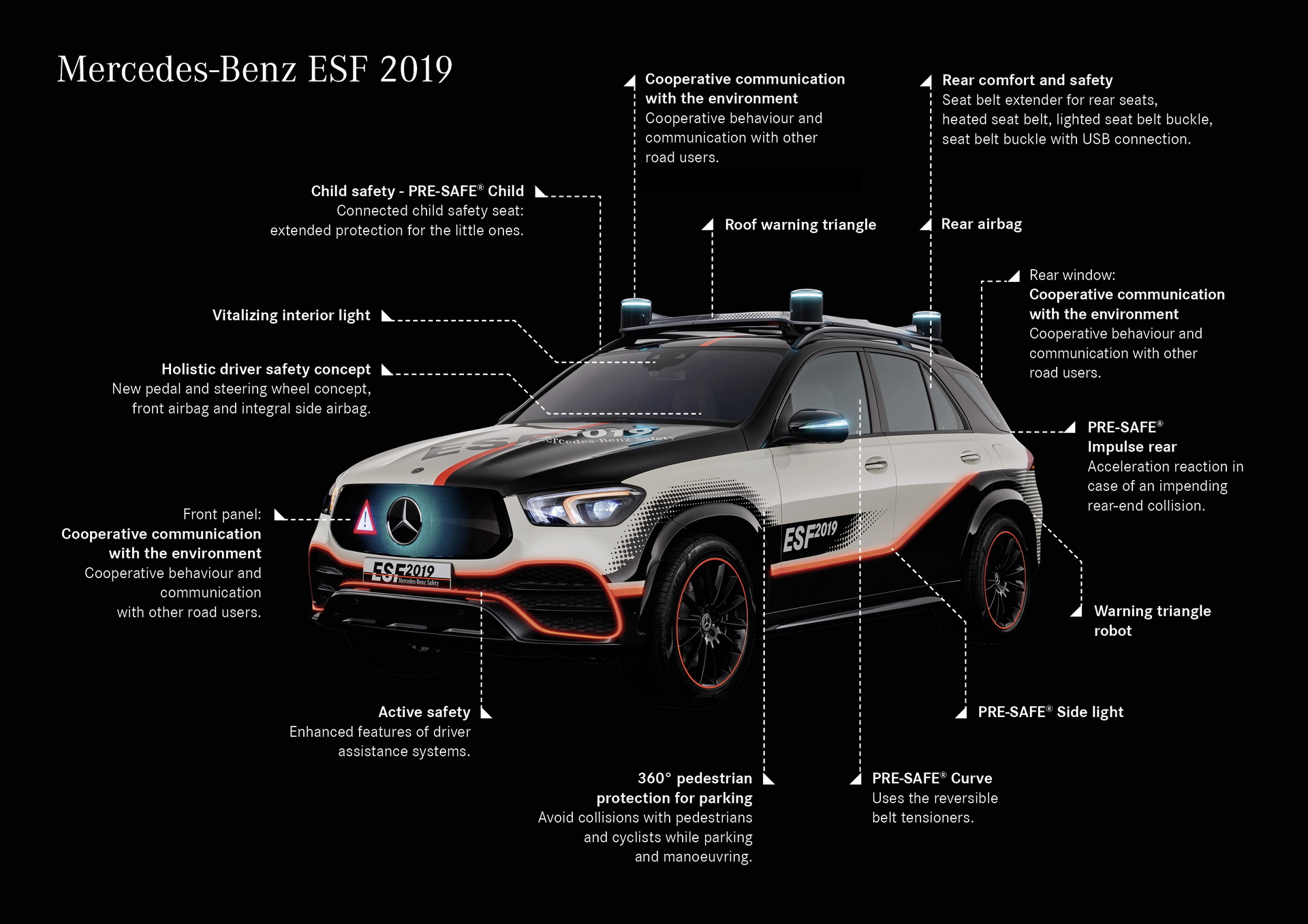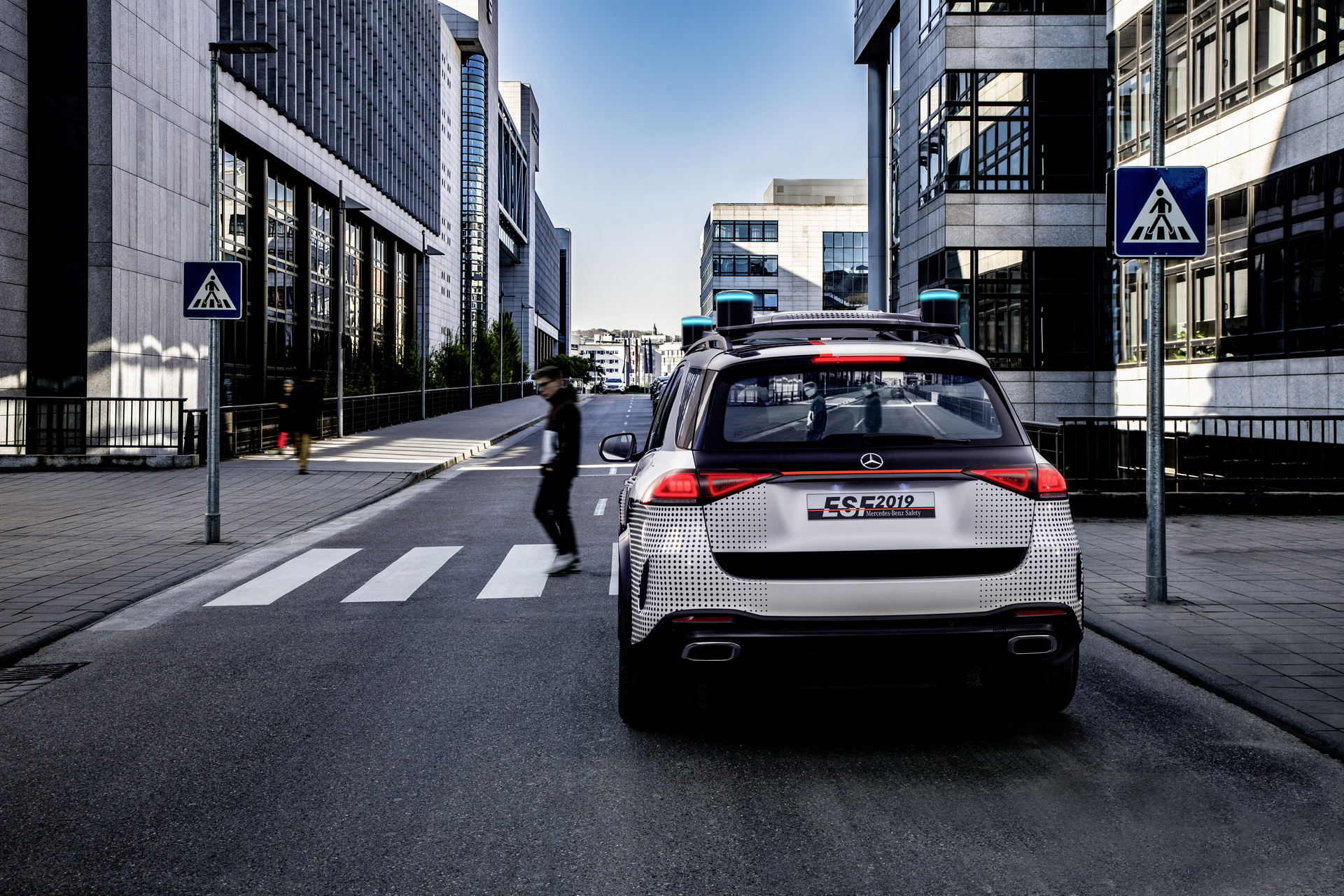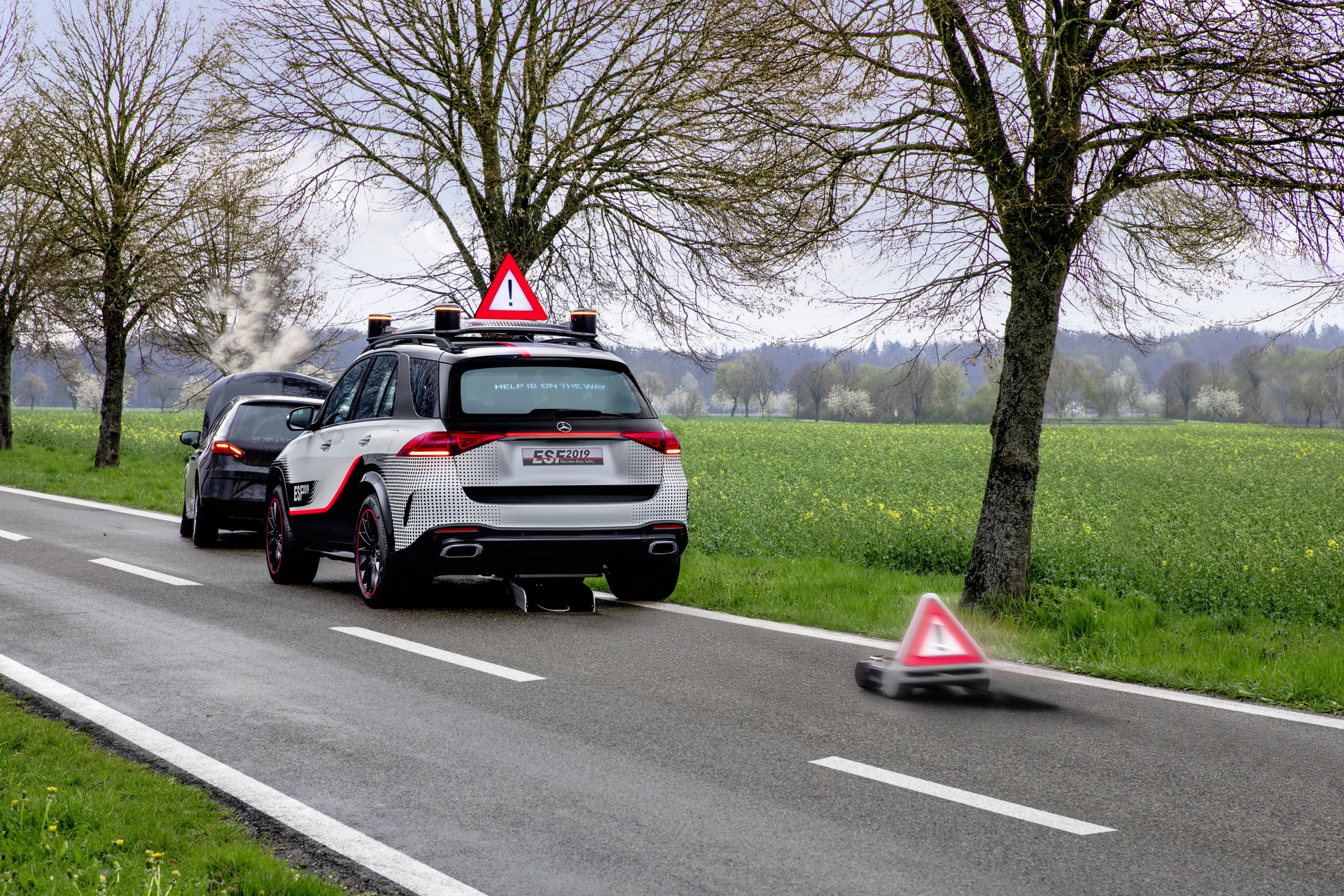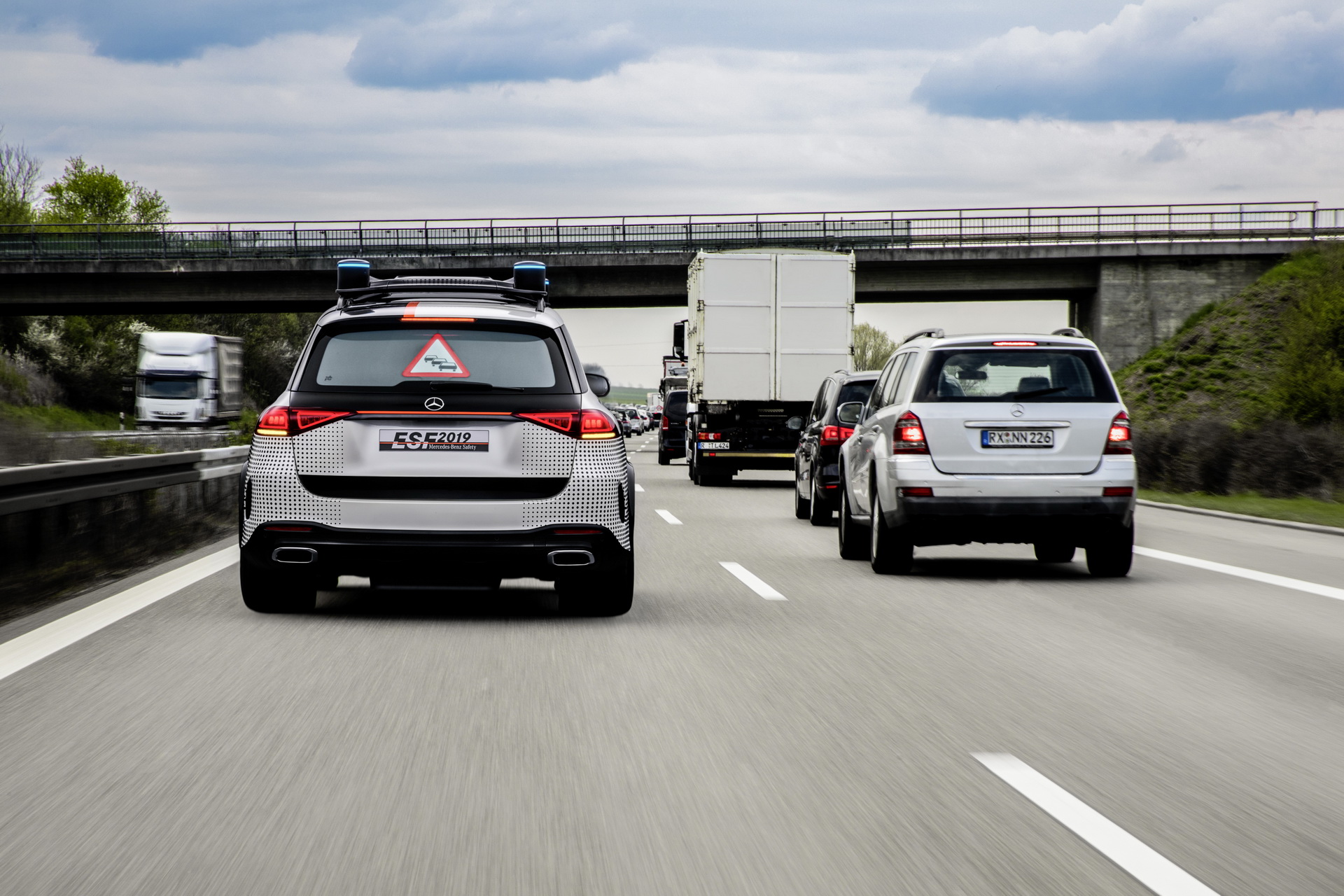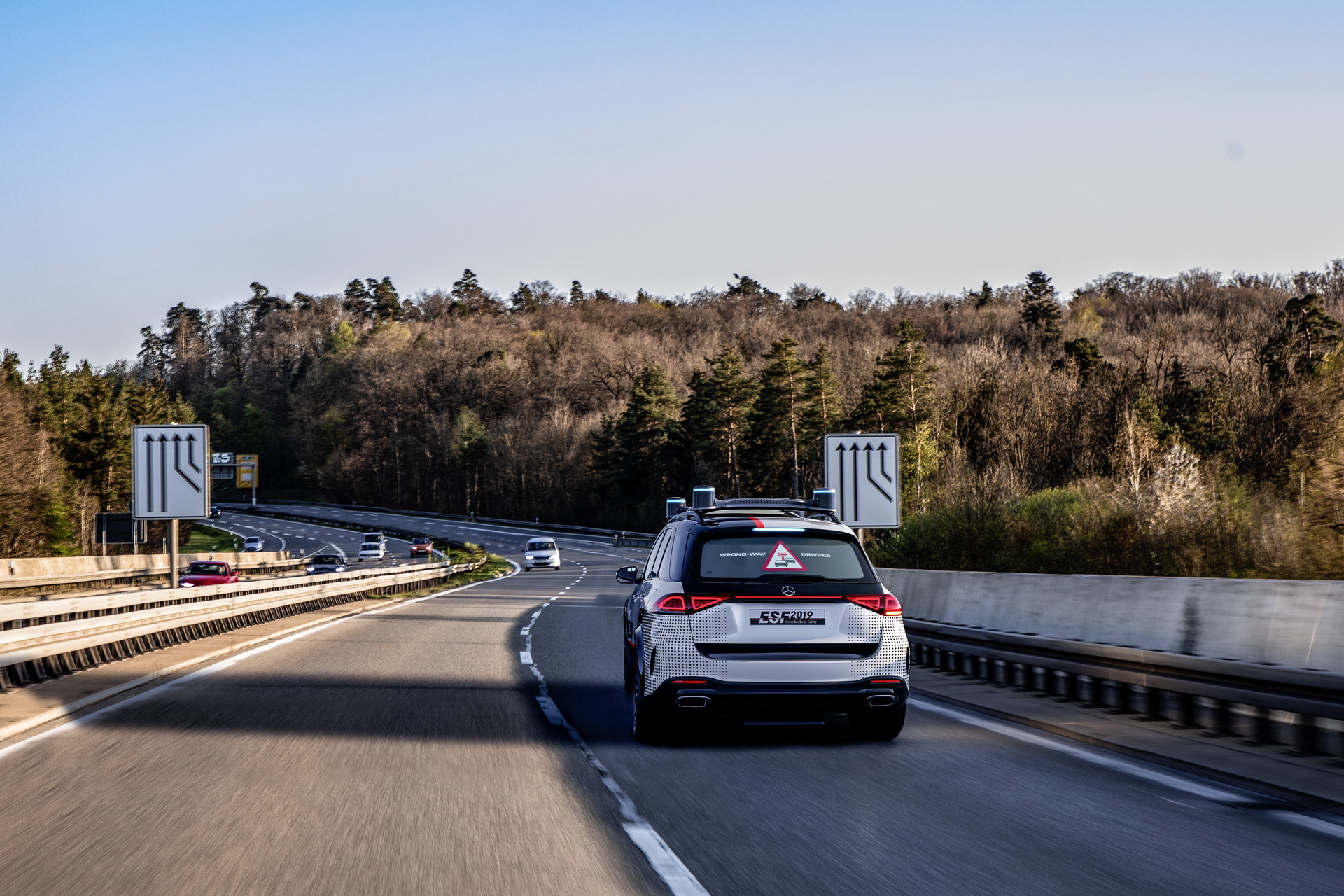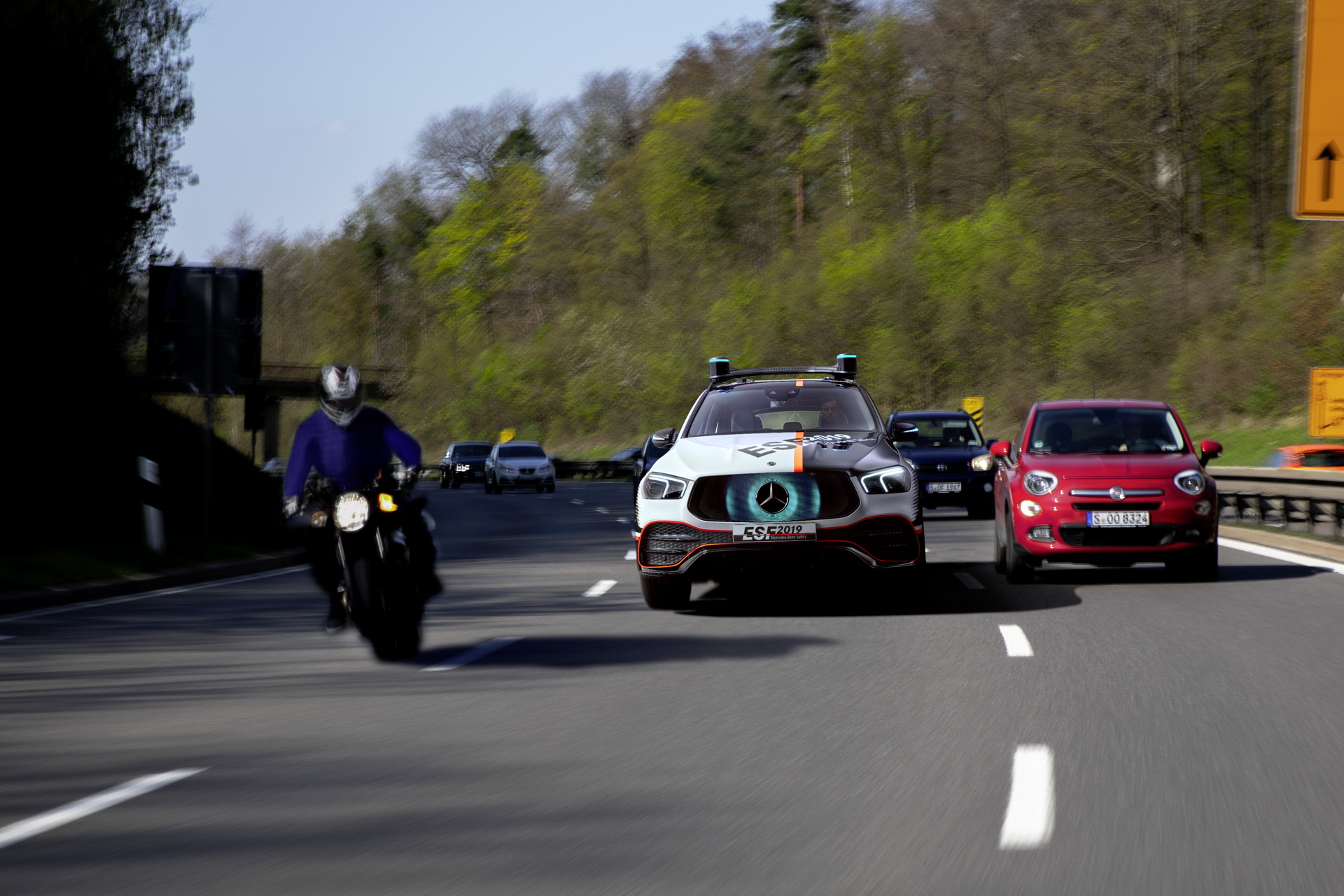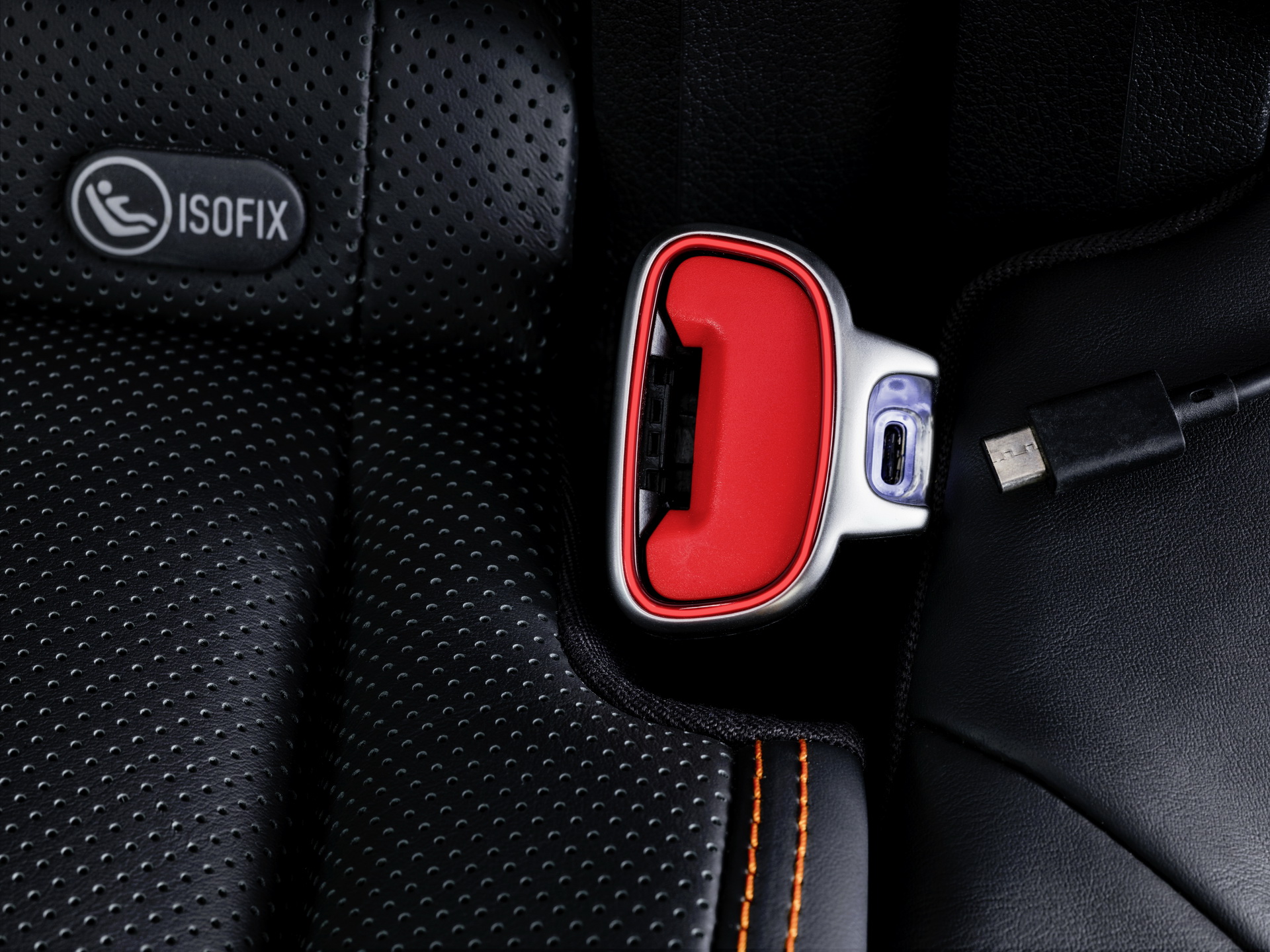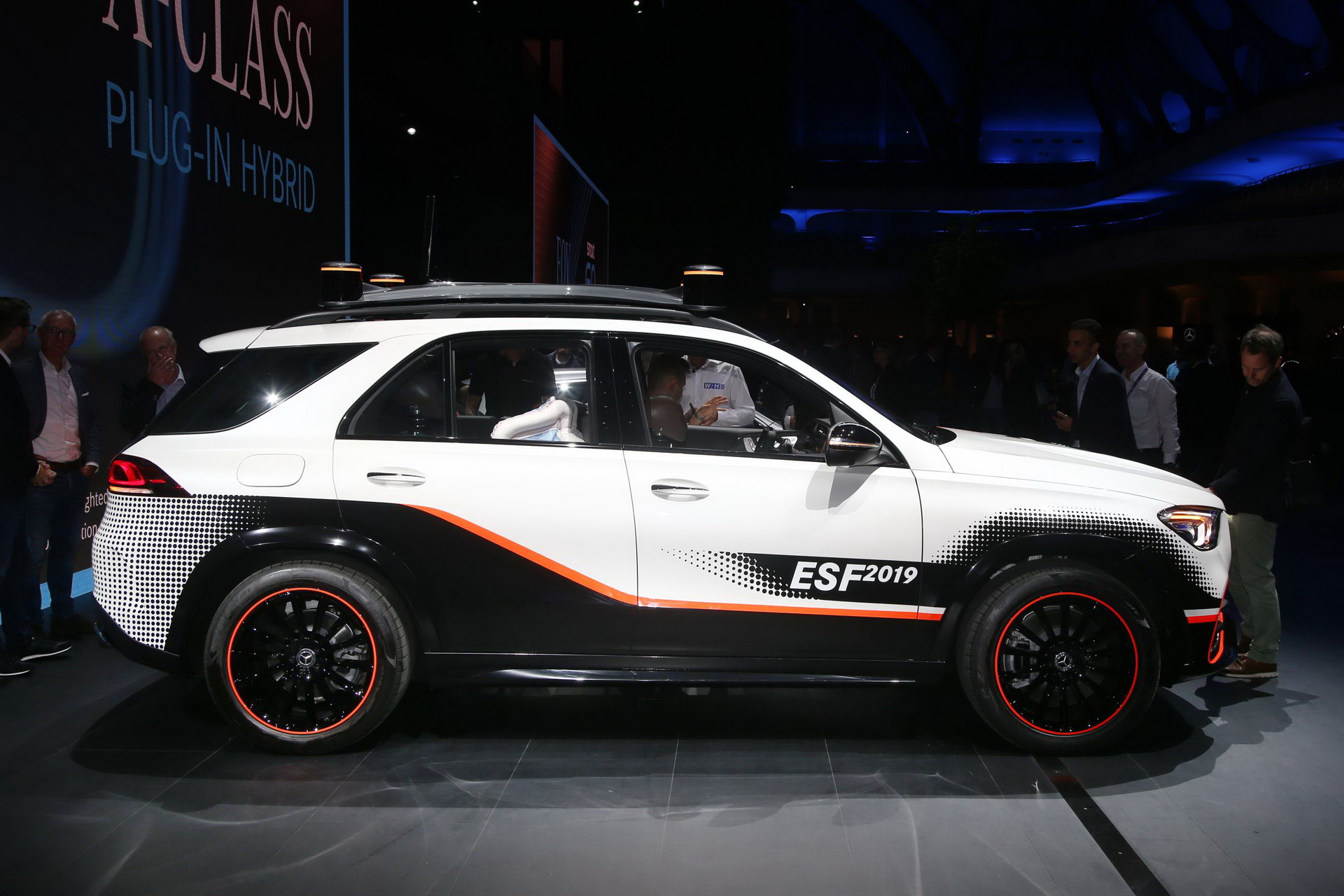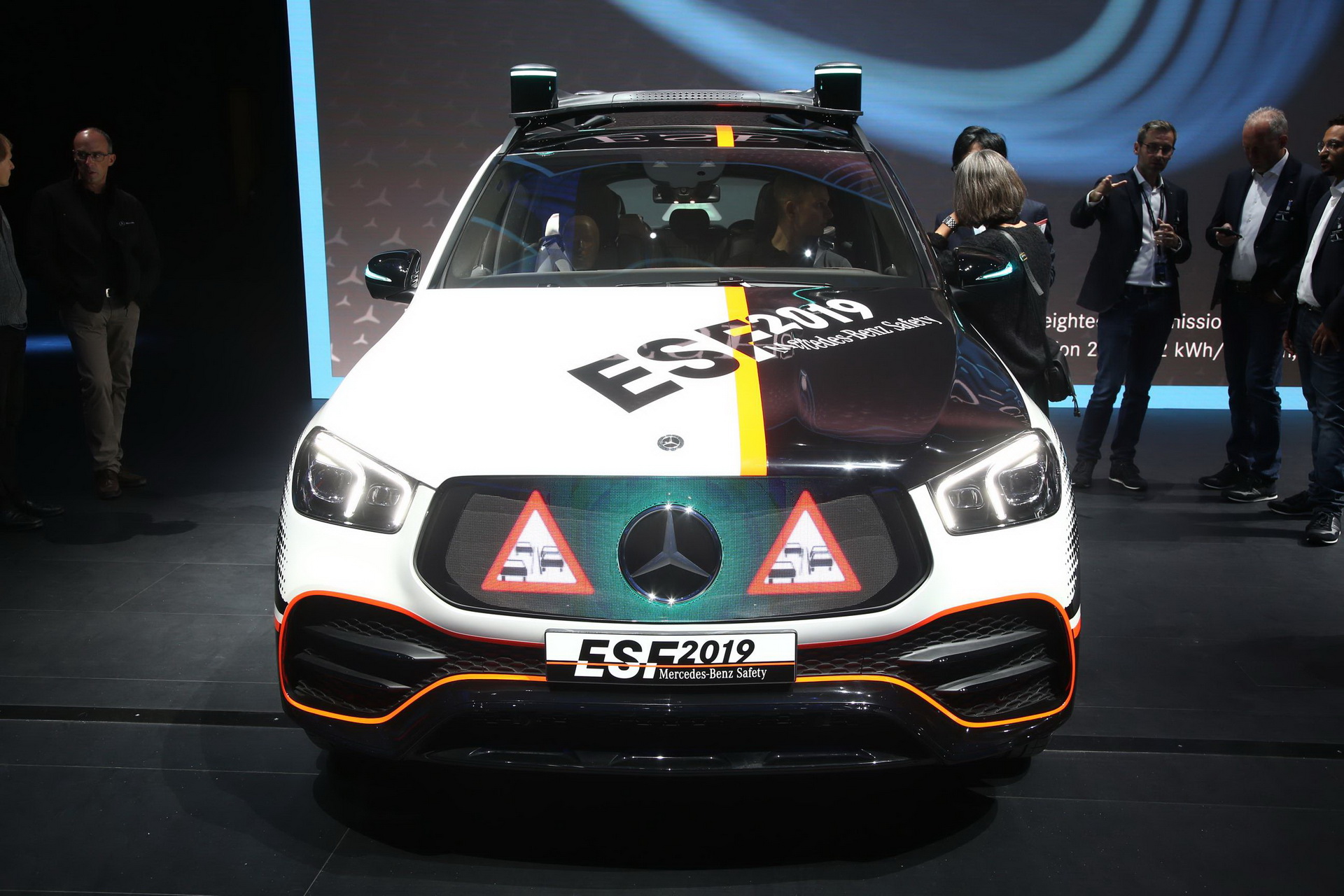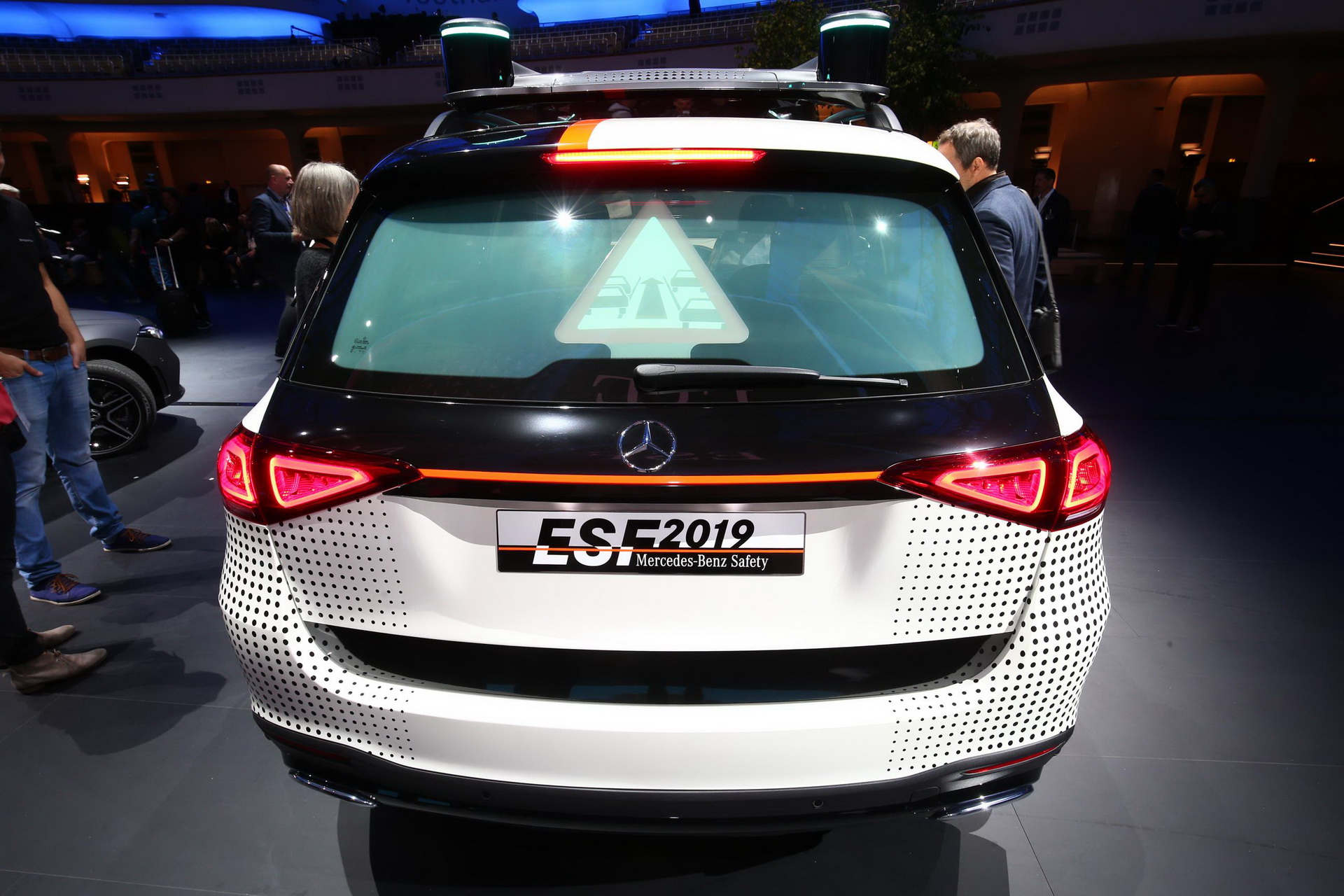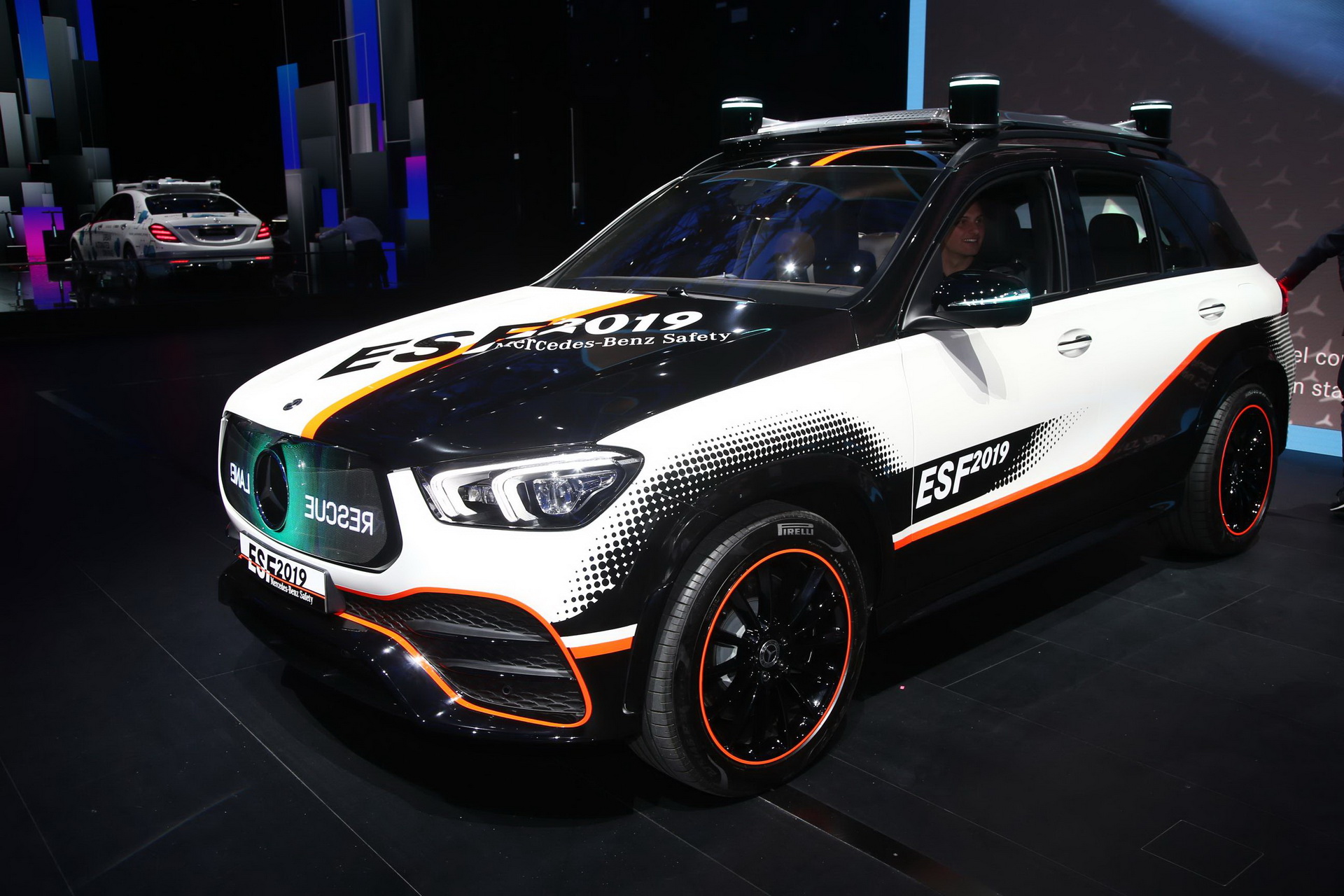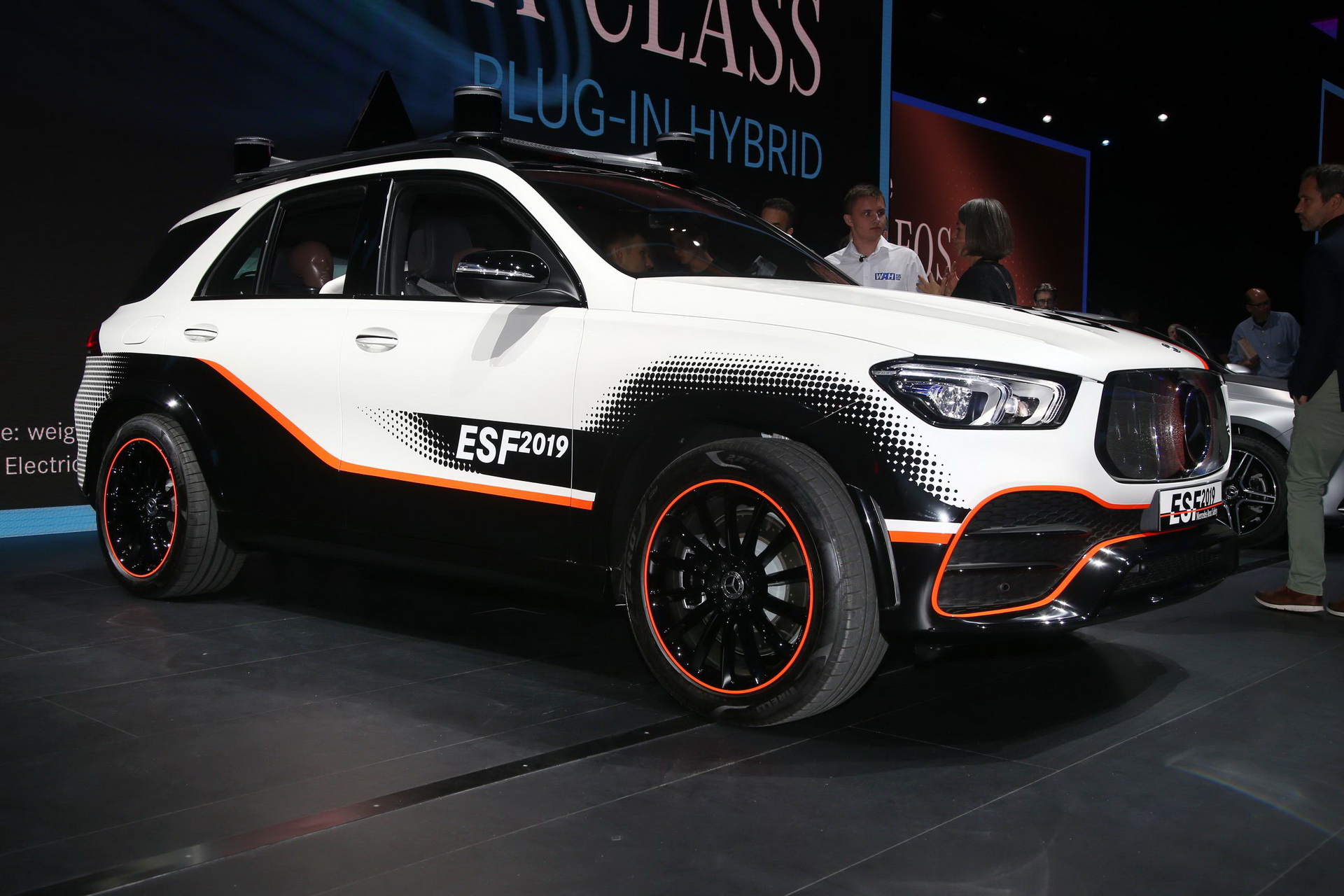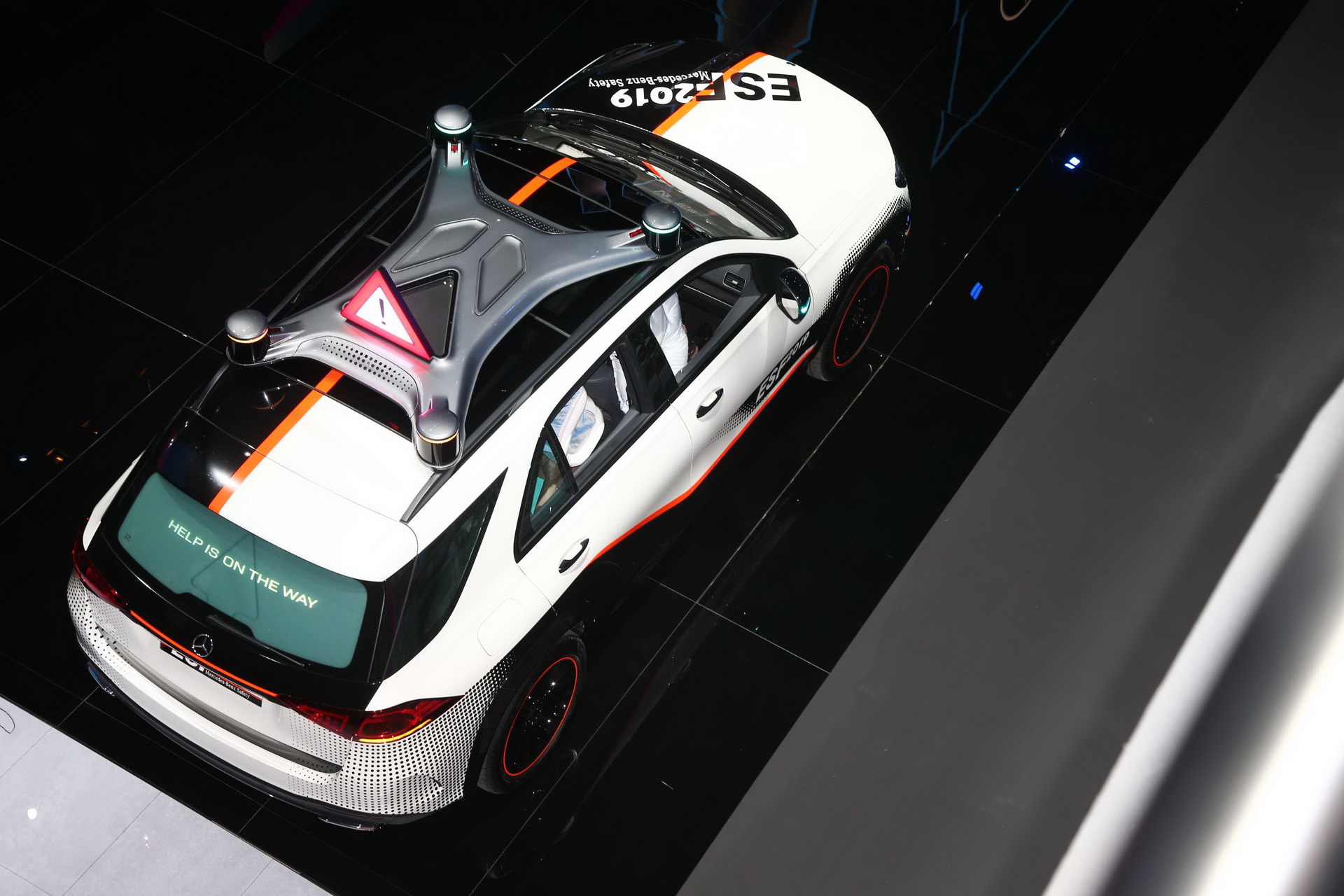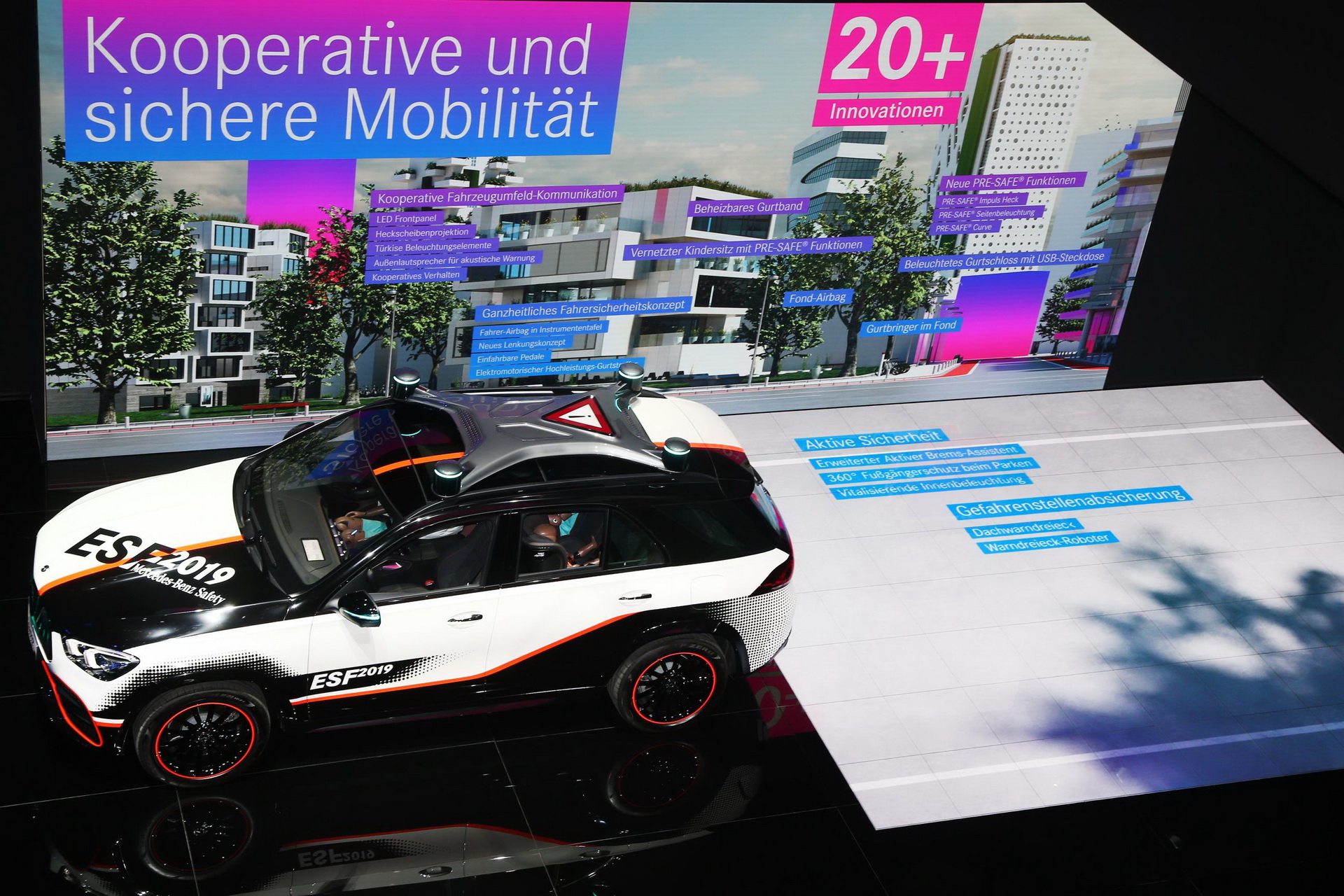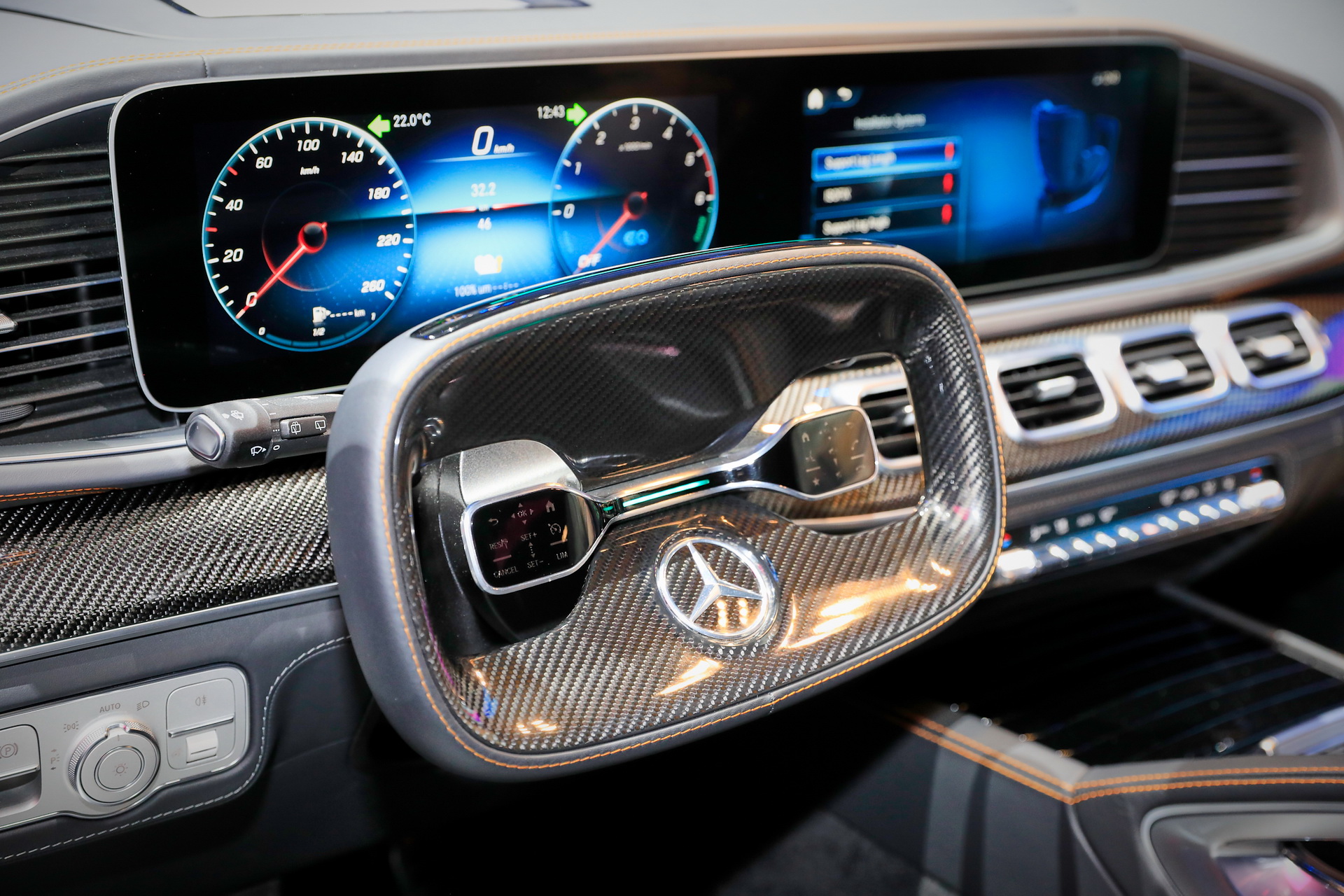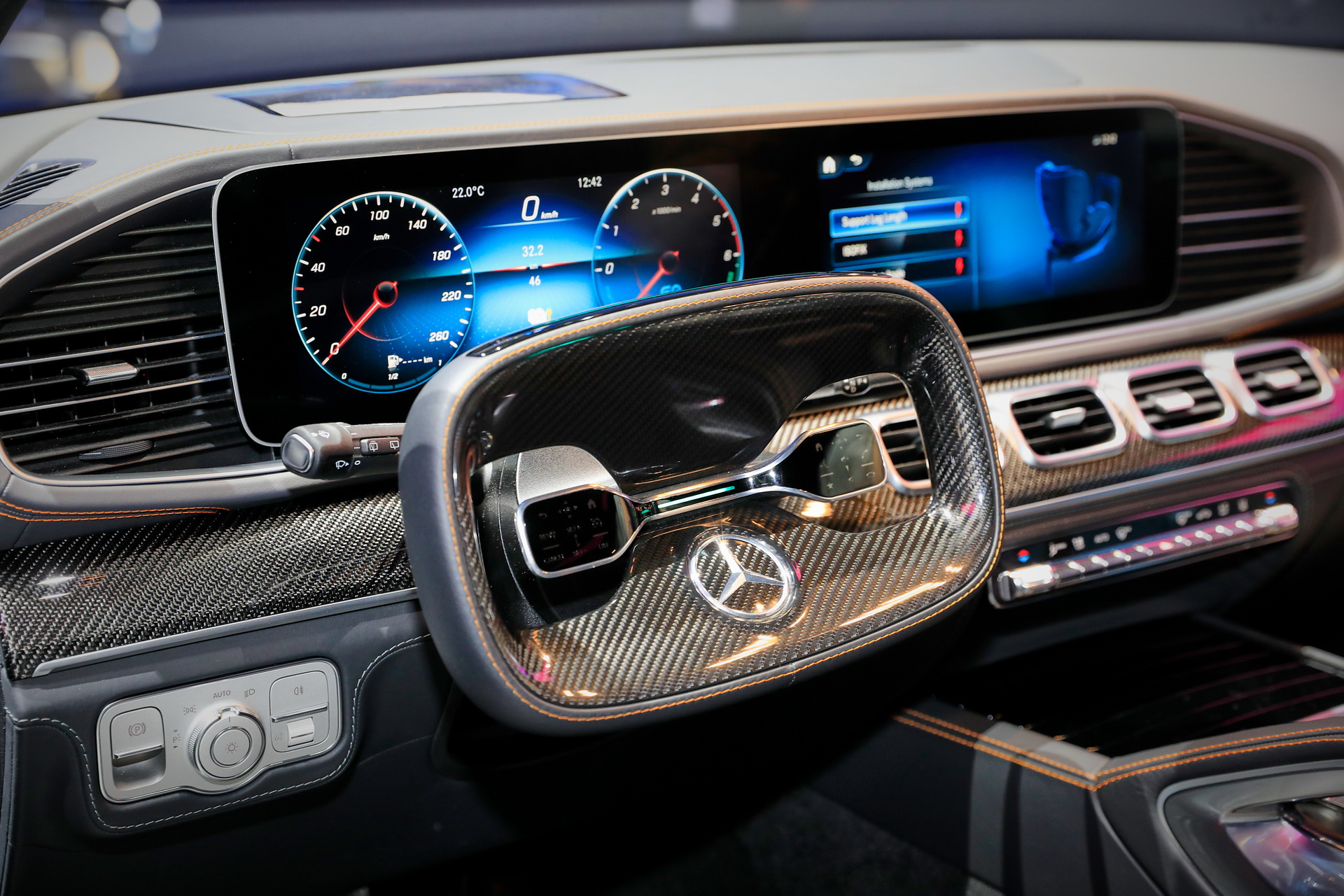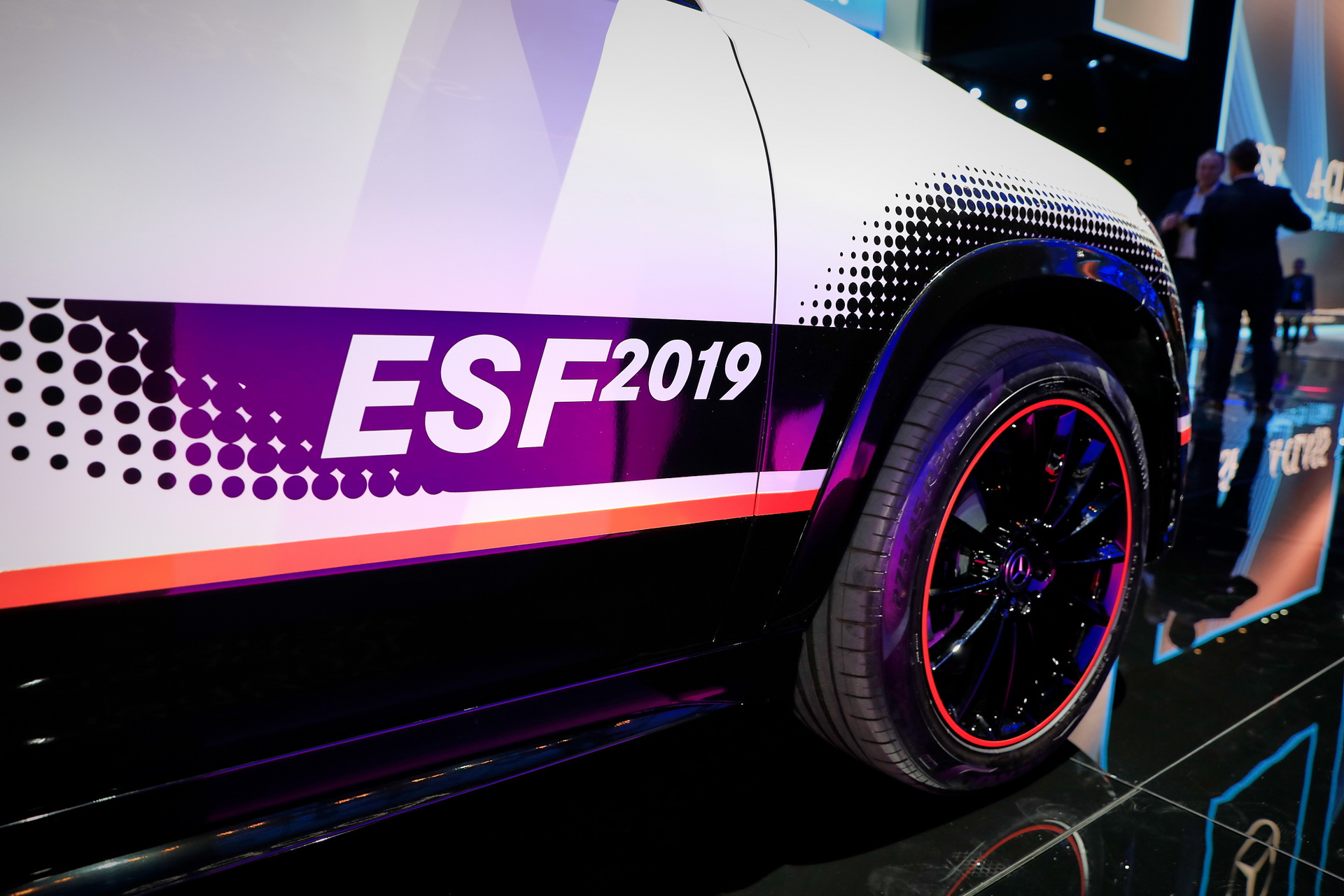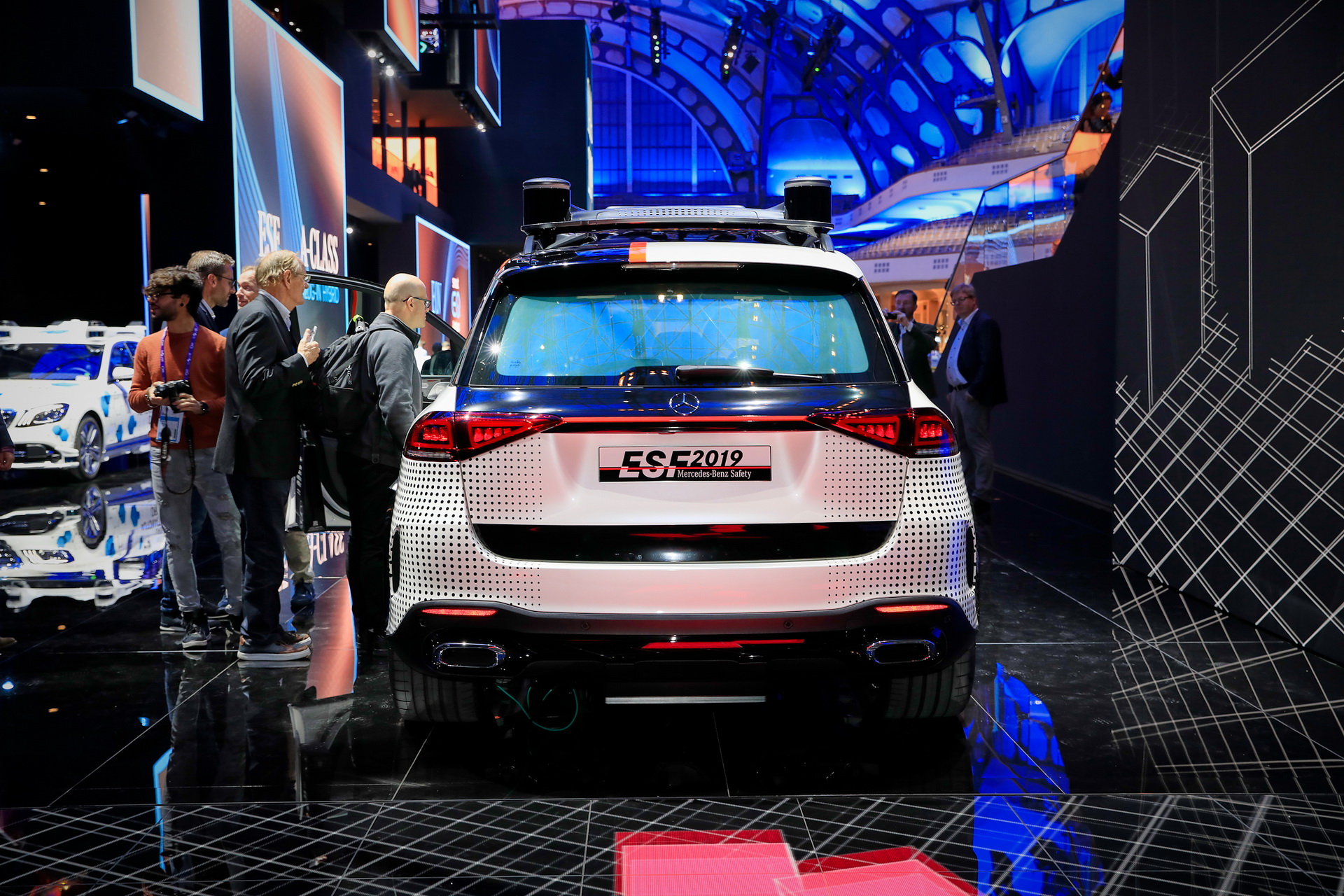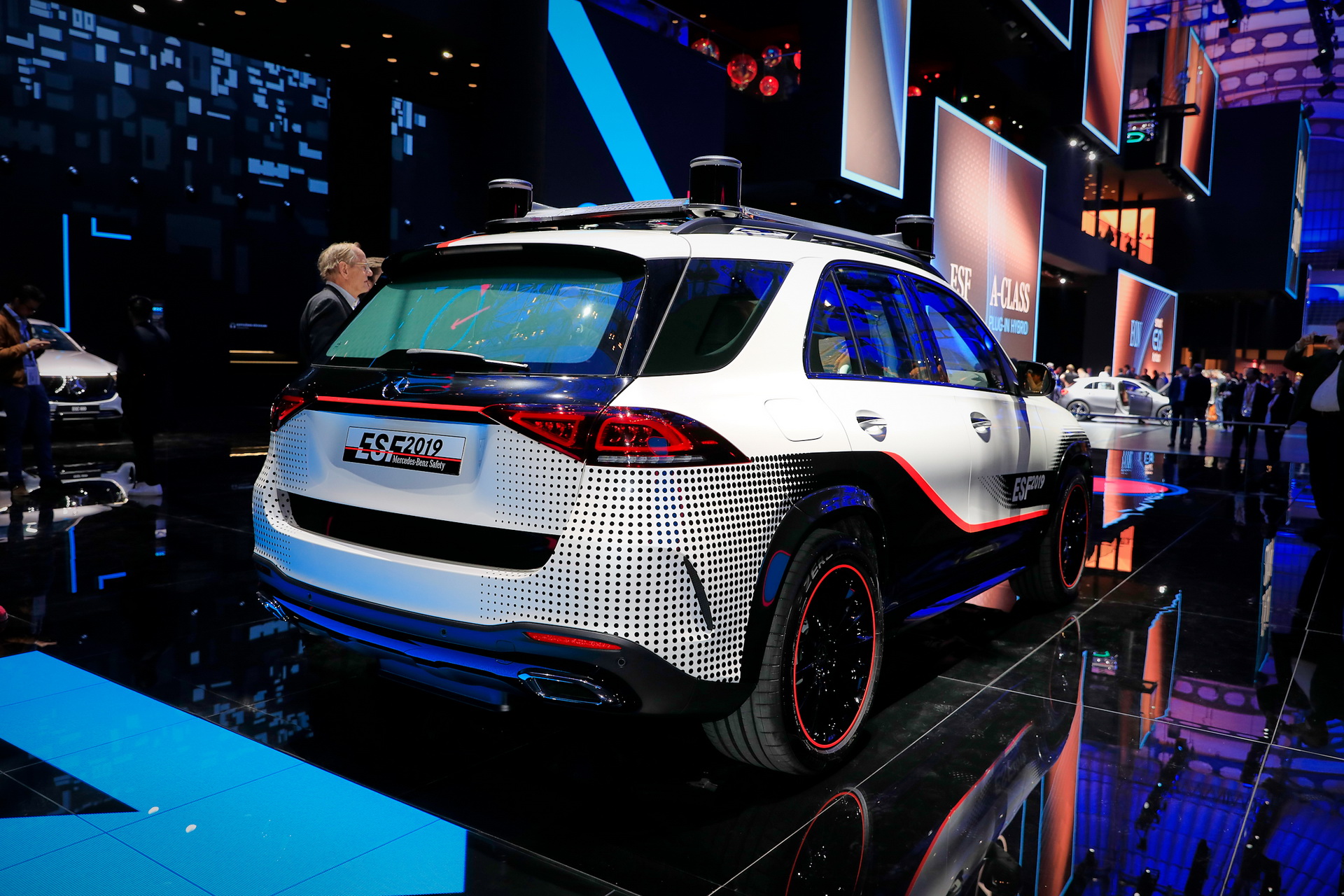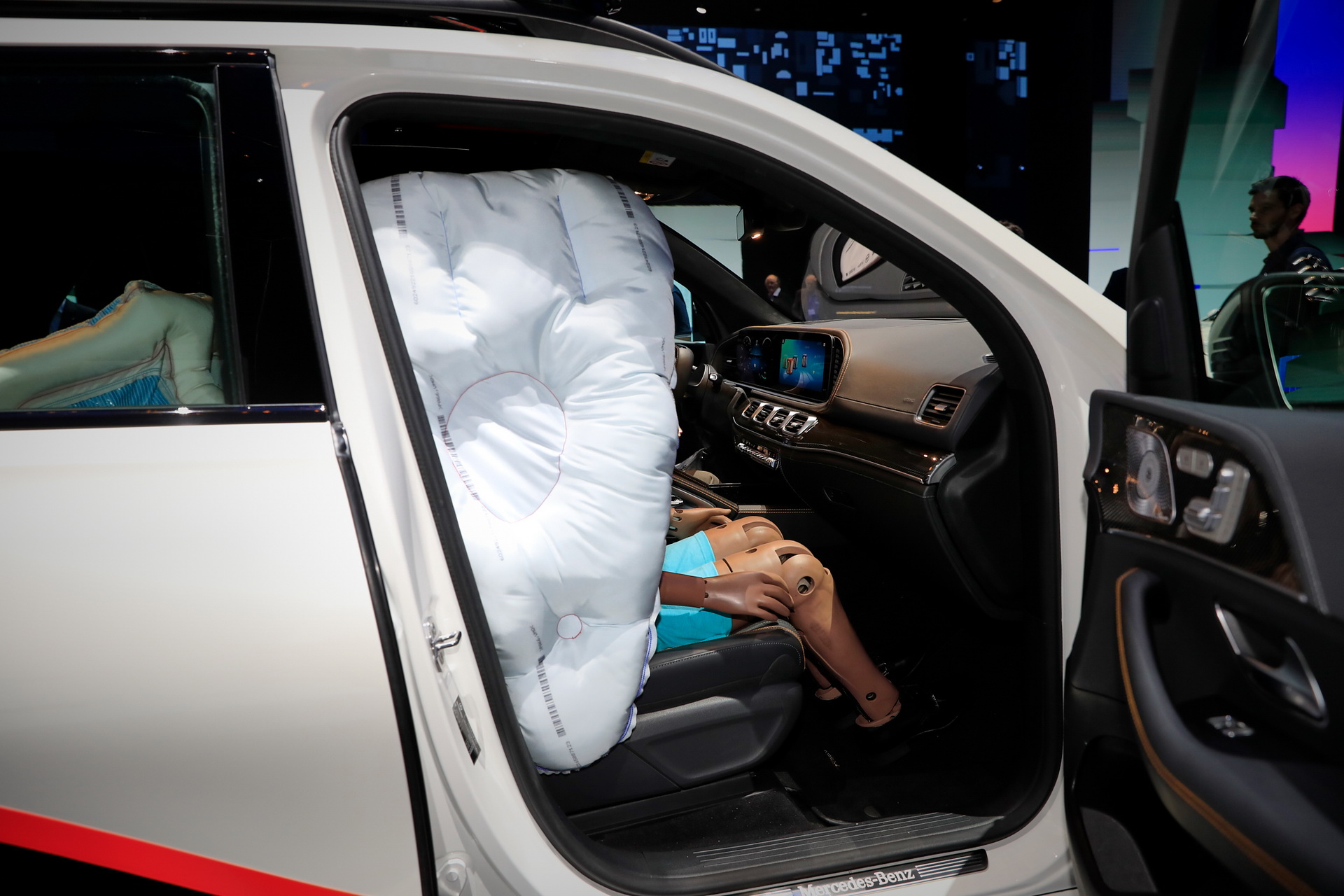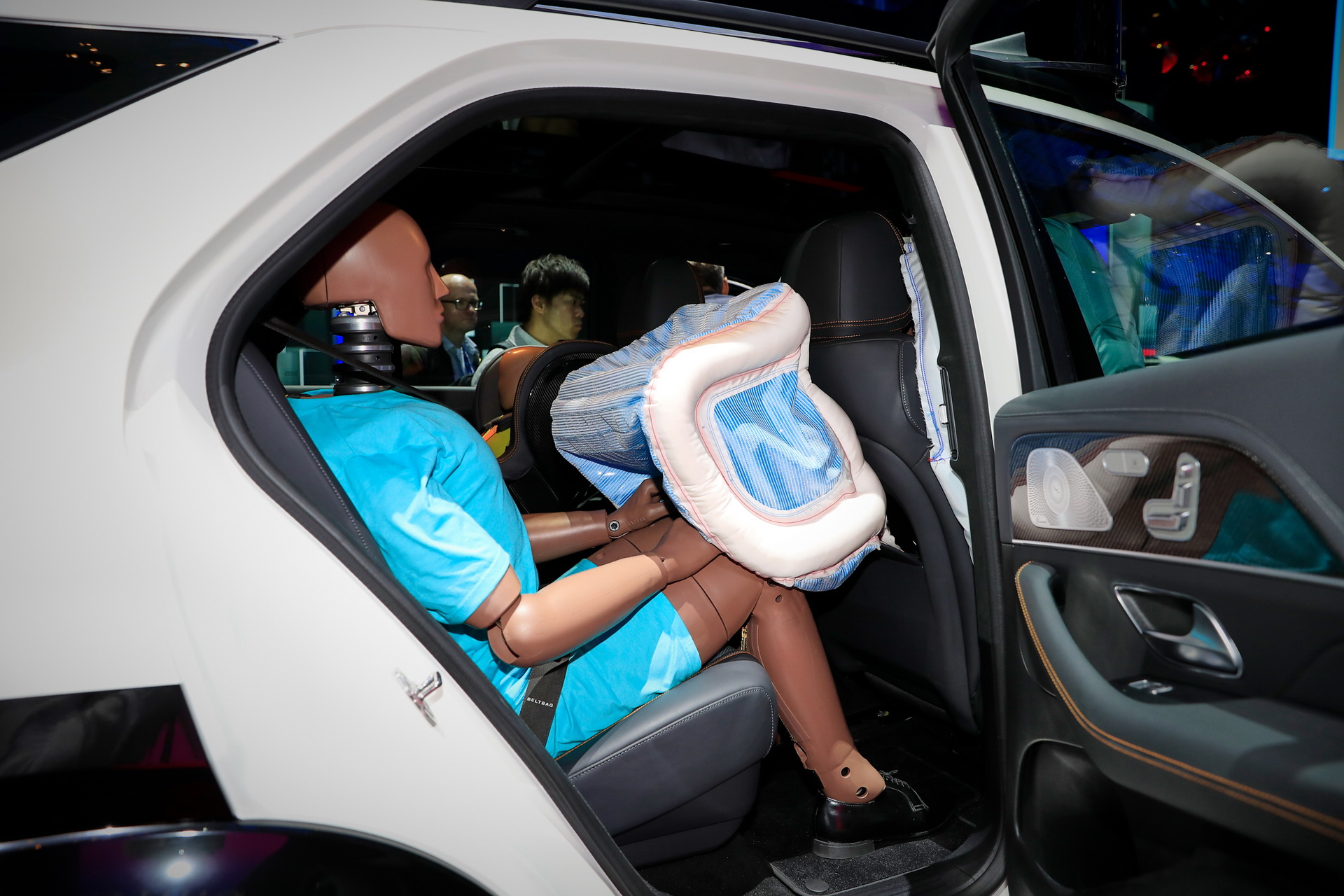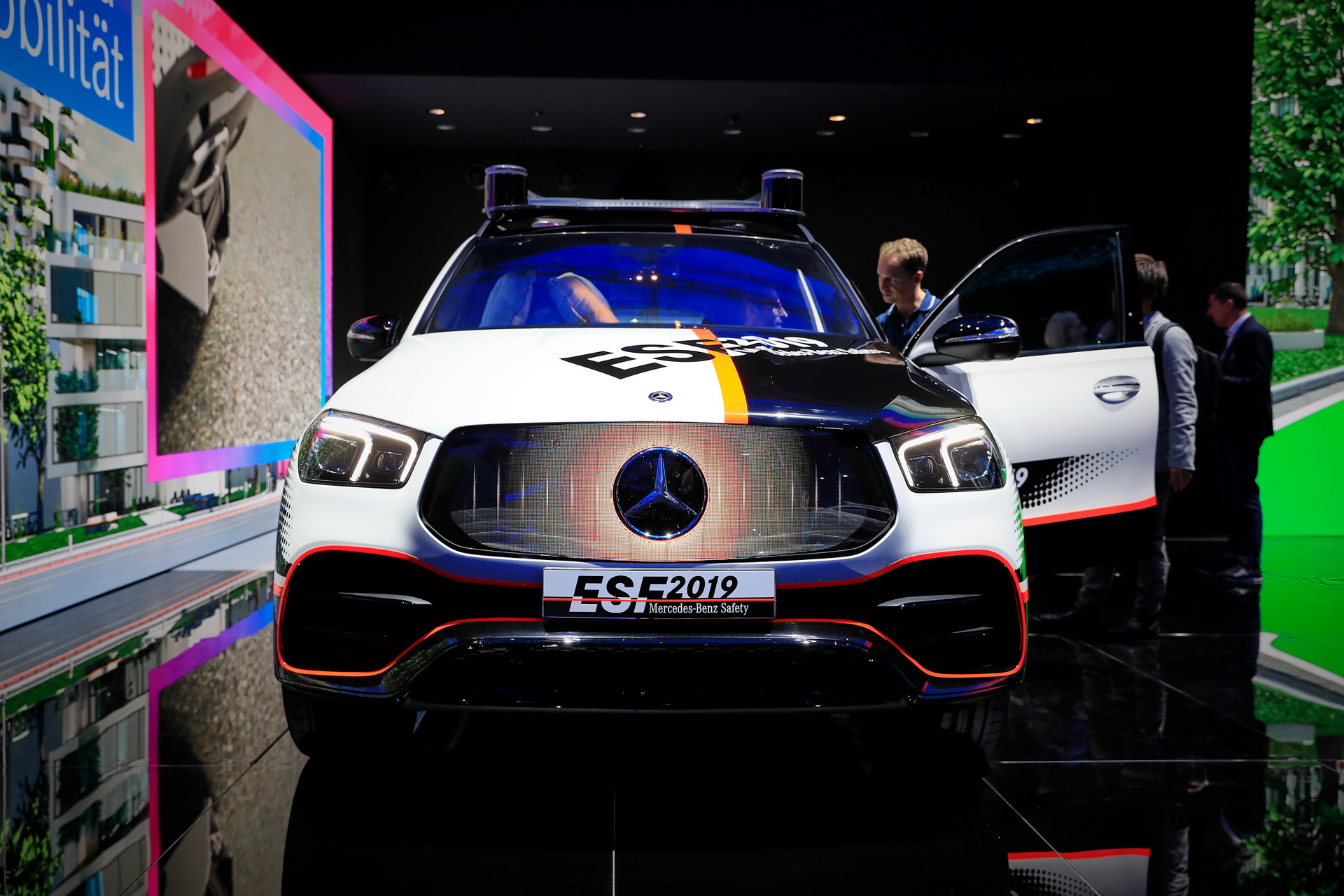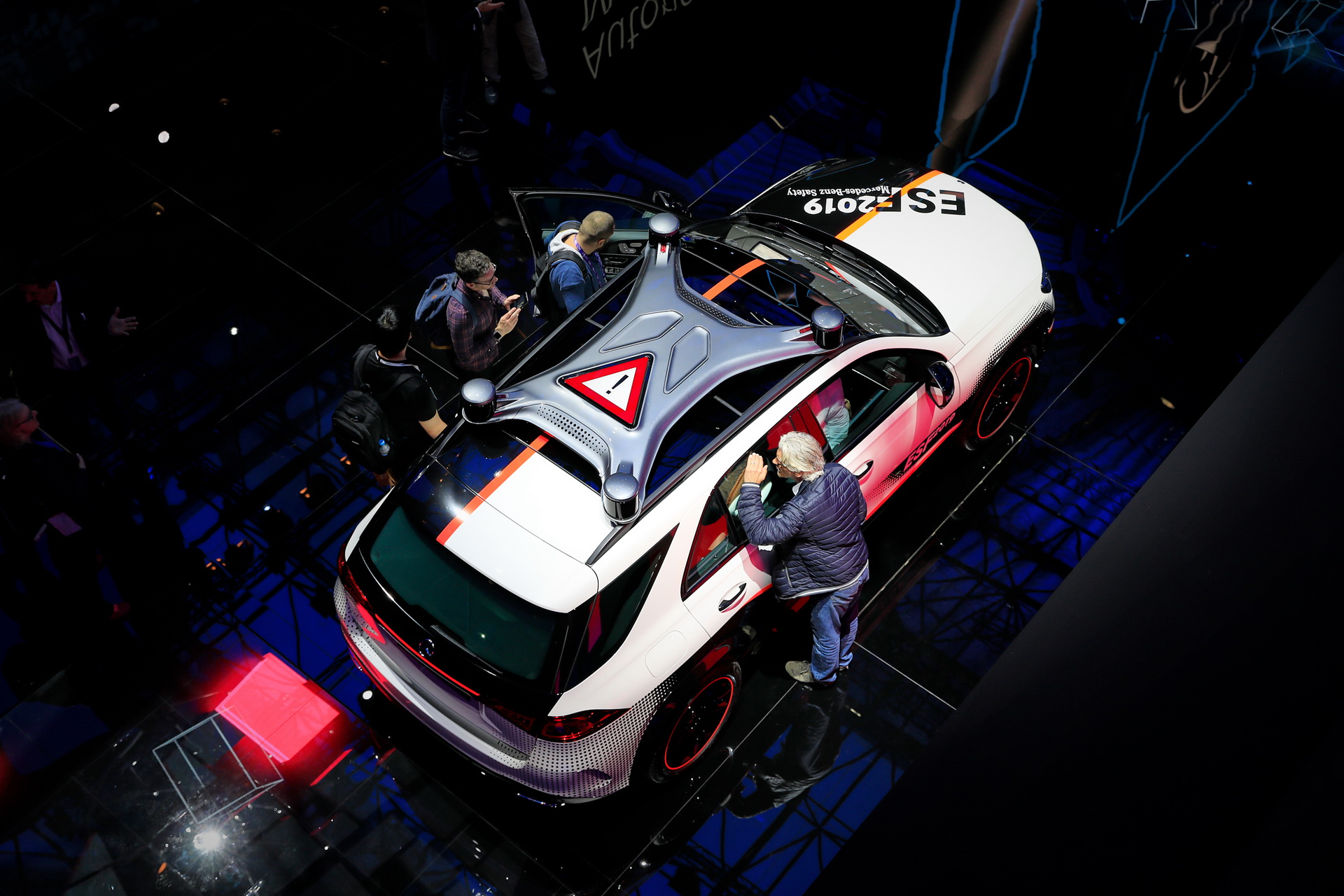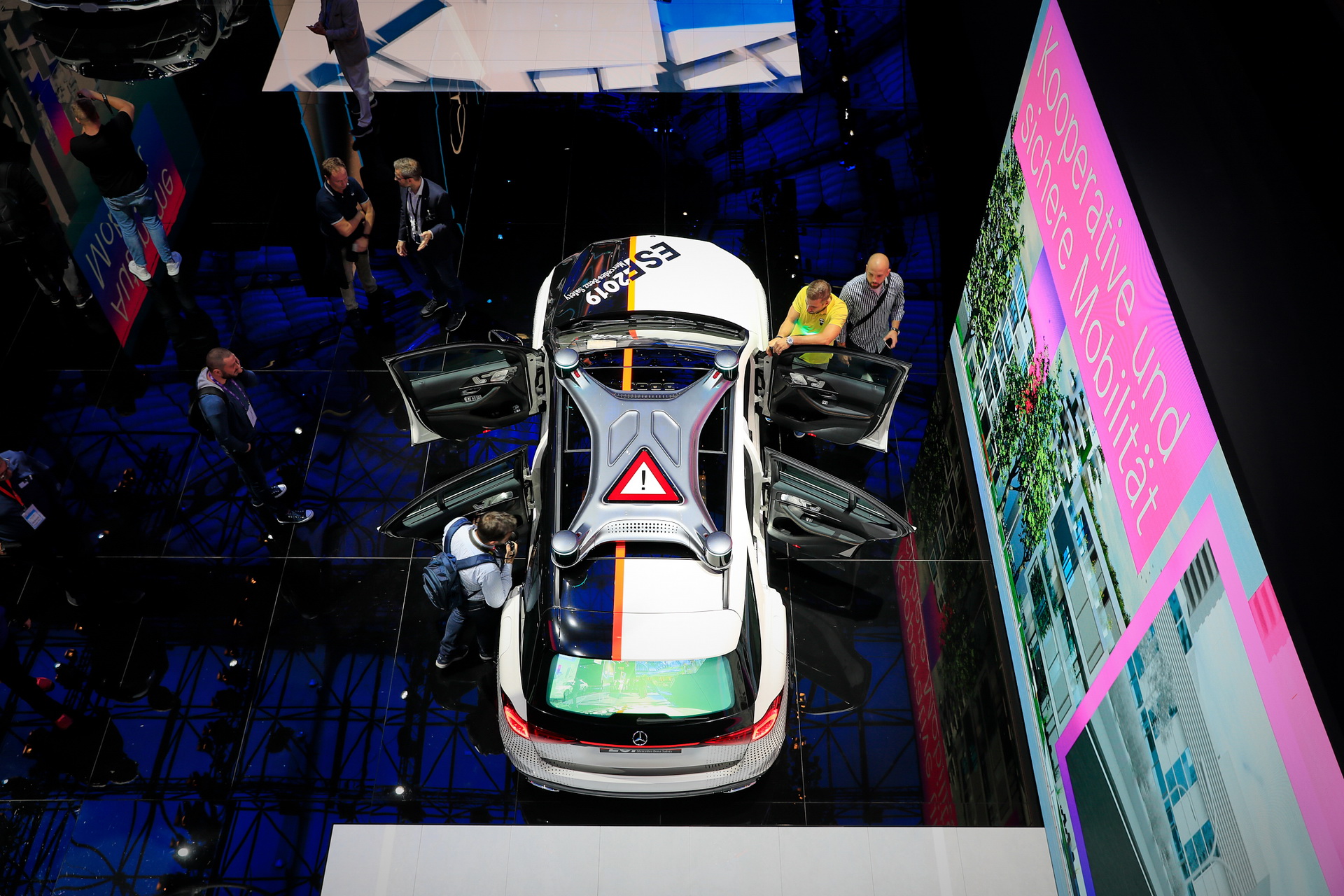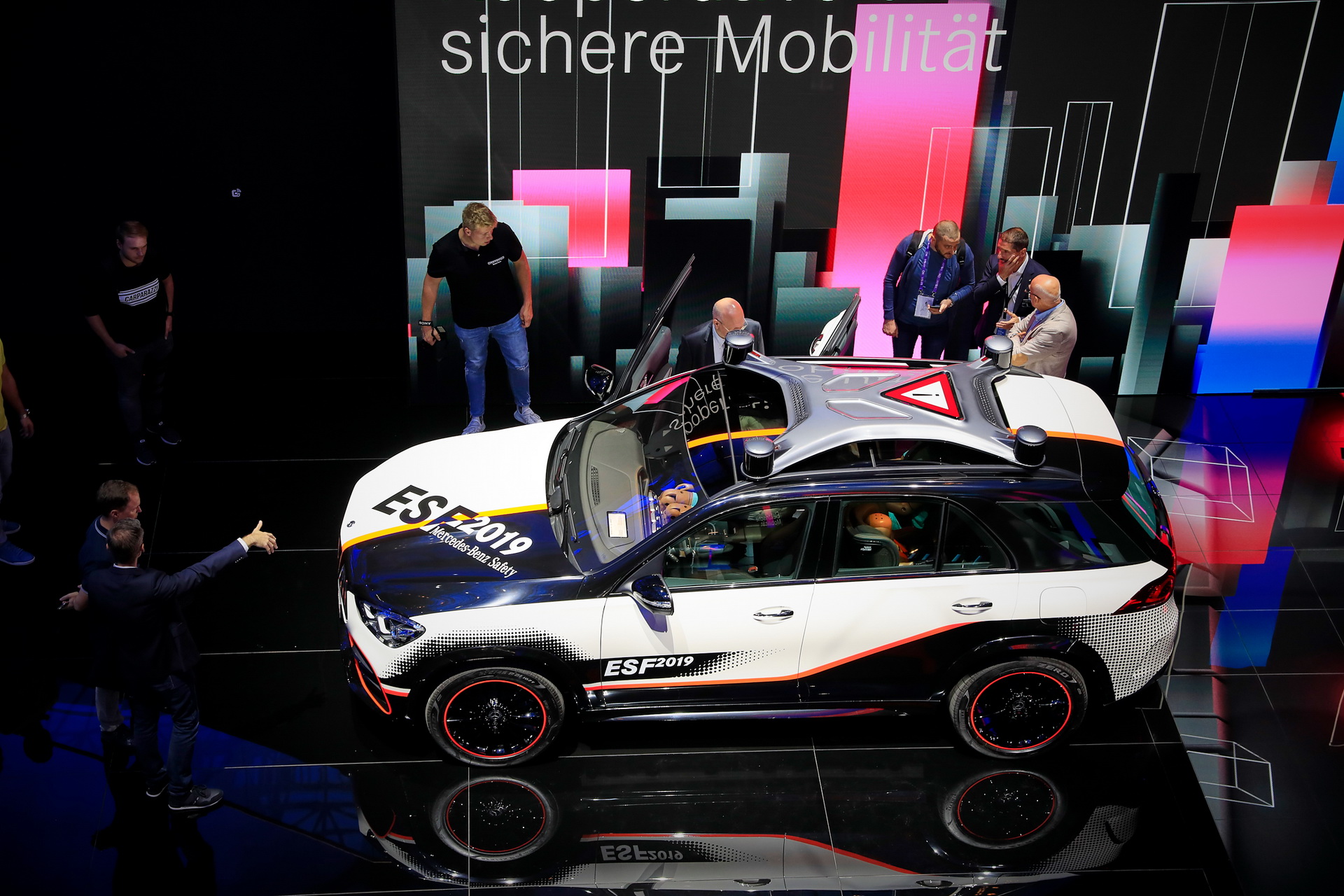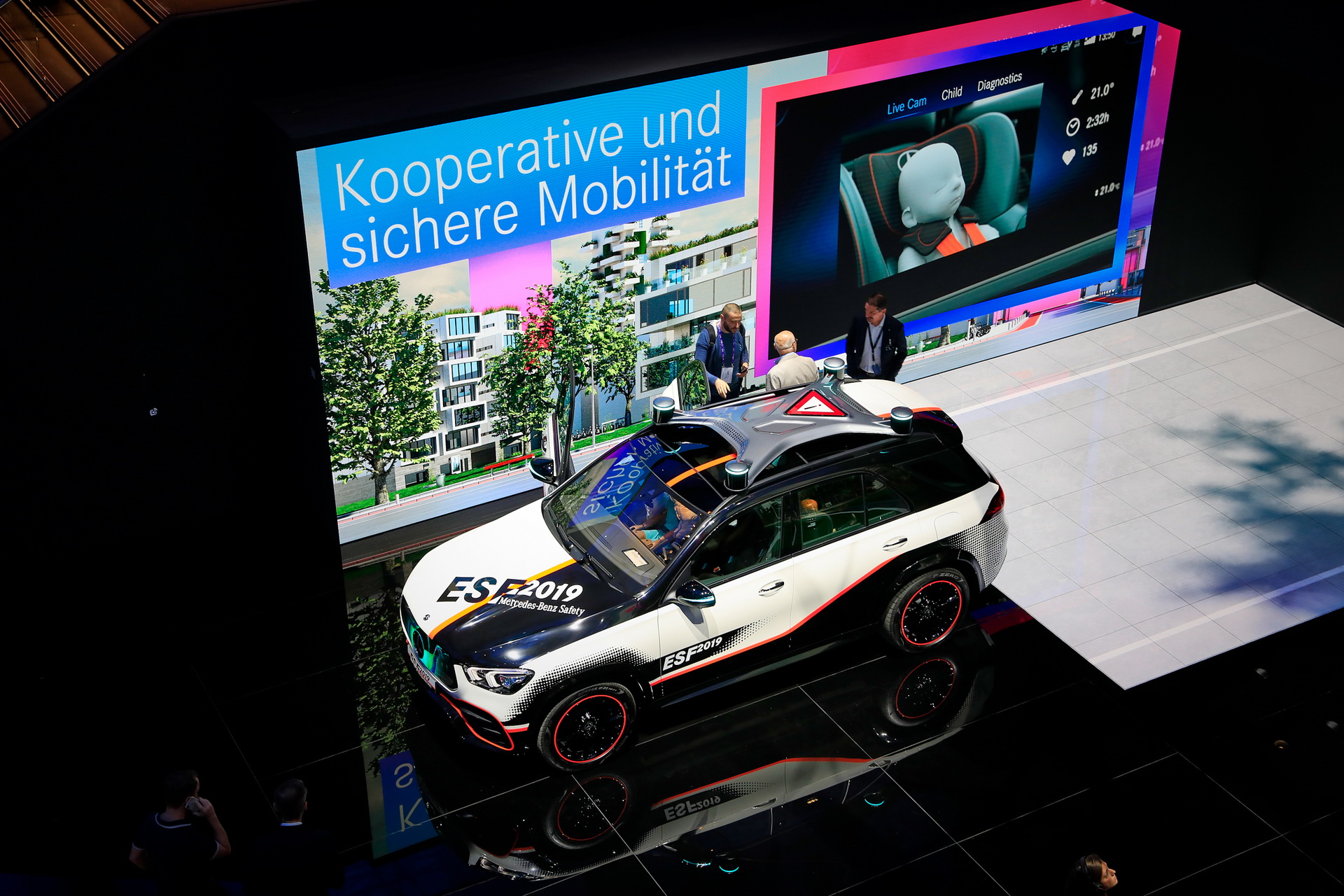The Mercedes-Benz Experimental Safety Vehicle (ESF 2019) is a semi-autonomous GLE crossover powered by a plug-in hybrid drive system. It also boasts innovative safety features inside, and an exterior that can warn fellow drivers of potential hazards.
In many ways, the vehicle serves as a preview of what’s to come from Mercedes and is as of right now on display at the 2019 Frankfurt Motor Show.
“Safety is part of the brand DNA of Mercedes-Benz. We have repeatedly demonstrated that we are not short of ideas in this field since the 1970s, with our Experimental Safety Vehicles. The new ESF 2019 reflects the mobility of the future, and presents a wide variety of innovations which we are currently researching and developing. And I can already say this much: some of the functions are very close to series production,” said Daimler boss Ola Källenius.
The ESF 2019 comes with over a dozen innovations aimed at protecting not just occupants, but other drivers too.
For example, when the vehicle is in fully-automated mode, the steering wheel (smaller and futuristic) and pedals are retracted in order to reduce the risk of injury in the event of an impact. Attention was also given to the restraints and airbags, which now feature alternative installation spaces (driver airbag is in the dashboard, integral sidebag in the side bolsters of the seat backrests).
Other interesting tech features include a revolutionary headlight technology called Digital Light, with a dazzle-free HD quality high beam and a resolution of more than two million pixels. The car also boasts a Pre-Safe Child system, where the seat belt is preventively tensioned and side-mounted impact protection elements are extended before a crash.
Also read: Mercedes GLE and GLC Plug-In Hybrids Unveiled, Offer Electric-Only Range Of Up To 66 Miles
Still not impressed? Well, how about a small robot that automatically emerges from the SUV’s rear section after a crash, positioning itself as at the road side as a warning triangle. So in a way, ESF 2019 comes with its own little Transformer.
“Safety continues to be our core brand value,” said Prof. Dr.-Ing. Rodolfo Schöneburg, Mercedes’ head of vehicle safety. “The great advantage of automating driving functions is that in the future, fewer accidents will be caused by driver error. However, fully-automated and driverless vehicles also come up against physical limits, and there will undoubtedly be mixed traffic consisting of automated and non-automated vehicles for many years.”
Also impressive are the Pre-Safe functions, rear airbag with its new inflation concept and the Active Brake Assist. The first uses a belt tensioner to warn the driver that they might have underestimated an approaching bend (Pre-Safe Curve), while the Pre-Safe Side Lights with electro-luminescent paint can “defuse potentially hazardous situations.” Aside from the new rear airbag, rear seat passengers also get belt-feeders, belt buckle illumination, USB belt buckles and belt heating.
Active Safety: “Active Brake Assist with extended functions in the ESF 2019 provides additional protection, especially in potentially dangerous traffic situations with unprotected road users. When turning, it now also detects pedestrians and cyclists moving in parallel to the original direction of travel. If a collision with unprotected road users crossing the road into which the vehicle is turning is imminent, the driver receives a visual and audible warning. Autonomous braking is initiated if the driver fails to react. The same also applies if there are any cyclists in the blind spot when turning to the right. If there is a risk of collision with cross-traffic when turning off or crossing a road, the system now prevents the driver from moving off and, if necessary, stops the vehicle, including from walking speed, by means of autonomous braking. The 360° pedestrian protection system warns and assists while parking and manoeuvring if there is a risk of collision with more vulnerable road users (pedestrians, cyclists), right up to autonomous braking.”
Over the years, Mercedes have built over 30 experimental vehicles, four of which have since been presented to the public: ESF 5, ESF 13 (both based on the W114), ESF 22 and ESF 24 (both based on the W116 S-Class).
The direct predecessor to the ESF 2019 was the ESF 2009, which debuted numerous innovations that have since made it into production, among them the beltbag, Pre-Safe Impulse Side and Active High Beam Assist Plus.







